Spring Boot 整合 Redis,使用 RedisTemplate 客户端
文章目录
- 一、SpringBoot 整合 Redis
- 1.1 整合 Redis 步骤
- 1.1.1 添加依赖
- 1.1.2 yml 配置文件
- 1.1.3 Config 配置文件
- 1.1.4 使用示例
- 1.2 RedisTemplate 概述
- 1.2.1 RedisTemplate 简介
- 1.2.2 RedisTemplate 功能
- 二、RedisTemplate API
- 2.1 RedisTemplate 公共 API
- 2.2 String 类型 API
- 2.1.1 添加缓存
- 2.1.2 删除缓存
- 2.1.3 修改缓存
- 2.1.4 其他操作
- 2.3 Hash 类型 API
- 2.3.1 添加缓存
- 2.3.2 删除缓存
- 2.3.3 获取缓存
- 2.3.4 其他操作
- 2.4 List 类型 API
- 2.4.1 添加缓存
- 2.4.2 删除缓存
- 2.4.3 获取缓存
- 2.5 Set 类型 API
- 2.5.1 添加缓存
- 2.5.2 删除缓存
- 2.5.3 获取缓存
- 2.5.4 其他操作
- 2.6 ZSet 类型 API
- 2.6.1 添加缓存
- 2.6.2 删除缓存
- 2.6.3 获取缓存
- 三、RedisUtil 工具类封装
一、SpringBoot 整合 Redis
1.1 整合 Redis 步骤
1.1.1 添加依赖
redis 的依赖:
<dependency><groupId>org.springframework.boot</groupId><artifactId>spring-boot-starter-data-redis</artifactId>
</dependency>
1.1.2 yml 配置文件
server:port: 8070spring:# redisredis:host: localhostport: 6379password:database: 0
1.1.3 Config 配置文件
@Configuration
public class RedisConfig {@Beanpublic RedisTemplate<String, Object> redisTemplate(RedisConnectionFactory factory) {RedisTemplate<String, Object> redisTemplate = new RedisTemplate<>();redisTemplate.setConnectionFactory(factory);redisTemplate.setKeySerializer(new StringRedisSerializer());//使用Jackson2JsonRedisSerializer来序列化和反序列化redis的value值redisTemplate.setValueSerializer(new Jackson2JsonRedisSerializer<>(Object.class));redisTemplate.afterPropertiesSet();return redisTemplate;}}
1.1.4 使用示例
注入 RedisTemplate,即可操作 Redis,简单示例如下:
@RunWith(SpringRunner.class)
@SpringBootTest
public class RedisUtilTest {@Autowiredprivate RedisTemplate<String, Object> redisTemplate;@Testpublic void test() {ValueOperations<String, Object> operations = redisTemplate.opsForValue();operations.set("key1","value1");operations.set("key1","value1");operations.set("key1","value1");Object object = operations.get("key1");System.out.println(object);}
1.2 RedisTemplate 概述
1.2.1 RedisTemplate 简介
RedisTemplate 是 Spring Data Redis 项目的一部分,旨在简化在Java应用程序中使用 Redis 的过程。它提供了一组简单的方法,可以在 Redis 数据库中存储和获取各种类型的数据,包括字符串、散列、列表、集合、有序集合等。
此外,RedisTemplate 还提供了许多其他功能,如事务支持、发布/订阅、消息队列等。
以下是 RedisTemplate 的一些主要特点:
- 简化 Redis 访问:通过提供简单的方法和模板,RedisTemplate 简化了对 Redis 数据库的访问。它抽象了 Redis 底层的一些细节,使得开发者可以专注于业务逻辑。
- 类型安全:RedisTemplate 支持类型安全的操作,这意味着编译器可以检查操作的类型是否正确,从而减少了运行时错误。
- 事务支持:RedisTemplate 提供了事务支持,确保在执行多个操作时,要么所有操作都成功,要么回滚。
- 发布/订阅和消息队列:RedisTemplate 提供了发布/订阅和消息队列的功能,使得应用程序可以异步接收和处理消息。
- 集成测试:RedisTemplate 提供了一些用于集成测试的工具和方法,使得开发者可以方便地对 Redis 数据库进行单元测试和集成测试。
RedisTemplate 部分源码:
public class RedisTemplate<K, V> extends RedisAccessor implements RedisOperations<K, V>, BeanClassLoaderAware {private boolean enableTransactionSupport = false;private boolean exposeConnection = false;private boolean initialized = false;private boolean enableDefaultSerializer = true;private @Nullable RedisSerializer<?> defaultSerializer;private @Nullable ClassLoader classLoader;// 序列化属性@SuppressWarnings("rawtypes") private @Nullable RedisSerializer keySerializer = null;@SuppressWarnings("rawtypes") private @Nullable RedisSerializer valueSerializer = null;@SuppressWarnings("rawtypes") private @Nullable RedisSerializer hashKeySerializer = null;@SuppressWarnings("rawtypes") private @Nullable RedisSerializer hashValueSerializer = null;private RedisSerializer<String> stringSerializer = RedisSerializer.string();private @Nullable ScriptExecutor<K> scriptExecutor;// 相关操作属性private final ValueOperations<K, V> valueOps = new DefaultValueOperations<>(this);private final ListOperations<K, V> listOps = new DefaultListOperations<>(this);private final SetOperations<K, V> setOps = new DefaultSetOperations<>(this);private final StreamOperations<K, ?, ?> streamOps = new DefaultStreamOperations<>(this, new ObjectHashMapper());private final ZSetOperations<K, V> zSetOps = new DefaultZSetOperations<>(this);private final GeoOperations<K, V> geoOps = new DefaultGeoOperations<>(this);private final HyperLogLogOperations<K, V> hllOps = new DefaultHyperLogLogOperations<>(this);private final ClusterOperations<K, V> clusterOps = new DefaultClusterOperations<>(this);// 构造函数public RedisTemplate() {}
}
1.2.2 RedisTemplate 功能
RedisTemplate 支持 Redis 的五种基本数据类型,并对其进行了封装,RedisTemplate 对应的封装如下:
String 类型:
ValueOperations<String, Object> valueOperations = redisTemplate.opsForValue();
Hash 类型:
HashOperations<String, Object, Object> hashOperations = redisTemplate.opsForHash();
List 类型:
ListOperations<String, Object> listOperations = redisTemplate.opsForList();
Set 类型:
SetOperations<String, Object> setOperations = redisTemplate.opsForSet();
ZSet 类型:
ZSetOperations<String, Object> zSetOperations = redisTemplate.opsForZSet();
另外,RedisTemplate 还提供了以下封装,用于 Redis 的额外操作:
redisTemplate.opsForCluster():用于操作 Redis Cluster。Redis Cluster 是一种分布式 Redis 解决方案,它允许将多个 Redis 节点组织成一个集群,并提供数据分片和故障转移等功能。
ClusterOperations<String, Object> clusterOperations = redisTemplate.opsForCluster();
redisTemplate.opsForGeo():Geo数据类型允许存储地理位置相关的数据,并执行基于地理位置的查询和计算。
GeoOperations<String, Object> geoOperations = redisTemplate.opsForGeo();
redisTemplate.opsForHyperLogLog():HyperLogLog数据类型是一种用于估算集合中元素数量的数据结构。它通过使用一种特殊的算法,可以在非常小的内存消耗下估算出集合中元素的数量。
HyperLogLogOperations<String, Object> hyperLogLogOperations = redisTemplate.opsForHyperLogLog();
redisTemplate.opsForStream():Stream数据类型是一种持久化的消息队列,它可以保存长期的消息数据,并且支持消费者组和消息的消费确认等功能。
StreamOperations<String, Object, Object> streamOperations = redisTemplate.opsForStream();
二、RedisTemplate API
2.1 RedisTemplate 公共 API
Boolean delete(K key):根据缓存的键 key 删除整个缓存。
- 参数:
- key:缓存的键。
- 返回值:返回 Boolean 类型,删除成功为 true,删除失败为 false。
示例:
String key = "key1";
Boolean result = redisTemplate.delete(key);
Long delete(Collection<K> keys)::根据缓存的键集合 keys 批量删除整个缓存。
- 参数:
- keys:缓存的键集合。
- 返回值:返回删除成功的数量,Long 类型。
示例:
List<String> keys = Arrays.asList("key1", "key2", "key3");
Long result = redisTemplate.delete(keys);
Boolean hasKey(K key):根据缓存的键 key 判断缓存是否存在。
- 参数:
- key:缓存的键。
- 返回值:返回 Boolean 类型,存在为 true,不存在为 false。
示例:
String key = "key1";
Boolean result = redisTemplate.hasKey(key);
Set<K> keys(K pattern):根据匹配规则,匹配出满足条件的所有缓存键
- 参数:
- pattern:匹配规则。
- 返回值:返回 Set 类型,满足匹配规则的缓存键集合。
示例:
String pattern = "key*";
Set<String> result = redisTemplate.keys(pattern);
System.out.println(result);
输出结果:
[key1, key2, key3]
void rename(K oldKey, K newKey):重命名缓存键 oldKey 为 newKey。
- 参数:
- oldKey:原缓存键名称。
- newKey:新缓存键名称。
示例:
String oldKey= "key1";
String newKey= "key-new";
redisTemplate.rename(oldKey, newKey);
2.2 String 类型 API
2.1.1 添加缓存
void set(K key, V value):添加缓存。
- 参数:
- key:键
- value:值
示例:
ValueOperations<String, Object> valueOperations = redisTemplate.opsForValue();
valueOperations.set("string-key-1","string-value-1");
valueOperations.set("string-key-2","string-value-2");
valueOperations.set("string-key-3","string-value-3");
System.out.println("string-key-1: "valueOperations.get("string-key-1"));
System.out.println("string-key-2: "valueOperations.get("string-key-2"));
System.out.println("string-key-3: "valueOperations.get("string-key-3"));
输出结果:
string-key-1: string-value-1
string-key-2: string-value-2
string-key-3: string-value-3
void set(K key, V value, long timeout, TimeUnit unit):添加缓存,并设定过期时间。
- 参数:
- key:键
- value:值
- timeout:过期时间
- unit:时间单位
示例:
ValueOperations<String, Object> valueOperations = redisTemplate.opsForValue();
valueOperations.set("string-key-1", "string-value-1", 2000, TimeUnit.MILLISECONDS);
valueOperations.set("string-key-2", "string-value-2", 10, TimeUnit.SECONDS);
valueOperations.set("string-key-3", "string-value-3", 7, TimeUnit.DAYS);
default void set(K key, V value, Duration timeout):添加缓存,并设定过期时间。
- 参数:
- key:键
- value:值
- timeout:超时时间,自带有单位,部分方法如下:
Duration.ofDays(long days)Duration.ofHours(long hours)Duration.ofMinutes(long minutes)Duration.ofSeconds(long seconds)Duration.ofSeconds(long seconds, long nanoAdjustment)Duration.ofMillis(long millis)Duration.ofNanos(long nanos)Duration.of(long amount, TemporalUnit unit)
示例:
ValueOperations<String, Object> valueOperations = redisTemplate.opsForValue();
valueOperations.set("string-key-1", "string-value-1", Duration.ofMillis(2000));
valueOperations.set("string-key-2", "string-value-2", Duration.ofSeconds(5));
valueOperations.set("string-key-3", "string-value-3", Duration.ofDays(7));
Boolean setIfAbsent(K key, V value):添加缓存,key 不存在则添加,否则添加失败。
- 参数:
- key:键
- value:值
- 返回值:返回 Boolean 类型,key 不存在时添加成功返回true,key 存在时添加失败返回false。
示例:
ValueOperations<String, Object> valueOperations = redisTemplate.opsForValue();
Boolean result1 = valueOperations.setIfAbsent("string-key-1", "string-value-1");
Boolean result2 = valueOperations.setIfAbsent("string-key-4", "string-value-4");
System.out.println(result1);
System.out.println(result2);
输出结果:
false
true
Boolean setIfAbsent(K key, V value, long timeout, TimeUnit unit):添加缓存并设定过期时间,key 不存在则添加,否则添加失败。
- 参数:
- key:键
- value:值
- timeout:过期时间
- unit:时间单位
- 返回值:返回 Boolean 类型,key 不存在时添加成功返回true,key 存在时添加失败返回false。
示例:
ValueOperations<String, Object> valueOperations = redisTemplate.opsForValue();
Boolean result1 = valueOperations.setIfAbsent("string-key-1", "string-value-1", 2000, TimeUnit.MILLISECONDS);
Boolean result2 = valueOperations.setIfAbsent("string-key-4", "string-value-4", 2000, TimeUnit.MILLISECONDS);
default Boolean setIfAbsent(K key, V value, Duration timeout):添加缓存并设定过期时间,key 不存在则添加,否则添加失败。
- 参数:
- key:键
- value:值
- timeout:超时时间,自带有单位
- 返回值:返回 Boolean 类型,key 不存在时添加成功返回true,key 存在时添加失败返回false。
示例:
ValueOperations<String, Object> valueOperations = redisTemplate.opsForValue();
Boolean result1 = valueOperations.setIfAbsent("string-key-1", "string-value-1", Duration.ofMillis(2000));
Boolean result2 = valueOperations.setIfAbsent("string-key-4", "string-value-4", Duration.ofMillis(2000));
void multiSet(Map<? extends K, ? extends V> map):批量添加缓存,有重复的key直接覆盖原来的缓存内容
- 参数:
- map:要添加的缓存内容键值对集合
示例:
Map<String,Object> map = new HashMap<>();
map.put("string-key-1", "string-value-1");
map.put("string-key-2", "string-value-2");
map.put("string-key-3", "string-value-3");
ValueOperations<String, Object> valueOperations = redisTemplate.opsForValue();
valueOperations.multiSet(map);
Boolean multiSetIfAbsent(Map<? extends K, ? extends V> map):批量添加缓存,当 key 不存在的时候才添加,只要有一个 key 已存在则添加失败。
- 参数:
- map:要添加的缓存内容键值对集合
- 返回值:返回 Boolean 类型,添加成功返回 true,失败则为 false
示例:
Map<String,Object> map = new HashMap<>();
map.put("string-key-1", "string-value-1");
map.put("string-key-2", "string-value-2");
map.put("string-key-3", "string-value-3");
ValueOperations<String, Object> valueOperations = redisTemplate.opsForValue();
Boolean result = valueOperations.multiSetIfAbsent(map);
V getAndSet(K key, V value):给指定 key 的缓存设置新值,并返回原来的旧值。如果 key 不存在,则直接添加这个缓存,但返回值为 null
- 参数:
- key:指定缓存键
- value:新值
- 返回值:返回原来的旧值。
示例:
ValueOperations<String, Object> valueOperations = redisTemplate.opsForValue();
valueOperations.set("s-key", "s-value");
System.out.println("s-key : " + valueOperations.get("s-key"));
Object result = valueOperations.getAndSet("s-key", "s-value-new");
System.out.println("result = " + result);
System.out.println("s-key : " + valueOperations.get("s-key"));
// 一个不存在的key
Object result1 = valueOperations.getAndSet("s-key1", "s-value-new1");
System.out.println("result1 = " + result1);
System.out.println("s-key1 : " + valueOperations.get("s-key1"));
输出结果:
s-key : s-value
result = s-value
s-key : s-value-new
result = null
s-key1 : s-value-new1
2.1.2 删除缓存
V get(Object key):根据键 key 获取缓存值,key 不存在则返回 null
- 参数:
- key:缓存键
- 返回值:返回对应的值,key 不存在则返回 null
示例:
ValueOperations<String, Object> valueOperations = redisTemplate.opsForValue();
valueOperations.set("s-key", "s-value-new");
Object result = valueOperations.get("s-key");
System.out.println("result = " + result);
Object result1 = valueOperations.get("s-key-s");
System.out.println("result1 = " + result1);
输出结果:
result = s-value-new
result1 = null
String get(K key, long start, long end):根据键 key 获取缓存值,并根据指定的开始和结束位置截取结果
- 参数:
- key:缓存键
- start:开始位置
- end:结束位置
- 返回值:返回结果,key 不存在则返回 null
示例:
ValueOperations<String, Object> valueOperations = redisTemplate.opsForValue();
valueOperations.set("s-key", "s-value-new");
Object result1 = valueOperations.get("s-key");
Object result2 = valueOperations.get("s-key", 0, -1);
Object result3 = valueOperations.get("s-key", 2, 4);
System.out.println("result1 = " + result1);
System.out.println("result2 = " + result2);
System.out.println("result3 = " + result3);
输出结果:
result1 = s-value-new
result2 = "s-value-new"
result3 = -va
List<V> multiGet(Collection<K> keys):根据键集合 keys 批量获取缓存,键不存在的对应元素返回 null
- 参数:
- keys:缓存键集合
- 返回值:缓存值集合
示例:
ValueOperations<String, Object> valueOperations = redisTemplate.opsForValue();
valueOperations.set("s-key1", "s-value-new1");
valueOperations.set("s-key2", "s-value-new2");
valueOperations.set("s-key3", "s-value-new3");
List<Object> result = valueOperations.multiGet(Arrays.asList("s-key1", "s-key2", "s-key3", "s-key4"));
System.out.println("result = " + result);
输出结果:
result = [s-value-new1, s-value-new2, s-value-new3, null]
2.1.3 修改缓存
void set(K key, V value, long offset):缓存内容替换,用值 value 替换缓存键 key 对应的缓存,指定替换的开始位置 offset。
- 参数:
- key:缓存键
- value:替换值
- offset:偏移位置,即开始位置
示例:
ValueOperations<String, Object> valueOperations = redisTemplate.opsForValue();
valueOperations.set("s-key", "aaabbbcccddd");
Object oldResult = valueOperations.get("s-key");
valueOperations.set("s-key","6666",3);
Object newResult = valueOperations.get("s-key");
System.out.println("oldResult = " + oldResult);
System.out.println("newResult = " + newResult);
输出结果:
oldResult = aaabbbcccddd
newResult = aaa6666ccddd
Integer append(K key, String value):在缓存键 key 对应的缓存内容后面追加值 value,并返回追加值后的缓存值长度。如果 key 不存在,则直接添加这个缓存,返回这个缓存的长度
- 参数:
- key:缓存键
- value:追加值
- 返回值:Integer 类型,返回操作成功后的值的长度
示例:
ValueOperations<String, Object> valueOperations = redisTemplate.opsForValue();
valueOperations.set("s-key", "111222");
Integer result = valueOperations.append("s-key", "aaaa");
System.out.println("result = " + result);
System.out.println("s-key = " + valueOperations.get("s-key-s"));
Integer result1 = valueOperations.append("s-key-s", "aaaa");
System.out.println("result1 = " + result1);
System.out.println("s-key-s = " + valueOperations.get("s-key-s"));
输出结果:
result = 10
s-key = 111222aaaa
result1 = 4
s-key-s = aaaa
2.1.4 其他操作
Boolean setBit(K key, long offset, boolean value):设置缓存键 key 对应缓存的指定位置的 bit 值,用于设置 Redis 中位图(bitmaps)的指定偏移量的值。位图是由位(0或1)组成的数据结构,可以用于表示某个事件的状态或者进行位运算。
- 参数:
- key:缓存键
- offset:要设置的位置。
- value:要设置的值,0 或 1
- 返回值:返回操作结果
示例:
ValueOperations<String, Object> valueOperations = redisTemplate.opsForValue();
Boolean result = valueOperations.setBit("bit-key", 2, true);
Boolean getBit(K key, long offset):获取指定位置的 bit 值
- 参数:
- key:缓存键
- offset:要设置的位置。
- 返回值:返回结果
示例:
ValueOperations<String, Object> valueOperations = redisTemplate.opsForValue();
Boolean result = valueOperations.getBit("bit-key", 2);
Long increment(K key):将缓存键 key 对应的缓存的值增加1,缓存的内容必须为 Integer 类型,否则会出现错误 ERR value is not an integer or out of range。
- 参数:
- key:缓存键
- 返回值:返回增加后的结果
示例:
ValueOperations<String, Integer> valueOperations = redisTemplate.opsForValue();
valueOperations.set("s-key", 1);
Long result = valueOperations.increment("s-key");
System.out.println("result = " + result);
System.out.println("s-key = " + valueOperations.get("s-key"));
Long increment(K key, long delta):将缓存键 key 对应的缓存的值增加 delta,缓存的内容必须为 Integer 类型,否则会出现错误 ERR value is not an integer or out of range。
- 参数:
- key:缓存键
- delta:增加的值,long 类型
- 返回值:返回增加后的结果
示例:
ValueOperations<String, Integer> valueOperations = redisTemplate.opsForValue();
valueOperations.set("s-key", 1);
Long result = valueOperations.increment("s-key", 2);
System.out.println("result = " + result);
System.out.println("s-key = " + valueOperations.get("s-key"));
Double increment(K key, double delta):将缓存键 key 对应的缓存的值增加 delta,缓存的内容必须为 Integer 类型,否则会出现错误 ERR value is not an integer or out of range。
- 参数:
- key:缓存键
- delta:增加的值,double 类型
- 返回值:返回增加后的结果
示例:
ValueOperations<String, Integer> valueOperations = redisTemplate.opsForValue();
valueOperations.set("s-key", 1);
Doubleresult = valueOperations.increment("s-key", 3.5);
System.out.println("result = " + result);
System.out.println("s-key = " + valueOperations.get("s-key"));
Long decrement(K key):将缓存键 key 对应的缓存的值减少1,缓存的内容必须为 Integer 类型,否则会出现错误 ERR value is not an integer or out of range。
- 参数:
- key:缓存键
- 返回值:返回减少后的结果
示例:
ValueOperations<String, Integer> valueOperations = redisTemplate.opsForValue();
valueOperations.set("s-key", 1);
Long result = valueOperations.decrement("s-key");
System.out.println("result = " + result);
System.out.println("s-key = " + valueOperations.get("s-key"));
Long decrement(K key, long delta):将缓存键 key 对应的缓存的值减少 delta,缓存的内容必须为 Integer 类型,否则会出现错误 ERR value is not an integer or out of range。
- 参数:
- key:缓存键
- delta:减少的值,long 类型
- 返回值:返回减少后的结果
示例:
ValueOperations<String, Integer> valueOperations = redisTemplate.opsForValue();
valueOperations.set("s-key", 1);
Long result = valueOperations.decrement("s-key", 2);
System.out.println("result = " + result);
System.out.println("s-key = " + valueOperations.get("s-key"));
Long size(K key):统计缓存键 key 对应缓存的值的大小。
- 参数:
- key:缓存键
- 返回值:返回统计结果
示例:
ValueOperations<String, Object> valueOperations = redisTemplate.opsForValue();
System.out.println(valueOperations.size("s-key"));
System.out.println(valueOperations.size("s-key1"));
System.out.println(valueOperations.size("s-key2"));
2.3 Hash 类型 API
2.3.1 添加缓存
void put(H key, HK hashKey, HV value):添加一个 hash 缓存,key 相同,后者会覆盖前者。
- 参数:
- key:缓存键
- hashKey:缓存 map 的 key
- value:缓存 map 的值
示例:
HashOperations<String, String, String> operations = redisTemplate.opsForHash();
operations.put("H-KEY", "KEY1", "VALUE1");
operations.put("H-KEY", "KEY1", "VALUE11");
operations.put("H-KEY", "KEY2", "VALUE2");
operations.put("H-KEY", "KEY3", "VALUE3");
void putAll(H key, Map<? extends HK, ? extends HV> m):批量添加 hash 缓存。
- 参数:
- key:缓存键
- m:缓存内容,map 形式
示例:
HashOperations<String, String, String> operations = redisTemplate.opsForHash();
Map<String, String> map = new HashMap<String, String>() {{put("key-a", "value-a");put("key-b", "value-b");put("key-c", "value-c");
}};
operations.putAll("H-KEY1", map);
Boolean putIfAbsent(H key, HK hashKey, HV value):添加一个 hash 缓存,缓存的 hashkey 不存在则添加成功,否则添加失败,如果 key 不存在则直接作为新的 hash 缓存添加。
- 参数:
- key:
- 返回值:返回操作结果,成功返回 true,失败为 false
示例:
HashOperations<String, String, String> operations = redisTemplate.opsForHash();
Boolean result1 = operations.putIfAbsent("H-KEY", "KEY3", "VALUE33");
System.out.println(result1);
Boolean result2 = operations.putIfAbsent("H-KEY", "KEY4", "VALUE4");
System.out.println(result2);
Boolean result3 = operations.putIfAbsent("H-KEY-NEW", "KEY-NEW", "VALUE-NEW");
System.out.println(result3);
输出结果:
false
true
true
2.3.2 删除缓存
Long delete(H key, Object... hashKeys):根据缓存键 key 和缓存 map 的 hashKeys 批量删除缓存。
- 参数:
- key:缓存键
- hashKeys:缓存 map 的 hashKey
- 返回值:返回删除结果数量
示例:
HashOperations<String, String, String> operations = redisTemplate.opsForHash();
Long delete1 = operations.delete("H-KEY","KEY1");
System.out.println("delete1 = " + delete1);
Long delete2 = operations.delete("H-KEY","KEY1","KEY2","KEY3");
System.out.println("delete1 = " + delete2);
输出结果:
delete1 = 1
delete2 = 2
2.3.3 获取缓存
HV get(H key, Object hashKey):根据缓存 key 和 hashKey 获取一个缓存值。
- 参数:
- key:缓存键
- hashKey:缓存 map 的键
- 返回值:返回获取的缓存值
示例:
HashOperations<String, String, String> operations = redisTemplate.opsForHash();
String result = operations.get("H-KEY", "KEY1");
System.out.println("result = " + result);
String result1 = operations.get("H-KEY", "KEY99");
System.out.println("result = " + result1);
输出结果:
result = VALUE11
result = null
List<HV> multiGet(H key, Collection<HK> hashKeys):
- 参数:根据缓存 key 和 hashKey 批量获取缓存值。
- key:缓存键
- hashKeys:缓存 map 的键集合
- 返回值:返回缓存值集合
示例:
HashOperations<String, String, String> operations = redisTemplate.opsForHash();
List<String> result = operations.multiGet("H-KEY", Arrays.asList("KEY1", "KEY2", "KEY3"));
System.out.println("result = " + result);
List<String> result1 = operations.multiGet("H-KEY", Arrays.asList("KEY1", "KEY99", "KEY98"));
System.out.println("result = " + result1);
输出结果:
result = [VALUE11, VALUE2, VALUE3]
result = [VALUE11, null, null]
Set<HK> keys(H key):获取缓存 key 对应缓存 map 的所有 hashKey
- 参数:
- key:缓存键
- 返回值:缓存 map 对应的所有 hashKey 集合
示例:
HashOperations<String, String, String> operations = redisTemplate.opsForHash();
Set<String> keys = operations.keys("H-KEY");
System.out.println("keys = " + keys);
输出结果:
keys = [KEY1, KEY2, KEY3, KEY4]
List<HV> values(H key):获取缓存 key 对应缓存 map 的所有 value
- 参数:
- key:缓存键
- 返回值:缓存 map 对应的所有 value 集合
示例:
HashOperations<String, String, String> operations = redisTemplate.opsForHash();
List<String> values = operations.values("H-KEY");
System.out.println("values = " + values);
输出结果:
values = [VALUE11, VALUE2, VALUE3, VALUE4]
Map<HK, HV> entries(H key):获取缓存 key 对应缓存 map,以键值对方式返回。
- 参数:
- key:缓存键
- 返回值:缓存 map 集合
示例:
HashOperations<String, String, String> operations = redisTemplate.opsForHash();
Map<String, String> map = operations.entries("H-KEY");
System.out.println("map = " + map);
输出结果:
map = {KEY1=VALUE11, KEY2=VALUE2, KEY3=VALUE3, KEY4=VALUE4}
2.3.4 其他操作
Boolean hasKey(H key, Object hashKey):缓存键 key 下的 hashKey 键是否存在。
- 参数:
- key:缓存键
- 返回值:返回结果,存在为 true,不存在为 false
示例:
HashOperations<String, String, String> operations = redisTemplate.opsForHash();
Boolean result1 = operations.hasKey("H-KEY", "KEY1");
System.out.println("result1 = " + result1);
Boolean result2 = operations.hasKey("H-KEY1", "key-a");
System.out.println("result2 = " + result2);
输出结果:
result1 = false
result2 = true
Long lengthOfValue(H key, HK hashKey):缓存键 key 下 hashKey 键对应的值的长度。低版本 redis 会出现错误 ERR unknown command 'HSTRLEN'。
- 参数:
- key:缓存键
- hashKey:缓存 map 的 hashKey
- 返回值:返回统计结果值
示例:
HashOperations<String, String, String> operations = redisTemplate.opsForHash();
Long result1 = operations.lengthOfValue("H-KEY", "KEY1");
System.out.println("result1 = " + result1);
Long result2 = operations.lengthOfValue("H-KEY1", "key-a");
System.out.println("result2 = " + result2);
输出结果:
result1 = 1
result2 = 3
Long size(H key):获取缓存键 key 下的缓存内容的数量。
- 参数:
- key:缓存键
- 返回值:返回统计结果值
示例:
HashOperations<String, String, String> operations = redisTemplate.opsForHash();
System.out.println(operations.size("H-KEY1"));
System.out.println(operations.size("long-key"));
输出结果:
3
1
Cursor<Map.Entry<HK, HV>> scan(H key, ScanOptions options):匹配获取缓存键 key 下的缓存内容。
- 参数:
- key:缓存键
- options:匹配规则
- 返回值:返回匹配结果值
示例:
HashOperations<String, String, String> operations = redisTemplate.opsForHash();
Map<String,String> map = new HashMap<String, String>(){{put("key-a-a","value-a-a");put("key-a-b","value-a-b");put("key-a-c","value-a-c");put("key-b-a","value-a-a");put("key-b-b","value-b-b");put("key-b-c","value-b-c");
}};
operations.putAll("scan-key",map);
ScanOptions build = ScanOptions.scanOptions().match("key-a*").build();
Cursor<Map.Entry<String, String>> scan = operations.scan("scan-key", build);
while (scan.hasNext()){Map.Entry<String, String> next = scan.next();System.out.println(next.getKey() + " : " + next.getValue());
}
try {scan.close();
} catch (IOException e) {throw new RuntimeException(e);
}
输出结果:
key-a-a : value-a-a
key-a-c : value-a-c
key-a-b : value-a-b
Long increment(H key, HK hashKey, long delta):使缓存键 key 下的 hashKey 键对应的值以 long 类型增加 delta,如果指定的哈希表或字段不存在,那么将会创建一个新的哈希表和字段,并指定值为 delta。
- 参数:
- key:缓存键
- hashKey:缓存 map 的 hashKey
- delta:要增加的值
- 返回值:返回增加后的结果值
示例:
HashOperations<String, String, String> operations = redisTemplate.opsForHash();
operations.put("long-key","key1","1");
System.out.println(operations.get("long-key", "key1"));
Long result = operations.increment("long-key","key1",2);
System.out.println("result = " + result);
System.out.println(operations.get("long-key", "key1"));
输出结果:
1
result = 3
3
Double increment(H key, HK hashKey, double delta):使缓存键 key 下的 hashKey 键对应的值以 double 类型增加 delta,如果指定的哈希表或字段不存在,那么将会创建一个新的哈希表和字段,并指定值为 delta。
- 参数:
- key:缓存键
- hashKey:缓存 map 的 hashKey
- delta:要增加的值
- 返回值:返回增加后的结果值
示例:
HashOperations<String, String, String> operations = redisTemplate.opsForHash();
operations.put("long-key","key1","1");
System.out.println(operations.get("long-key", "key1"));
Double result = operations.increment("long-key", "key1", 2.0);
System.out.println("result = " + result);
System.out.println(operations.get("long-key", "key1"));
输出结果:
1
result = 3.5
3.5
2.4 List 类型 API
2.4.1 添加缓存
Long leftPush(K key, V value):向缓存键 key 对应缓存队列的头部添加缓存。
- 参数
- key:缓存键
- value:缓存值
- 返回值:返回每次添加成功之后,缓存队列的数量
示例:
ListOperations<String, String> operations = redisTemplate.opsForList();
Long result1 = operations.leftPush("l-key", "l-value");
Long result2 = operations.leftPush("l-key", "l-value1");
Long result3 = operations.leftPush("l-key", "l-value2");
System.out.println("result1 = " + result1);
System.out.println("result2 = " + result2);
System.out.println("result3 = " + result3);
输出结果:
result1 = 1
result2 = 2
result3 = 3

Long leftPush(K key, V pivot, V value):在缓存键 key 对应缓存队列中,将值 value 添加到指定值 pivot 的前面。
- 参数
- key:缓存键
- pivot:指定值
- value:缓存值
- 返回值:返回每次添加成功之后,缓存队列的数量
示例:
ListOperations<String, String> operations = redisTemplate.opsForList();
Long result1 = operations.leftPush("l-key", "l-value");
Long result2 = operations.leftPush("l-key", "l-value1");
Long result3 = operations.leftPush("l-key", "l-value2");
Long result = operations.leftPush("l-key", "l-value", "l-value-s");
System.out.println("result = " + result);
输出结果:
result3 = 4
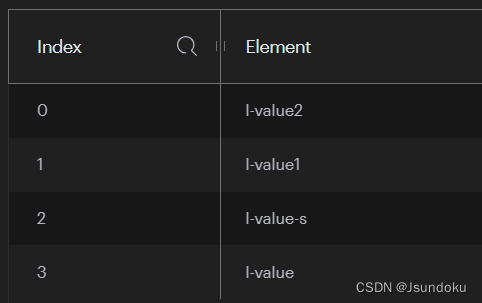
Long leftPushAll(K key, V... values):批量向缓存键 key 对应缓存队列的头部添加缓存。
- 参数
- key:缓存键
- value:缓存值列表
- 返回值:返回每次添加成功之后,缓存队列的数量
示例:
ListOperations<String, String> operations = redisTemplate.opsForList();
Long result1 = operations.leftPushAll("l-key1", "l-value1", "l-value2", "l-value3");
System.out.println("result = " + result);
输出结果:
result = 3
Long leftPushAll(K key, Collection<V> values):批量向缓存键 key 对应缓存队列的头部添加缓存。
- 参数
- key:缓存键
- value:缓存值集合
- 返回值:返回每次添加成功之后,缓存队列的数量
示例:
ListOperations<String, String> operations = redisTemplate.opsForList();
Long result2 = operations.leftPushAll("l-key2", Arrays.asList("l-value1", "l-value2", "l-value3"));
System.out.println("result = " + result);
输出结果:
result = 3
Long leftPushIfPresent(K key, V value):向缓存键 key 对应缓存队列的头部添加缓存,只有缓存列表存在才成功,否则添加失败。
- 参数
- key:缓存键
- value:缓存值
- 返回值:返回执行结果,成功为 true,否则为 false
示例:
ListOperations<String, String> operations = redisTemplate.opsForList();
Long result1 = operations.leftPushIfPresent("l-key1", "l-value1");
System.out.println("result1 = " + result1);
Long result2 = operations.leftPushIfPresent("l-key1", "l-value-s");
System.out.println("result2 = " + result2);
Long result3 = operations.leftPushIfPresent("l-key-s", "l-value1");
System.out.println("result3 = " + result3);
输出结果:
result1 = 4
result2 = 5
result3 = 0
Long rightPush(K key, V value):向缓存键 key 对应缓存队列的尾部添加缓存。
- 参数
- key:缓存键
- value:缓存值
- 返回值:返回每次添加成功之后,缓存队列的数量
示例:
ListOperations<String, String> operations = redisTemplate.opsForList();
Long result1 = operations.rightPush("l-key", "l-value");
Long result2 = operations.rightPush("l-key", "l-value1");
Long result3 = operations.rightPush("l-key", "l-value2");
System.out.println("result1 = " + result1);
System.out.println("result2 = " + result2);
System.out.println("result3 = " + result3);
输出结果:
result1 = 1
result2 = 2
result3 = 3
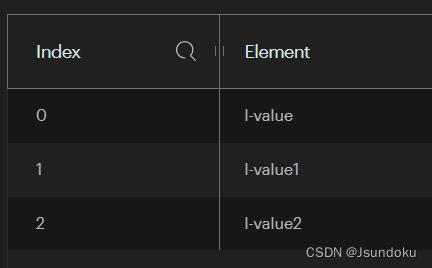
Long rightPush(K key, V pivot, V value):在缓存键 key 对应缓存队列中,将值 value 添加到指定值 pivot 的后面。
- 参数
- key:缓存键
- pivot:
- value:缓存值
- 返回值:返回每次添加成功之后,缓存队列的数量
示例:
ListOperations<String, String> operations = redisTemplate.opsForList();
Long result1 = operations.rightPush("l-key", "l-value");
Long result2 = operations.rightPush("l-key", "l-value1");
Long result3 = operations.rightPush("l-key", "l-value2");
Long result = operations.rightPush("l-key", "l-value1", "l-value2-s");
System.out.println("result = " + result);
输出结果:
result = 4

Long rightPushAll(K key, V... values):批量向缓存键 key 对应缓存队列的尾部添加缓存。
- 参数
- key:缓存键
- value:缓存值列表
- 返回值:返回每次添加成功之后,缓存队列的数量
示例:
ListOperations<String, String> operations = redisTemplate.opsForList();
Long result1 = operations.rightPushAll("l-key1", "l-value1", "l-value2", "l-value3");
System.out.println("result = " + result);
输出结果:
result = 3
Long rightPushAll(K key, Collection<V> values):批量向缓存键 key 对应缓存队列的尾部添加缓存。
- 参数
- key:缓存键
- value:缓存值集合
- 返回值:返回每次添加成功之后,缓存队列的数量
示例:
ListOperations<String, String> operations = redisTemplate.opsForList();
Long result2 = operations.rightPushAll("l-key2", Arrays.asList("l-value1", "l-value2", "l-value3"));
System.out.println("result = " + result);
输出结果:
result = 3
Long rightPushIfPresent(K key, V value):向缓存键 key 对应缓存队列的尾部添加缓存,只有缓存列表存在才成功,否则添加失败
- 参数
- key:缓存键
- value:缓存值
- 返回值:返回每次添加成功之后,缓存队列的数量
示例:
ListOperations<String, String> operations = redisTemplate.opsForList();
Long result1 = operations.rightPushIfPresent("l-key1", "l-value1");
System.out.println("result1 = " + result1);
Long result2 = operations.rightPushIfPresent("l-key1", "l-value-s");
System.out.println("result2 = " + result2);
Long result3 = operations.rightPushIfPresent("l-key-s", "l-value1");
System.out.println("result3 = " + result3);
输出结果:
result1 = 4
result2 = 5
result3 = 0
void set(K key, long index, V value):缓存键 key 对应缓存队列中,替换索引 index 对应的值为 value。
- 参数
- key:缓存键
- index:索引位置
- value:缓存值
示例:
ListOperations<String, String> operations = redisTemplate.opsForList();
operations.set("l-key",2,"new-value");

2.4.2 删除缓存
Long remove(K key, long count, Object value):键 key 的缓存中,移除值 value 出现的前 count 个
- 参数
- key:缓存键
- count:数量
- value:缓存值
- 返回值:
示例:
ListOperations<String, String> operations = redisTemplate.opsForList();
operations.rightPushAll("l-key", "aaa", "bbb", "ccc", "aaa", "ddd", "aaa", "eee", "aaa");
Long result = operations.remove("l-key", 2, "aaa");
System.out.println("result = " + result);
输出结果:
result = 2
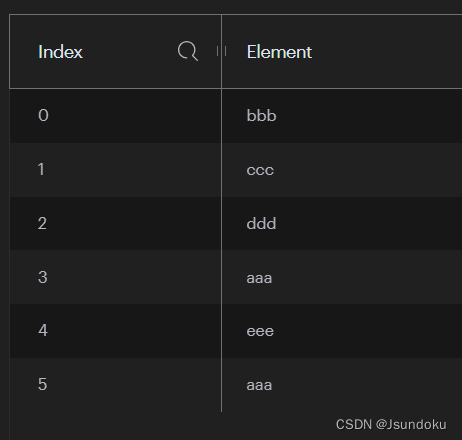
V leftPop(K key):从键 key 的缓存中,从头部移除第一个元素。
- 参数
- key:缓存键
- 返回值:
示例:
ListOperations<String, String> operations = redisTemplate.opsForList();
operations.rightPushAll("l-key", "aaa", "bbb", "ccc", "aaa", "ddd", "aaa", "eee", "aaa");
String result = operations.leftPop("l-key");
System.out.println("result = " + result);
输出结果:
result = aaa
V leftPop(K key, long timeout, TimeUnit unit):键 key 的缓存中,从头部移除第一个元素。阻塞连接,直到元素可用或者时间超时。
- 参数
- key:缓存键
- timeout:过期时间
- unit:时间单位
- 返回值:
示例:
ListOperations<String, String> operations = redisTemplate.opsForList();
operations.rightPushAll("l-key", "aaa", "bbb", "ccc", "aaa", "ddd", "aaa", "eee", "aaa");
String result = operations.leftPop("l-key",2000, TimeUnit.MILLISECONDS);
System.out.println("result = " + result);
输出结果:
result = aaa
V leftPop(K key, Duration timeout):键 key 的缓存中,从头部移除第一个元素。阻塞连接,直到元素可用或者时间超时。
- 参数
- key:缓存键
- timeout:过期时间,自带单位
- 返回值:
示例:
ListOperations<String, String> operations = redisTemplate.opsForList();
operations.rightPushAll("l-key", "aaa", "bbb", "ccc", "aaa", "ddd", "aaa", "eee", "aaa");
String result = operations.leftPop("l-key", Duration.ofMillis(2000));
System.out.println("result = " + result);
输出结果:
result = aaa
V rightPop(K key):从键 key 的缓存中,从尾部移除第一个元素。
- 参数
- key:缓存键
- 返回值:
示例:
ListOperations<String, String> operations = redisTemplate.opsForList();
operations.rightPushAll("l-key", "aaa", "bbb", "ccc", "aaa", "ddd", "aaa", "eee", "aaa");
String result = operations.rightPop("l-key");
System.out.println("result = " + result);
输出结果:
result = aaa
V rightPop(K key, long timeout, TimeUnit unit):键 key 的缓存中,从尾部移除第一个元素。阻塞连接,直到元素可用或者时间超时。
- 参数
- key:缓存键
- timeout:过期时间
- unit:时间单位
- 返回值:
示例:
ListOperations<String, String> operations = redisTemplate.opsForList();
operations.rightPushAll("l-key", "aaa", "bbb", "ccc", "aaa", "ddd", "aaa", "eee", "aaa");
String result = operations.rightPop("l-key", 2000, TimeUnit.MILLISECONDS);
System.out.println("result = " + result);
输出结果:
result = aaa
V rightPop(K key, Duration timeout):键 key 的缓存中,从尾部移除第一个元素。阻塞连接,直到元素可用或者时间超时。
- 参数
- key:缓存键
- timeout:过期时间,自带单位
- 返回值:
示例:
ListOperations<String, String> operations = redisTemplate.opsForList();
operations.rightPushAll("l-key", "aaa", "bbb", "ccc", "aaa", "ddd", "aaa", "eee", "aaa");
String result = operations.rightPop("l-key", Duration.ofMillis(2000));
System.out.println("result = " + result);
输出结果:
result = aaa
V rightPopAndLeftPush(K sourceKey, K destinationKey):从键 sourceKey 的缓存尾部移除一个元素,并将此元素添加到键 destinationKey 的缓存头部。
- 参数
- sourceKey:源缓存键
- destinationKey:目标缓存键
- 返回值:
示例:
ListOperations<String, String> operations = redisTemplate.opsForList();
operations.rightPushAll("l-key", "aaa", "bbb", "ccc", "aaa", "ddd", "aaa", "eee", "aaa");
String result = operations.rightPopAndLeftPush("l-key", "target-key");
System.out.println("result = " + result);
输出结果:
result = aaa
V rightPopAndLeftPush(K sourceKey, K destinationKey, long timeout, TimeUnit unit):从键 sourceKey 的缓存尾部移除一个元素,并将此元素添加到键 destinationKey 的缓存头部。阻塞连接,直到元素可用或者时间超时。
- 参数
- sourceKey:源缓存键
- destinationKey:目标缓存键
- timeout:过期时间
- unit:时间单位
- 返回值:
示例:
ListOperations<String, String> operations = redisTemplate.opsForList();
operations.rightPushAll("l-key", "aaa", "bbb", "ccc", "aaa", "ddd", "aaa", "eee", "aaa");
String result = operations.rightPopAndLeftPush("l-key", "target-key", 2000, TimeUnit.MILLISECONDS);
System.out.println("result = " + result);
输出结果:
result = aaa
V rightPopAndLeftPush(K sourceKey, K destinationKey, Duration timeout):从键 sourceKey 的缓存尾部移除一个元素,并将此元素添加到键 destinationKey 的缓存头部。阻塞连接,直到元素可用或者时间超时。
- 参数
- sourceKey:源缓存键
- destinationKey:目标缓存键
- timeout:过期时间,自带单位
- 返回值:
示例:
ListOperations<String, String> operations = redisTemplate.opsForList();
operations.rightPushAll("l-key", "aaa", "bbb", "ccc", "aaa", "ddd", "aaa", "eee", "aaa");
String result = operations.rightPopAndLeftPush("l-key", "target-key", Duration.ofMillis(2000));
System.out.println("result = " + result);
输出结果:
result = aaa
2.4.3 获取缓存
List<V> range(K key, long start, long end):获取键 key 的缓存,指定开始索引和结束索引。
- 参数
- key:缓存键
- start:开始位置
- end:结束位置
- 返回值:返回取出的结果列表
示例:
ListOperations<String, String> operations = redisTemplate.opsForList();
List<String> result1 = operations.range("l-key", 0, -1);
System.out.println("result1 = " + result1);
List<String> result2 = operations.range("l-key", 0, 3);
System.out.println("result2 = " + result2);
List<String> result3 = operations.range("l-key", 2, 5);
System.out.println("result3 = " + result3);
输出结果:
result1 = [ccc, aaa, ddd, aaa, eee, aaa, aaa, bbb, ccc, aaa, ddd, aaa, eee, aaa]
result2 = [ccc, aaa, ddd, aaa]
result3 = [ddd, aaa, eee, aaa]
void trim(K key, long start, long end):截取键 key 对应的缓存,指定开始索引和结束索引。
- 参数
- key:缓存键
- start:开始位置
- end:结束位置
示例:
ListOperations<String, String> operations = redisTemplate.opsForList();
operations.trim("l-key", 0, -1);
System.out.println("result1 = " + operations.range("l-key",0,-1));
operations.trim("l-key", 0, 7);
System.out.println("result2 = " + operations.range("l-key",0,-1));
operations.trim("l-key", 2, 5);
System.out.println("result3 = " + operations.range("l-key",0,-1));
输出结果:
result1 = [ccc, aaa, ddd, aaa, eee, aaa, aaa, bbb, ccc, aaa, ddd, aaa, eee, aaa]
result2 = [ccc, aaa, ddd, aaa, eee, aaa, aaa, bbb]
result3 = [ddd, aaa, eee, aaa]
Long size(K key):统计键key对应缓存的元素个数。
- 参数
- key:缓存键
- 返回值:返回统计结果
示例:
ListOperations<String, String> operations = redisTemplate.opsForList();
System.out.println("result2 = " + operations.range("l-key",0,-1));
Long size = operations.size("l-key");
System.out.println("size = " + size);
输出结果:
result2 = [ddd, aaa, eee, aaa]
size = 4
V index(K key, long index):从键 key 对应的缓存中取出索引为 index 的元素。
- 参数
- key:缓存键
- index:
- 返回值:返回获取结果
示例:
ListOperations<String, String> operations = redisTemplate.opsForList();
System.out.println(operations.range("l-key", 0, -1));
String result1 = operations.index("l-key", 0);
System.out.println("result1 = " + result1);
String result2 = operations.index("l-key", 2);
System.out.println("result2 = " + result2);
String result3 = operations.index("l-key", 4);
System.out.println("result3 = " + result3);
输出结果:
[ddd, aaa, eee, aaa]
result1 = ddd
result2 = eee
result3 = null
2.5 Set 类型 API
2.5.1 添加缓存
Long add(K key, V... values):添加缓存。
- 参数:
- key:缓存键
- values:缓存值列表
- 返回值:返回添加成功的个数
示例:
SetOperations<String, String> operations = redisTemplate.opsForSet();
Long result = operations.add("s-key", "aaa", "bbb", "ccc", "ddd");
System.out.println("result = " + result);
输出结果:
result = 4
2.5.2 删除缓存
Long remove(K key, Object... values):移除缓存中的元素。
- 参数:
- key:缓存键
- values:缓存元素列表
- 返回值:返回删除成功的个数
示例:
SetOperations<String, String> operations = redisTemplate.opsForSet();
Long result = operations.remove("s-key", "aaa", "vvv");
System.out.println("result = " + result);
输出结果:
result = 1
V pop(K key):从键 key 的缓存中随机移除一个元素,并返回元素的值,key 不存在则返回 null。
- 参数:
- key:缓存键
- 返回值:返回移除元素的值
示例:
SetOperations<String, String> operations = redisTemplate.opsForSet();
String result = operations.pop("s-key");
System.out.println("result = " + result);
输出结果:
result = ddd
List<V> pop(K key, long count):从键 key 的缓存中随机移除 count 个元素,并返回这些元素的值,redis 版本过低会报错 ERR wrong number of arguments for 'spop' command。
- 参数:
- key:缓存键
- count:元素个数
- 返回值:返回移除成功的元素列表
示例:
SetOperations<String, String> operations = redisTemplate.opsForSet();
operations.add("s-key","aaa");
List<String> result = operations.pop("s-key", 3);
System.out.println("result = " + result);
输出结果:
result = [aaa]
2.5.3 获取缓存
Set<V> members(K key):获取缓存键 key 下的所有缓存元素。
- 参数:
- key:缓存键
- 返回值:返回元素集合
示例:
SetOperations<String, String> operations = redisTemplate.opsForSet();
operations.add("s-key","aaa","bbb","ccc","ddd");
Set<String> result = operations.members("s-key");
System.out.println("result = " + result);
输出结果:
result = [bbb, aaa, ccc, ddd]
V randomMember(K key):从缓存键 key 的缓存中随机返回一个元素。
- 参数:
- key:缓存键
- 返回值:返回元素
示例:
SetOperations<String, String> operations = redisTemplate.opsForSet();
operations.add("s-key","aaa","bbb","ccc","ddd");
String result1 = operations.randomMember("s-key");
System.out.println("result1 = " + result1);
String result2 = operations.randomMember("s-key");
System.out.println("result2 = " + result2);
输出结果:
result1 = ccc
result2 = ddd
List<V> randomMembers(K key, long count):从缓存键 key 的缓存中随机返回 count 个元素,返回元素可重复。
- 参数:
- key:缓存键
- count:元素个数
- 返回值:返回元素集合
示例:
SetOperations<String, String> operations = redisTemplate.opsForSet();
operations.add("s-key","aaa","bbb","ccc","ddd");
List<String> result = operations.randomMembers("s-key",10);
System.out.println("result = " + result);
输出结果:
result = [ddd, ddd, ddd, ccc, ccc, ccc, ccc, bbb, bbb, ddd]
Set<V> distinctRandomMembers(K key, long count):从缓存键 key 的缓存中随机返回 count 个元素,返回元素不可重复。
- 参数:
- key:缓存键
- count:元素个数
- 返回值:返回元素集合
示例:
SetOperations<String, String> operations = redisTemplate.opsForSet();
operations.add("s-key","aaa","bbb","ccc","ddd");
Set<String> result = operations.distinctRandomMembers("s-key",10);
System.out.println("result = " + result);
输出结果:
result = [bbb, ddd, ccc, aaa]
Set<V> difference(K key, K otherKey):比较并返回指定键和其他键对应的缓存中不同的元素,返回的元素为指定缓存键 key 中不同的元素。
- 参数:
- key:缓存键
- otherKey:其他缓存键
- 返回值:返回结果集
示例:
SetOperations<String, String> operations = redisTemplate.opsForSet();
operations.add("s-key-1", "aaa", "bbb", "ccc", "ddd");
operations.add("s-key-2", "aaa", "bbb", "eee", "fff");
operations.add("s-key-3", "aaa", "bbb", "ggg", "hhh");
Set<String> result1 = operations.difference("s-key-1", "s-key-2");
System.out.println("result1 = " + result1);
Set<String> result2 = operations.difference("s-key-1", "s-key-3");
System.out.println("result2 = " + result2);
Set<String> result3 = operations.difference("s-key-2", "s-key-3");
System.out.println("result3 = " + result3);
Set<String> result4 = operations.difference("s-key-3", "s-key-2");
System.out.println("result4 = " + result4);
输出结果:
result1 = [ccc, ddd]
result2 = [ccc, ddd]
result3 = [eee, fff]
result4 = [ggg, hhh]
Set<V> difference(K key, Collection<K> otherKeys):比较并返回指定键和其他键对应的缓存中不同的元素,返回的元素为指定缓存键中不同的元素。
- 参数:
- key:缓存键
- otherKeys:其他缓存键集合
- 返回值:返回结果集
示例:
SetOperations<String, String> operations = redisTemplate.opsForSet();
operations.add("s-key-1", "aaa", "bbb", "ccc", "ddd");
operations.add("s-key-2", "aaa", "bbb", "eee", "fff");
operations.add("s-key-3", "aaa", "bbb", "ggg", "hhh");
Set<String> result1 = operations.difference("s-key-1", Arrays.asList("s-key-2","s-key-3"));
System.out.println("result1 = " + result1);
Set<String> result2 = operations.difference("s-key-2", Arrays.asList("s-key-1","s-key-3"));
System.out.println("result2 = " + result2);
Set<String> result3 = operations.difference("s-key-3", Arrays.asList("s-key-1","s-key-2"));
System.out.println("result3 = " + result3);
Set<String> result4 = operations.difference("s-key-3", Arrays.asList("s-key-2","s-key-1"));
System.out.println("result4 = " + result4);
输出结果:
result1 = [ccc, ddd]
result2 = [eee, fff]
result3 = [ggg, hhh]
result4 = [ggg, hhh]
Set<V> difference(Collection<K> keys):比较缓存键集合中各个键对应的缓存中不同的元素,返回的元素为缓存键集合中第一个键对应的缓存中不同的元素。
- 参数:
- keys:缓存键集合
- 返回值:返回结果集
示例:
SetOperations<String, String> operations = redisTemplate.opsForSet();
operations.add("s-key-1", "aaa", "bbb", "ccc", "ddd");
operations.add("s-key-2", "aaa", "bbb", "eee", "fff");
operations.add("s-key-3", "aaa", "bbb", "ggg", "hhh");
Set<String> result1 = operations.difference(Arrays.asList("s-key-1","s-key-2","s-key-3"));
System.out.println("result1 = " + result1);
Set<String> result2 = operations.difference(Arrays.asList("s-key-2","s-key-1","s-key-3"));
System.out.println("result2 = " + result2);
Set<String> result3 = operations.difference(Arrays.asList("s-key-3","s-key-1","s-key-2"));
System.out.println("result3 = " + result3);
Set<String> result4 = operations.difference(Arrays.asList("s-key-3","s-key-2","s-key-1"));
System.out.println("result4 = " + result4);
输出结果:
result1 = [ccc, ddd]
result2 = [eee, fff]
result3 = [ggg, hhh]
result4 = [ggg, hhh]
Long differenceAndStore(K key, K otherKey, K destKey):比较指定键和其他键对应的缓存中不同的元素,并将不同的元素另外缓存,缓存的元素为指定缓存键中不同的元素。
- 参数:
- key:缓存键
- otherKey:其他缓存键
- destKey:目标缓存键
- 返回值:返回结果集数量
示例:
SetOperations<String, String> operations = redisTemplate.opsForSet();
operations.add("s-key-1", "aaa", "bbb", "ccc", "ddd");
operations.add("s-key-2", "aaa", "bbb", "eee", "fff");
operations.add("s-key-3", "aaa", "bbb", "ggg", "hhh");
Long result = operations.differenceAndStore("s-key-1", "s-key-2", "new-key");
System.out.println("result = " + result);
Set<String> members = operations.members("new-key");
System.out.println("new-key = " + members);
输出结果:
result = 2
new-key = [ccc, ddd]
Long differenceAndStore(K key, Collection<K> otherKeys, K destKey):比较指定键和其他键对应的缓存中不同的元素,并将不同的元素另外缓存,缓存的元素为指定缓存键中不同的元素。
- 参数:
- key:缓存键
- otherKeys:其他缓存键集合
- destKey:目标缓存键
- 返回值:返回结果集数量
示例:
SetOperations<String, String> operations = redisTemplate.opsForSet();
operations.add("s-key-1", "aaa", "bbb", "ccc", "ddd");
operations.add("s-key-2", "aaa", "bbb", "eee", "fff");
operations.add("s-key-3", "aaa", "bbb", "ggg", "hhh");
Long result = operations.differenceAndStore("s-key-1", Arrays.asList("s-key-2","s-key-3"), "new-key");
System.out.println("result = " + result);
Set<String> members = operations.members("new-key");
System.out.println("new-key = " + members);
输出结果:
result = 2
new-key = [ccc, ddd]
Long differenceAndStore(Collection<K> keys, K destKey):比较缓存键集合中各个键对应的缓存中不同的元素,并将不同的元素另外缓存,缓存的元素为缓存键集合中第一个键对应的缓存中不同的元素。
- 参数:
- keys:缓存键集合
- destKey:目标缓存键
- 返回值:返回结果集数量
示例:
SetOperations<String, String> operations = redisTemplate.opsForSet();
operations.add("s-key-1", "aaa", "bbb", "ccc", "ddd");
operations.add("s-key-2", "aaa", "bbb", "eee", "fff");
operations.add("s-key-3", "aaa", "bbb", "ggg", "hhh");
Long result = operations.differenceAndStore( Arrays.asList("s-key-1","s-key-2","s-key-3"), "new-key");
System.out.println("result = " + result);
Set<String> members = operations.members("new-key");
System.out.println("new-key = " + members);
输出结果:
result = 2
new-key = [ccc, ddd]
Set<V> intersect(K key, K otherKey):取交集,比较并返回指定键和其他键对应的缓存中相同的元素,返回的元素为指定缓存键 key 中相同的元素。
- 参数:
- key:缓存键
- otherKey:其他缓存键
- 返回值:返回结果集
示例:
SetOperations<String, String> operations = redisTemplate.opsForSet();
operations.add("s-key-1", "aaa", "bbb", "ccc", "ddd");
operations.add("s-key-2", "aaa", "bbb", "eee", "fff");
operations.add("s-key-3", "aaa", "bbb", "ggg", "hhh");
Set<String> result= operations.intersect("s-key-1", "s-key-2");
System.out.println("result = " + result);
输出结果:
result = [aaa, bbb]
Set<V> intersect(K key, Collection<K> otherKeys):取交集,比较并返回指定键和其他键对应的缓存中相同的元素,返回的元素为指定缓存键中相同的元素。
- 参数:
- key:缓存键
- otherKeys:其他缓存键集合
- 返回值:返回结果集
示例:
SetOperations<String, String> operations = redisTemplate.opsForSet();
operations.add("s-key-1", "aaa", "bbb", "ccc", "ddd");
operations.add("s-key-2", "aaa", "bbb", "eee", "fff");
operations.add("s-key-3", "aaa", "bbb", "ggg", "hhh");
Set<String> result= operations.intersect("s-key-1", Arrays.asList("s-key-2", "s-key-3"));
System.out.println("result = " + result);
输出结果:
result = [aaa, bbb]
Set<V> intersect(Collection<K> keys):取交集,比较缓存键集合中各个键对应的缓存中相同的元素,返回的元素为缓存键集合中第一个键对应的缓存中相同的元素。
- 参数:
- keys:缓存键集合
- 返回值:返回结果集
示例:
SetOperations<String, String> operations = redisTemplate.opsForSet();
operations.add("s-key-1", "aaa", "bbb", "ccc", "ddd");
operations.add("s-key-2", "aaa", "bbb", "eee", "fff");
operations.add("s-key-3", "aaa", "bbb", "ggg", "hhh");
Set<String> result= operations.intersect(Arrays.asList("s-key-1", "s-key-2", "s-key-3"));
System.out.println("result = " + result);
输出结果:
result = [aaa, bbb]
Long intersectAndStore(K key, K otherKey, K destKey):取交集,比较指定键和其他键对应的缓存中相同的元素,并将相同的元素另外缓存,缓存的元素为指定缓存键中相同的元素。
- 参数:
- key:缓存键
- otherKey:其他缓存键
- destKey:目标缓存键
- 返回值:返回结果集数量
示例:
SetOperations<String, String> operations = redisTemplate.opsForSet();
operations.add("s-key-1", "aaa", "bbb", "ccc", "ddd");
operations.add("s-key-2", "aaa", "bbb", "eee", "fff");
operations.add("s-key-3", "aaa", "bbb", "ggg", "hhh");
Long result = operations.intersectAndStore("s-key-1", "s-key-2", "new-key");
System.out.println("result = " + result);
Set<String> members = operations.members("new-key");
System.out.println("new-key = " + members);
输出结果:
result = 2
new-key = [bbb, aaa]
Long intersectAndStore(K key, Collection<K> otherKeys, K destKey):取交集,比较指定键和其他键对应的缓存中相同的元素,并将相同的元素另外缓存,缓存的元素为指定缓存键中相同的元素。
- 参数:
- key:缓存键
- otherKeys:其他缓存键集合
- destKey:目标缓存键
- 返回值:返回结果集数量
示例:
SetOperations<String, String> operations = redisTemplate.opsForSet();
operations.add("s-key-1", "aaa", "bbb", "ccc", "ddd");
operations.add("s-key-2", "aaa", "bbb", "eee", "fff");
operations.add("s-key-3", "aaa", "bbb", "ggg", "hhh");
Long result = operations.intersectAndStore("s-key-1", Arrays.asList("s-key-2", "s-key-3"), "new-key");
System.out.println("result = " + result);
Set<String> members = operations.members("new-key");
System.out.println("new-key = " + members);
输出结果:
result = 2
new-key = [bbb, aaa]
Long intersectAndStore(Collection<K> keys, K destKey):取交集,比较缓存键集合中各个键对应的缓存中相同的元素,并将相同的元素另外缓存,缓存的元素为缓存键集合中第一个键对应的缓存中相同的元素。
- 参数:
- keys:缓存键集合
- destKey:目标缓存键
- 返回值:返回结果集数量
示例:
SetOperations<String, String> operations = redisTemplate.opsForSet();
operations.add("s-key-1", "aaa", "bbb", "ccc", "ddd");
operations.add("s-key-2", "aaa", "bbb", "eee", "fff");
operations.add("s-key-3", "aaa", "bbb", "ggg", "hhh");
Long result = operations.intersectAndStore( Arrays.asList("s-key-1", "s-key-2", "s-key-3"), "new-key");
System.out.println("result = " + result);
Set<String> members = operations.members("new-key");
System.out.println("new-key = " + members);
输出结果:
result = 2
new-key = [bbb, aaa]
Set<V> union(K key, K otherKey):取并集,比较并返回指定键和其他键对应的缓存中所有的元素,会去重
- 参数:
- key:缓存键
- otherKey:其他缓存键
- 返回值:返回结果集
示例:
SetOperations<String, String> operations = redisTemplate.opsForSet();
operations.add("s-key-1", "aaa", "bbb", "ccc", "ddd");
operations.add("s-key-2", "aaa", "bbb", "eee", "fff");
operations.add("s-key-3", "aaa", "bbb", "ggg", "hhh");
Set<String> result= operations.union("s-key-1", "s-key-2");
System.out.println("result = " + result);
输出结果:
result = [hhh, eee, aaa, bbb, fff, ccc, ddd, ggg]
Set<V> union(K key, Collection<K> otherKeys):取并集,比较并返回指定键和其他键对应的缓存中所有的元素,会去重。
- 参数:
- key:缓存键
- otherKeys:其他缓存键集合
- 返回值:返回结果集
示例:
SetOperations<String, String> operations = redisTemplate.opsForSet();
operations.add("s-key-1", "aaa", "bbb", "ccc", "ddd");
operations.add("s-key-2", "aaa", "bbb", "eee", "fff");
operations.add("s-key-3", "aaa", "bbb", "ggg", "hhh");
Set<String> result= operations.union("s-key-1", Arrays.asList("s-key-2", "s-key-3"));
System.out.println("result = " + result);
输出结果:
result = [hhh, eee, aaa, bbb, fff, ccc, ddd, ggg]
Set<V> union(Collection<K> keys):取并集,比较缓存键集合中各个键对应的缓存中所有的元素,会去重。
- 参数:
- keys:缓存键集合
- 返回值:返回结果集
示例:
SetOperations<String, String> operations = redisTemplate.opsForSet();
operations.add("s-key-1", "aaa", "bbb", "ccc", "ddd");
operations.add("s-key-2", "aaa", "bbb", "eee", "fff");
operations.add("s-key-3", "aaa", "bbb", "ggg", "hhh");
Set<String> result= operations.union(Arrays.asList("s-key-1", "s-key-2", "s-key-3"));
System.out.println("result = " + result);
输出结果:
result = [hhh, eee, aaa, bbb, fff, ccc, ddd, ggg]
Long unionAndStore(K key, K otherKey, K destKey):取并集,比较指定键和其他键对应的缓存中所有的元素,会去重,并将合并的元素另外缓存。
- 参数:
- key:缓存键
- otherKey:其他缓存键
- destKey:目标缓存键
- 返回值:返回结果集数量
示例:
SetOperations<String, String> operations = redisTemplate.opsForSet();
operations.add("s-key-1", "aaa", "bbb", "ccc", "ddd");
operations.add("s-key-2", "aaa", "bbb", "eee", "fff");
operations.add("s-key-3", "aaa", "bbb", "ggg", "hhh");
Long result = operations.unionAndStore("s-key-1", "s-key-2", "new-key");
System.out.println("result = " + result);
Set<String> members = operations.members("new-key");
System.out.println("members = " + members);
输出结果:
result = 6
members = [eee, aaa, bbb, fff, ccc, ddd]
Long unionAndStore(K key, Collection<K> otherKeys, K destKey):取并集,比较指定键和其他键对应的缓存中所有的元素,会去重,并将合并的元素另外缓存。
- 参数:
- key:缓存键
- otherKeys:其他缓存键集合
- destKey:目标缓存键
- 返回值:返回结果集数量
示例:
SetOperations<String, String> operations = redisTemplate.opsForSet();
operations.add("s-key-1", "aaa", "bbb", "ccc", "ddd");
operations.add("s-key-2", "aaa", "bbb", "eee", "fff");
operations.add("s-key-3", "aaa", "bbb", "ggg", "hhh");
Long result = operations.unionAndStore("s-key-1", Arrays.asList("s-key-2", "s-key-3"), "new-key");
System.out.println("result = " + result);
Set<String> members = operations.members("new-key");
System.out.println("members = " + members);
输出结果:
result = 8
members = [hhh, eee, aaa, bbb, fff, ccc, ddd, ggg]
Long unionAndStore(Collection<K> keys, K destKey):取并集,比较缓存键集合中各个键对应的缓存中所有的元素,会去重,并将合并的元素另外缓存。
- 参数:
- keys:缓存键集合
- destKey:目标缓存键
- 返回值:返回结果集数量
示例:
SetOperations<String, String> operations = redisTemplate.opsForSet();
operations.add("s-key-1", "aaa", "bbb", "ccc", "ddd");
operations.add("s-key-2", "aaa", "bbb", "eee", "fff");
operations.add("s-key-3", "aaa", "bbb", "ggg", "hhh");
Long result = operations.unionAndStore(Arrays.asList("s-key-1", "s-key-2", "s-key-3"), "new-key");
System.out.println("result = " + result);
Set<String> members = operations.members("new-key");
System.out.println("members = " + members);
输出结果:
result = 8
members = [hhh, eee, aaa, bbb, fff, ccc, ddd, ggg]
Cursor<V> scan(K key, ScanOptions options):从键 key 的缓存中匹配查找元素
- 参数:
- key:缓存键
- options:匹配规则
- 返回值:返回匹配到的元素
示例:
SetOperations<String, String> operations = redisTemplate.opsForSet();
operations.add("s-key", "aaa", "aab", "aac", "bba", "bbb", "bbc", "cca", "ccb", "ccc");
Cursor<String> cursor1 = operations.scan("s-key", ScanOptions.NONE);
while (cursor1.hasNext()) {System.out.print(cursor1.next() + ",");
}
System.out.println("");
Cursor<String> cursor2 = operations.scan("s-key", ScanOptions.scanOptions().match("aa*").build());
while (cursor2.hasNext()) {System.out.print(cursor2.next() + ",");
}
try {cursor1.close();cursor2.close();
} catch (IOException e) {throw new RuntimeException(e);
}
输出结果:
aaa,bbb,aab,cca,ccc,bbc,aac,ddd,bba,ccb,
aaa,aab,aac,
2.5.4 其他操作
Boolean move(K key, V value, K destKey):从键 key 的缓存中取出元素 value 并添加到目标缓存键 destKey 的缓存中。
- 参数:
- key:缓存键
- 返回值:返回操作结果,成功为 true,失败为 false
示例:
SetOperations<String, String> operations = redisTemplate.opsForSet();
operations.add("s-key", "aaa", "bbb", "ccc", "ddd");
System.out.println(operations.members("s-key"));
Boolean result1 = operations.move("s-key", "ccc", "target-key");
System.out.println("result1 = " + result1);
Boolean result2 = operations.move("s-key", "zzz", "target-key");
System.out.println("result2 = " + result2);
System.out.println("s-key = " + operations.members("s-key"));
System.out.println("target-key = " + operations.members("target-key"));
输出结果:
[aaa, bbb, ccc, ddd]
result1 = true
result2 = false
s-key = [aaa, bbb, ddd]
target-key = [ccc]
Long size(K key):统计键 key 的缓存元素个数。
- 参数:
- key:缓存键
- 返回值:返回统计个数
示例:
SetOperations<String, String> operations = redisTemplate.opsForSet();
operations.add("s-key", "aaa", "bbb", "ccc", "ddd");
Long result = operations.size("s-key");
System.out.println("result = " + result);
输出结果:
result = 4
Boolean isMember(K key, Object o):判断指定元素在键 key 的缓存是否存在。
- 参数:
- key:缓存键
- o:指定缓存元素
- 返回值:返回判断结果,存在为 true,不存在为 false
示例:
SetOperations<String, String> operations = redisTemplate.opsForSet();
operations.add("s-key", "aaa", "bbb", "ccc", "ddd");
Boolean result1 = operations.isMember("s-key","aaa");
System.out.println("result1 = " + result1);
Boolean result2 = operations.isMember("s-key","zzz");
System.out.println("result2 = " + result2);
输出结果:
result1 = true
result2 = false
2.6 ZSet 类型 API
2.6.1 添加缓存
Boolean add(K key, V value, double score):添加缓存,如果 value 已经存在,会更新分数 score,但是返回结果为 false。
- 参数:
- key:缓存键
- value:缓存值,
- score:缓存值对应的分数
- 返回值:返回添加结果,成功为 true,失败为 false
示例:
ZSetOperations<String, String> operations = redisTemplate.opsForZSet();
Boolean result1 = operations.add("zs-key", "aaa", 40);
System.out.println("result1 = " + result1);
Boolean result2 = operations.add("zs-key", "bbb", 23);
System.out.println("result2 = " + result2);
Boolean result3 = operations.add("zs-key", "ccc", 56);
System.out.println("result3 = " + result3);
Boolean result4 = operations.add("zs-key", "aaa", 66);
System.out.println("result4 = " + result4 );
输出结果:
result1 = true
result2 = true
result3 = true
result4 = false

Long add(K key, Set<TypedTuple<V>> tuples):添加缓存,如果 value 已经存在,会更新分数 score,但是返回结果总数量不会加1。
- 参数:
- key:缓存键
- tuples:缓存内容
- 返回值:返回添加成功数量
示例:
ZSetOperations<String, String> operations = redisTemplate.opsForZSet();
Set<ZSetOperations.TypedTuple<String>> tuples = new HashSet<>();
tuples.add(new DefaultTypedTuple<>("aaa", 45.5));
tuples.add(new DefaultTypedTuple<>("bbb", 23.0));
tuples.add(new DefaultTypedTuple<>("ccc", 12.9));
tuples.add(new DefaultTypedTuple<>("aaa",77.7));
Long result = operations.add("zs-key", tuples);
System.out.println("result = " + result);
输出结果:
result = 3
2.6.2 删除缓存
Long remove(K key, Object... values):删除缓存。
- 参数:
- key:缓存键
- 返回值:返回删除成功数量
示例:
ZSetOperations<String, String> operations = redisTemplate.opsForZSet();
Set<ZSetOperations.TypedTuple<String>> tuples = new HashSet<>();
tuples.add(new DefaultTypedTuple<>("aaa", 45.5));
tuples.add(new DefaultTypedTuple<>("bbb", 23.0));
tuples.add(new DefaultTypedTuple<>("ccc", 12.9));
tuples.add(new DefaultTypedTuple<>("ddd", 42.2));
tuples.add(new DefaultTypedTuple<>("aaa", 77.7));
operations.add("zs-key", tuples);
Long result = operations.remove("zs-key", "aaa", "bbb", "zzz");
System.out.println("result = " + result);
输出结果:
result = 2
Long removeRange(K key, long start, long end):根据索引排序后,删除指定索引范围内的缓存,指定开始索引和结束索引。
- 参数:
- key:缓存键
- start:开始索引
- end:结束索引
- 返回值:返回删除成功数量
示例:
ZSetOperations<String, String> operations = redisTemplate.opsForZSet();
Set<ZSetOperations.TypedTuple<String>> tuples = new HashSet<>();
tuples.add(new DefaultTypedTuple<>("aaa", 45.5));
tuples.add(new DefaultTypedTuple<>("bbb", 23.0));
tuples.add(new DefaultTypedTuple<>("ccc", 12.9));
tuples.add(new DefaultTypedTuple<>("ddd", 42.2));
tuples.add(new DefaultTypedTuple<>("eee", 77.7));
tuples.add(new DefaultTypedTuple<>("fff", 45.7));
operations.add("zs-key", tuples);
Long result = operations.removeRange("zs-key", 2, 4);
System.out.println("result = " + result);
输出结果:
result = 3
Long removeRangeByScore(K key, double min, double max):根据分数排序后,删除指定范围内的缓存,指定最小分数和最大分数,包含指定分数值。
- 参数:
- key:缓存键
- min:最小分数
- max:最大分数
- 返回值:
示例:
ZSetOperations<String, String> operations = redisTemplate.opsForZSet();
Set<ZSetOperations.TypedTuple<String>> tuples = new HashSet<>();
tuples.add(new DefaultTypedTuple<>("aaa", 45.5));
tuples.add(new DefaultTypedTuple<>("bbb", 23.0));
tuples.add(new DefaultTypedTuple<>("ccc", 12.9));
tuples.add(new DefaultTypedTuple<>("ddd", 42.2));
tuples.add(new DefaultTypedTuple<>("eee", 77.7));
tuples.add(new DefaultTypedTuple<>("fff", 45.7));
operations.add("zs-key", tuples);
Long result = operations.removeRangeByScore("zs-key", 30,60);
System.out.println("result = " + result);
输出结果:
result = 3
2.6.3 获取缓存
Set<V> range(K key, long start, long end):获取缓存元素,指定开始索引和结束索引
- 参数:
- key:缓存键
- start:开始索引
- end:结束索引
- 返回值:
示例:
ZSetOperations<String, String> operations = redisTemplate.opsForZSet();
Set<ZSetOperations.TypedTuple<String>> tuples = new HashSet<>();
tuples.add(new DefaultTypedTuple<>("aaa", 45.5));
tuples.add(new DefaultTypedTuple<>("bbb", 23.0));
tuples.add(new DefaultTypedTuple<>("ccc", 12.9));
tuples.add(new DefaultTypedTuple<>("ddd", 42.2));
tuples.add(new DefaultTypedTuple<>("eee", 77.7));
tuples.add(new DefaultTypedTuple<>("fff", 45.7));
operations.add("zs-key", tuples);
Set<String> result1 = operations.range("zs-key", 0, -1);
System.out.println("result1 = " + result1);
Set<String> result2 = operations.range("zs-key", 0, 4);
System.out.println("result2 = " + result2);
Set<String> result3 = operations.range("zs-key", 2, 5);
System.out.println("result3 = " + result3);
输出结果:
result1 = [ccc, bbb, ddd, aaa, fff, eee]
result2 = [ccc, bbb, ddd, aaa, fff]
result3 = [ddd, aaa, fff, eee]
Set<TypedTuple<V>> rangeWithScores(K key, long start, long end):先根据分数排序,然后从缓存取出指定索引范围内的缓存元素及元素对应的分数,指定开始索引和结束索引。
- 参数:
- key:缓存键
- start:开始索引
- end:结束索引
- 返回值:返回结果集合
示例:
ZSetOperations<String, String> operations = redisTemplate.opsForZSet();
Set<ZSetOperations.TypedTuple<String>> tuples = new HashSet<>();
tuples.add(new DefaultTypedTuple<>("aaa", 45.5));
tuples.add(new DefaultTypedTuple<>("bbb", 23.0));
tuples.add(new DefaultTypedTuple<>("ccc", 12.9));
tuples.add(new DefaultTypedTuple<>("ddd", 42.2));
tuples.add(new DefaultTypedTuple<>("eee", 77.7));
tuples.add(new DefaultTypedTuple<>("fff", 45.7));
operations.add("zs-key", tuples);
Set<ZSetOperations.TypedTuple<String>> result1 = operations.rangeWithScores("zs-key", 0, -1);
for (ZSetOperations.TypedTuple<String> next : result1) {System.out.println(next.getValue() + " - " + next.getScore());
}
System.out.println("----------------");
Set<ZSetOperations.TypedTuple<String>> result2 = operations.rangeWithScores("zs-key", 2, 4);
for (ZSetOperations.TypedTuple<String> next : result2) {System.out.println(next.getValue() + " - " + next.getScore());
}
输出结果:
ccc - 12.9
bbb - 23.0
ddd - 42.2
aaa - 45.5
fff - 45.7
eee - 77.7
----------------
ddd - 42.2
aaa - 45.5
fff - 45.7Set<V> rangeByScore(K key, double min, double max):先根据分数排序,然后从缓存取出指定分数范围内的缓存元素。
- 参数:
- key:缓存键
- min:最小分数
- max:最大分数
- 返回值:返回结果集合
示例:
ZSetOperations<String, String> operations = redisTemplate.opsForZSet();
Set<ZSetOperations.TypedTuple<String>> tuples = new HashSet<>();
tuples.add(new DefaultTypedTuple<>("aaa", 45.5));
tuples.add(new DefaultTypedTuple<>("bbb", 23.0));
tuples.add(new DefaultTypedTuple<>("ccc", 12.9));
tuples.add(new DefaultTypedTuple<>("ddd", 42.2));
tuples.add(new DefaultTypedTuple<>("eee", 77.7));
tuples.add(new DefaultTypedTuple<>("fff", 45.7));
operations.add("zs-key", tuples);
Set<String> result1 = operations.rangeByScore("zs-key", 0, 100);
System.out.println("result1 = " + result1);
Set<String> result2 = operations.rangeByScore("zs-key", 45.5, 100);
System.out.println("result2 = " + result2);
Set<String> result3 = operations.rangeByScore("zs-key", 0, 45.5);
System.out.println("result3 = " + result3);
输出结果:
result1 = [ccc, bbb, ddd, aaa, fff, eee]
result2 = [aaa, fff, eee]
result3 = [ccc, bbb, ddd, aaa]
Set<V> rangeByScore(K key, double min, double max, long offset, long count):
- 参数:
- key:缓存键
- min:最小分数
- max:最大分数
- offset:偏移量
- count:数量
- 返回值:返回结果集合
示例:
ZSetOperations<String, String> operations = redisTemplate.opsForZSet();
Set<ZSetOperations.TypedTuple<String>> tuples = new HashSet<>();
tuples.add(new DefaultTypedTuple<>("aaa", 45.5));
tuples.add(new DefaultTypedTuple<>("bbb", 23.0));
tuples.add(new DefaultTypedTuple<>("ccc", 12.9));
tuples.add(new DefaultTypedTuple<>("ddd", 42.2));
tuples.add(new DefaultTypedTuple<>("eee", 77.7));
tuples.add(new DefaultTypedTuple<>("fff", 45.7));
operations.add("zs-key", tuples);
Set<String> result1 = operations.rangeByScore("zs-key", 0, 100, 1, 1);
System.out.println("result1 = " + result1);
Set<String> result2 = operations.rangeByScore("zs-key", 45.5, 100, 1, 1);
System.out.println("result2 = " + result2);
Set<String> result3 = operations.rangeByScore("zs-key", 0, 45.5, 1, 1);
System.out.println("result3 = " + result3);
输出结果:
result1 = [bbb]
result2 = [fff]
result3 = [bbb]
Set<TypedTuple<V>> rangeByScoreWithScores(K key, double min, double max):先根据分数排序,然后从缓存取出指定分数范围内的缓存元素及元素对应的分数。
- 参数:
- key:缓存键
- min:最小分数
- max:最大分数
- 返回值:返回结果集合
示例:
ZSetOperations<String, String> operations = redisTemplate.opsForZSet();
Set<ZSetOperations.TypedTuple<String>> tuples = new HashSet<>();
tuples.add(new DefaultTypedTuple<>("aaa", 45.5));
tuples.add(new DefaultTypedTuple<>("bbb", 23.0));
tuples.add(new DefaultTypedTuple<>("ccc", 12.9));
tuples.add(new DefaultTypedTuple<>("ddd", 42.2));
tuples.add(new DefaultTypedTuple<>("eee", 77.7));
tuples.add(new DefaultTypedTuple<>("fff", 45.7));
operations.add("zs-key", tuples);
Set<ZSetOperations.TypedTuple<String>> result1 = operations.rangeByScoreWithScores("zs-key", 0, 100);
for (ZSetOperations.TypedTuple<String> next : result1) {System.out.println(next.getValue() + " - " + next.getScore());
}
System.out.println("----------------");
Set<ZSetOperations.TypedTuple<String>> result2 = operations.rangeByScoreWithScores("zs-key", 20, 50);
for (ZSetOperations.TypedTuple<String> next : result2) {System.out.println(next.getValue() + " - " + next.getScore());
}
输出结果:
ccc - 12.9
bbb - 23.0
ddd - 42.2
aaa - 45.5
fff - 45.7
eee - 77.7
----------------
bbb - 23.0
ddd - 42.2
aaa - 45.5
fff - 45.7
Set<TypedTuple<V>> rangeByScoreWithScores(K key, double min, double max):先根据分数排序,然后从缓存取出指定分数范围内的缓存元素及元素对应的分数,指定偏移量和返回个数。
- 参数:
- key:缓存键
- min:最小分数
- max:最大分数
- 返回值:返回结果集合
示例:
ZSetOperations<String, String> operations = redisTemplate.opsForZSet();
Set<ZSetOperations.TypedTuple<String>> tuples = new HashSet<>();
tuples.add(new DefaultTypedTuple<>("aaa", 45.5));
tuples.add(new DefaultTypedTuple<>("bbb", 23.0));
tuples.add(new DefaultTypedTuple<>("ccc", 12.9));
tuples.add(new DefaultTypedTuple<>("ddd", 42.2));
tuples.add(new DefaultTypedTuple<>("eee", 77.7));
tuples.add(new DefaultTypedTuple<>("fff", 45.7));
operations.add("zs-key", tuples);
Set<ZSetOperations.TypedTuple<String>> result1 = operations.rangeByScoreWithScores("zs-key", 0, 100,1,3);
for (ZSetOperations.TypedTuple<String> next : result1) {System.out.println(next.getValue() + " - " + next.getScore());
}
System.out.println("----------------");
Set<ZSetOperations.TypedTuple<String>> result2 = operations.rangeByScoreWithScores("zs-key", 20, 50,1,2);
for (ZSetOperations.TypedTuple<String> next : result2) {System.out.println(next.getValue() + " - " + next.getScore());
}
输出结果:
bbb - 23.0
ddd - 42.2
aaa - 45.5
----------------
ddd - 42.2
aaa - 45.5
Set<V> reverseRange(K key, long start, long end):获取缓存元素,指定开始索引和结束索引,根据索引倒序排序。
- 参数:
- key:缓存键
- start:开始索引
- end:结束索引
- 返回值:返回结果集合
示例:
ZSetOperations<String, String> operations = redisTemplate.opsForZSet();
Set<ZSetOperations.TypedTuple<String>> tuples = new HashSet<>();
tuples.add(new DefaultTypedTuple<>("aaa", 45.5));
tuples.add(new DefaultTypedTuple<>("bbb", 23.0));
tuples.add(new DefaultTypedTuple<>("ccc", 12.9));
tuples.add(new DefaultTypedTuple<>("ddd", 42.2));
tuples.add(new DefaultTypedTuple<>("eee", 77.7));
tuples.add(new DefaultTypedTuple<>("fff", 45.7));
operations.add("zs-key", tuples);
Set<String> result1 = operations.reverseRange("zs-key", 0, -1);
System.out.println("result1 = " + result1);
Set<String> result2 = operations.reverseRange("zs-key", 0, 3);
System.out.println("result2 = " + result2);
Set<String> result3 = operations.reverseRange("zs-key", 2, 5);
System.out.println("result3 = " + result3);
输出结果:
result1 = [eee, fff, aaa, ddd, bbb, ccc]
result2 = [eee, fff, aaa, ddd]
result3 = [aaa, ddd, bbb, ccc]
Set<TypedTuple<V>> reverseRangeWithScores(K key, long start, long end):先根据分数倒序排序,然后从缓存取出指定索引范围内的缓存元素及元素对应的分数,指定开始索引和结束索引。
- 参数:
- key:缓存键
- start:开始索引
- end:结束索引
- 返回值:返回结果集合
示例:
ZSetOperations<String, String> operations = redisTemplate.opsForZSet();
Set<ZSetOperations.TypedTuple<String>> tuples = new HashSet<>();
tuples.add(new DefaultTypedTuple<>("aaa", 45.5));
tuples.add(new DefaultTypedTuple<>("bbb", 23.0));
tuples.add(new DefaultTypedTuple<>("ccc", 12.9));
tuples.add(new DefaultTypedTuple<>("ddd", 42.2));
tuples.add(new DefaultTypedTuple<>("eee", 77.7));
tuples.add(new DefaultTypedTuple<>("fff", 45.7));
operations.add("zs-key", tuples);
Set<ZSetOperations.TypedTuple<String>> result1 = operations.reverseRangeWithScores("zs-key", 0, -1);
for (ZSetOperations.TypedTuple<String> next : result1) {System.out.println(next.getValue() + " - " + next.getScore());
}
System.out.println("----------------");
Set<ZSetOperations.TypedTuple<String>> result2 = operations.reverseRangeWithScores("zs-key", 2, 5);
for (ZSetOperations.TypedTuple<String> next : result2) {System.out.println(next.getValue() + " - " + next.getScore());
}
输出结果:
eee - 77.7
fff - 45.7
aaa - 45.5
ddd - 42.2
bbb - 23.0
ccc - 12.9
----------------
aaa - 45.5
ddd - 42.2
bbb - 23.0
ccc - 12.9
Set<V> reverseRangeByScore(K key, double min, double max):先根据分数倒序排序,然后从缓存取出指定分数范围内的缓存元素。
- 参数:
- key:缓存键
- min:最小分数
- max:最大分数
- 返回值:返回结果集合
示例:
ZSetOperations<String, String> operations = redisTemplate.opsForZSet();
Set<ZSetOperations.TypedTuple<String>> tuples = new HashSet<>();
tuples.add(new DefaultTypedTuple<>("aaa", 45.5));
tuples.add(new DefaultTypedTuple<>("bbb", 23.0));
tuples.add(new DefaultTypedTuple<>("ccc", 12.9));
tuples.add(new DefaultTypedTuple<>("ddd", 42.2));
tuples.add(new DefaultTypedTuple<>("eee", 77.7));
tuples.add(new DefaultTypedTuple<>("fff", 45.7));
operations.add("zs-key", tuples);
Set<String> result1 = operations.reverseRangeByScore("zs-key", 0, 100);
System.out.println("result1 = " + result1);
Set<String> result2 = operations.reverseRangeByScore("zs-key", 20, 50);
System.out.println("result2 = " + result2);
输出结果:
result1 = [eee, fff, aaa, ddd, bbb, ccc]
result2 = [fff, aaa, ddd, bbb]
Set<V> reverseRangeByScore(K key, double min, double max):先根据分数倒序排序,然后从缓存取出指定分数范围内的缓存元素,指定偏移量和返回个数。
- 参数:
- key:缓存键
- min:最小分数
- max:最大分数
- 返回值:返回结果集合
示例:
ZSetOperations<String, String> operations = redisTemplate.opsForZSet();
Set<ZSetOperations.TypedTuple<String>> tuples = new HashSet<>();
tuples.add(new DefaultTypedTuple<>("aaa", 45.5));
tuples.add(new DefaultTypedTuple<>("bbb", 23.0));
tuples.add(new DefaultTypedTuple<>("ccc", 12.9));
tuples.add(new DefaultTypedTuple<>("ddd", 42.2));
tuples.add(new DefaultTypedTuple<>("eee", 77.7));
tuples.add(new DefaultTypedTuple<>("fff", 45.7));
operations.add("zs-key", tuples);
Set<String> result1 = operations.reverseRangeByScore("zs-key", 0, 100, 1, 3);
System.out.println("result1 = " + result1);
Set<String> result2 = operations.reverseRangeByScore("zs-key", 20, 50, 1, 2);
System.out.println("result2 = " + result2);
输出结果:
result1 = [fff, aaa, ddd]
result2 = [aaa, ddd]
Set<TypedTuple<V>> reverseRangeByScoreWithScores(K key, double min, double max):先根据分数倒序排序,然后从缓存取出指定分数范围内的缓存元素及元素对应的分数。
- 参数:
- key:缓存键
- min:最小分数
- max:最大分数
- 返回值:返回结果集合
示例:
ZSetOperations<String, String> operations = redisTemplate.opsForZSet();
Set<ZSetOperations.TypedTuple<String>> tuples = new HashSet<>();
tuples.add(new DefaultTypedTuple<>("aaa", 45.5));
tuples.add(new DefaultTypedTuple<>("bbb", 23.0));
tuples.add(new DefaultTypedTuple<>("ccc", 12.9));
tuples.add(new DefaultTypedTuple<>("ddd", 42.2));
tuples.add(new DefaultTypedTuple<>("eee", 77.7));
tuples.add(new DefaultTypedTuple<>("fff", 45.7));
operations.add("zs-key", tuples);
Set<ZSetOperations.TypedTuple<String>> result1 = operations.reverseRangeByScoreWithScores("zs-key", 0, 100);
for (ZSetOperations.TypedTuple<String> next : result1) {System.out.println(next.getValue() + " - " + next.getScore());
}
System.out.println("----------------");
Set<ZSetOperations.TypedTuple<String>> result2 = operations.reverseRangeByScoreWithScores("zs-key", 20, 50);
for (ZSetOperations.TypedTuple<String> next : result2) {System.out.println(next.getValue() + " - " + next.getScore());
}
输出结果:
eee - 77.7
fff - 45.7
aaa - 45.5
ddd - 42.2
bbb - 23.0
ccc - 12.9
----------------
fff - 45.7
aaa - 45.5
ddd - 42.2
bbb - 23.0
Set<TypedTuple<V>> reverseRangeByScoreWithScores(K key, double min, double max):先根据分数倒序排序,然后从缓存取出指定分数范围内的缓存元素及元素对应的分数,指定偏移量和返回个数。
- 参数:
- key:缓存键
- min:最小分数
- max:最大分数
- 返回值:返回结果集合
示例:
ZSetOperations<String, String> operations = redisTemplate.opsForZSet();
Set<ZSetOperations.TypedTuple<String>> tuples = new HashSet<>();
tuples.add(new DefaultTypedTuple<>("aaa", 45.5));
tuples.add(new DefaultTypedTuple<>("bbb", 23.0));
tuples.add(new DefaultTypedTuple<>("ccc", 12.9));
tuples.add(new DefaultTypedTuple<>("ddd", 42.2));
tuples.add(new DefaultTypedTuple<>("eee", 77.7));
tuples.add(new DefaultTypedTuple<>("fff", 45.7));
operations.add("zs-key", tuples);
Set<ZSetOperations.TypedTuple<String>> result1 = operations.reverseRangeByScoreWithScores("zs-key", 0, 100, 1, 3);
for (ZSetOperations.TypedTuple<String> next : result1) {System.out.println(next.getValue() + " - " + next.getScore());
}
System.out.println("----------------");
Set<ZSetOperations.TypedTuple<String>> result2 = operations.reverseRangeByScoreWithScores("zs-key", 20, 50, 1, 2);
for (ZSetOperations.TypedTuple<String> next : result2) {System.out.println(next.getValue() + " - " + next.getScore());
}
输出结果:
fff - 45.7
aaa - 45.5
ddd - 42.2
----------------
aaa - 45.5
ddd - 42.2
Set<V> rangeByLex(K key, Range range):从缓存中取出在范围range内的元素,并按照缓存元素value的字典顺序排序。这个排序只有在有相同分数的情况下才能使用,如果有不同的分数则返回值不确定。
- 参数:
- key:缓存键
- range:范围,内容为缓存元素value的值
- 返回值:返回结果集合
示例:
ZSetOperations<String, String> operations = redisTemplate.opsForZSet();
Set<ZSetOperations.TypedTuple<String>> tuples = new HashSet<>();
tuples.add(new DefaultTypedTuple<>("aaa", 11.0));
tuples.add(new DefaultTypedTuple<>("bbb", 11.0));
tuples.add(new DefaultTypedTuple<>("ccc", 11.0));
tuples.add(new DefaultTypedTuple<>("ddd", 11.0));
tuples.add(new DefaultTypedTuple<>("eee", 11.0));
tuples.add(new DefaultTypedTuple<>("fff", 11.0));
operations.add("zs-key", tuples);
Set<String> result1 = operations.rangeByLex("zs-key", RedisZSetCommands.Range.range().lt("ccc"));
System.out.println("result1 = " + result1);
Set<String> result2 = operations.rangeByLex("zs-key", RedisZSetCommands.Range.range().gt("ccc"));
System.out.println("result2 = " + result2);
输出结果:
result1 = [aaa, bbb]
result2 = [ddd, eee, fff]
Set<V> rangeByLex(K key, Range range, Limit limit):从缓存中取出在范围range内的元素,并按照缓存元素value的字典顺序排序,限制返回元素个数。这个排序只有在有相同分数的情况下才能使用,如果有不同的分数则返回值不确定。
- 参数:
- key:缓存键
- range:范围,内容为缓存元素value的值
- limit:限制返回元素个数
- 返回值:返回结果集合
示例:
ZSetOperations<String, String> operations = redisTemplate.opsForZSet();
Set<ZSetOperations.TypedTuple<String>> tuples = new HashSet<>();
tuples.add(new DefaultTypedTuple<>("aaa", 11.0));
tuples.add(new DefaultTypedTuple<>("bbb", 11.0));
tuples.add(new DefaultTypedTuple<>("ccc", 11.0));
tuples.add(new DefaultTypedTuple<>("ddd", 11.0));
tuples.add(new DefaultTypedTuple<>("eee", 11.0));
tuples.add(new DefaultTypedTuple<>("fff", 11.0));
operations.add("zs-key", tuples);
Set<String> result1 = operations.rangeByLex("zs-key", RedisZSetCommands.Range.range().lt("ddd"), RedisZSetCommands.Limit.limit().offset(1).count(2));
System.out.println("result1 = " + result1);
Set<String> result2 = operations.rangeByLex("zs-key", RedisZSetCommands.Range.range().gt("ccc"), RedisZSetCommands.Limit.limit().offset(1).count(2));
System.out.println("result2 = " + result2);
输出结果:
result1 = [bbb, ccc]
result2 = [eee, fff]
Long rank(K key, Object o):根据分数排序,获取指定元素在缓存中的位置索引。
- 参数:
- key:缓存键
- value:指定分数
- 返回值:返回索引值
示例:
ZSetOperations<String, String> operations = redisTemplate.opsForZSet();
Set<ZSetOperations.TypedTuple<String>> tuples = new HashSet<>();
tuples.add(new DefaultTypedTuple<>("aaa", 11.1));
tuples.add(new DefaultTypedTuple<>("bbb", 41.20));
tuples.add(new DefaultTypedTuple<>("ccc", 71.3));
tuples.add(new DefaultTypedTuple<>("ddd", 21.4));
tuples.add(new DefaultTypedTuple<>("eee", 61.5));
tuples.add(new DefaultTypedTuple<>("fff", 11.6));
operations.add("zs-key", tuples);
Long result1 = operations.rank("zs-key", "ccc");
System.out.println("result1 = " + result1);
Long result2 = operations.rank("zs-key", "aaa");
System.out.println("result2 = " + result2);
输出结果:
result1 = 5
result2 = 0
Long reverseRank(K key, Object o):根据分数倒序排序,获取指定元素在缓存中的位置索引。
- 参数:
- key:缓存键
- value:指定分数
- 返回值:返回索引值
示例:
ZSetOperations<String, String> operations = redisTemplate.opsForZSet();
Set<ZSetOperations.TypedTuple<String>> tuples = new HashSet<>();
tuples.add(new DefaultTypedTuple<>("aaa", 11.1));
tuples.add(new DefaultTypedTuple<>("bbb", 41.20));
tuples.add(new DefaultTypedTuple<>("ccc", 71.3));
tuples.add(new DefaultTypedTuple<>("ddd", 21.4));
tuples.add(new DefaultTypedTuple<>("eee", 61.5));
tuples.add(new DefaultTypedTuple<>("fff", 11.6));
operations.add("zs-key", tuples);
Long result1 = operations.reverseRank("zs-key", "ccc");
System.out.println("result1 = " + result1);
Long result2 = operations.reverseRank("zs-key", "aaa");
System.out.println("result2 = " + result2);
输出结果:
result1 = 0
result2 = 5
Double score(K key, Object o):获取缓存中某个元素的分数。
- 参数:
- key:缓存键
- value:指定分数
- 返回值:返回元素的分数
示例:
ZSetOperations<String, String> operations = redisTemplate.opsForZSet();
Set<ZSetOperations.TypedTuple<String>> tuples = new HashSet<>();
tuples.add(new DefaultTypedTuple<>("aaa", 11.1));
tuples.add(new DefaultTypedTuple<>("bbb", 41.20));
tuples.add(new DefaultTypedTuple<>("ccc", 71.3));
tuples.add(new DefaultTypedTuple<>("ddd", 21.4));
tuples.add(new DefaultTypedTuple<>("eee", 61.5));
tuples.add(new DefaultTypedTuple<>("fff", 11.6));
operations.add("zs-key", tuples);
Double result1 = operations.score("zs-key", "ccc");
System.out.println("result1 = " + result1);
Double result2 = operations.score("zs-key", "aaa");
System.out.println("result2 = " + result2);
输出结果:
result1 = 71.3
result2 = 11.1
Double incrementScore(K key, V value, double delta):将缓存中某个值的分组增加 delta,返回增加后的分数结果。
- 参数:
- key:缓存键
- value:指定分数
- delta:增加值
- 返回值:
示例:
ZSetOperations<String, String> operations = redisTemplate.opsForZSet();
Set<ZSetOperations.TypedTuple<String>> tuples = new HashSet<>();
tuples.add(new DefaultTypedTuple<>("aaa", 11.1));
tuples.add(new DefaultTypedTuple<>("bbb", 41.20));
tuples.add(new DefaultTypedTuple<>("ccc", 71.3));
tuples.add(new DefaultTypedTuple<>("ddd", 21.4));
tuples.add(new DefaultTypedTuple<>("eee", 61.5));
tuples.add(new DefaultTypedTuple<>("fff", 11.6));
operations.add("zs-key", tuples);
System.out.println("ccc = " + operations.score("zs-key", "ccc"));
Double result1 = operations.incrementScore("zs-key", "ccc", 22);
System.out.println("result1 = " + result1);
System.out.println("ccc = " + operations.score("zs-key", "ccc"));
输出结果:
ccc = 71.3
result1 = 93.3
ccc = 93.3
Long size(K key):获取缓存中元素的个数。
- 参数:
- key:缓存键
- 返回值:返回统计结果
示例:
ZSetOperations<String, String> operations = redisTemplate.opsForZSet();
Set<ZSetOperations.TypedTuple<String>> tuples = new HashSet<>();
tuples.add(new DefaultTypedTuple<>("aaa", 11.1));
tuples.add(new DefaultTypedTuple<>("bbb", 41.20));
tuples.add(new DefaultTypedTuple<>("ccc", 71.3));
tuples.add(new DefaultTypedTuple<>("ddd", 21.4));
tuples.add(new DefaultTypedTuple<>("eee", 61.5));
tuples.add(new DefaultTypedTuple<>("fff", 11.6));
operations.add("zs-key", tuples);
Long result1 = operations.size("zs-key");
System.out.println("result1 = " + result1);
输出结果:
result1 = 6
Long zCard(K key):获取缓存中元素的个数。
- 参数:
- key:缓存键
- 返回值:返回统计结果
示例:
ZSetOperations<String, String> operations = redisTemplate.opsForZSet();
Set<ZSetOperations.TypedTuple<String>> tuples = new HashSet<>();
tuples.add(new DefaultTypedTuple<>("aaa", 11.1));
tuples.add(new DefaultTypedTuple<>("bbb", 41.20));
tuples.add(new DefaultTypedTuple<>("ccc", 71.3));
tuples.add(new DefaultTypedTuple<>("ddd", 21.4));
tuples.add(new DefaultTypedTuple<>("eee", 61.5));
tuples.add(new DefaultTypedTuple<>("fff", 11.6));
operations.add("zs-key", tuples);
Long result1 = operations.zCard("zs-key");
System.out.println("result1 = " + result1);
输出结果:
result1 = 6
Long count(K key, double min, double max):获取指定分数范围缓存中元素的个数,指定最低分数和最高分数。
- 参数:
- key:缓存键
- 返回值:返回统计结果
示例:
ZSetOperations<String, String> operations = redisTemplate.opsForZSet();
Set<ZSetOperations.TypedTuple<String>> tuples = new HashSet<>();
tuples.add(new DefaultTypedTuple<>("aaa", 11.1));
tuples.add(new DefaultTypedTuple<>("bbb", 41.20));
tuples.add(new DefaultTypedTuple<>("ccc", 71.3));
tuples.add(new DefaultTypedTuple<>("ddd", 21.4));
tuples.add(new DefaultTypedTuple<>("eee", 61.5));
tuples.add(new DefaultTypedTuple<>("fff", 11.6));
operations.add("zs-key", tuples);
Long result1 = operations.count("zs-key",0,100);
System.out.println("result1 = " + result1);
Long result2 = operations.count("zs-key",20,50);
System.out.println("result2 = " + result2);
输出结果:
result1 = 6
result2 = 2
Long intersectAndStore(K key, K otherKey, K destKey):两个集合取交集,并将交集结果保存到指定缓存键中,交集结果中,相同的值分数会直接累加。
- 参数:
- key:缓存键
- otherKey:其他缓存键
- destKey:目标缓存键
- 返回值:返回结果集数量
示例:
ZSetOperations<String, String> operations = redisTemplate.opsForZSet();
Set<ZSetOperations.TypedTuple<String>> tuples1 = new HashSet<>();
tuples1.add(new DefaultTypedTuple<>("aaa", 11.1));
tuples1.add(new DefaultTypedTuple<>("bbb", 41.20));
tuples1.add(new DefaultTypedTuple<>("ccc", 71.3));
tuples1.add(new DefaultTypedTuple<>("ddd", 21.4));
operations.add("zs-key-1", tuples1);
Set<ZSetOperations.TypedTuple<String>> tuples2 = new HashSet<>();
tuples2.add(new DefaultTypedTuple<>("aaa", 11.1));
tuples2.add(new DefaultTypedTuple<>("bbb", 41.20));
tuples2.add(new DefaultTypedTuple<>("eee", 61.5));
tuples2.add(new DefaultTypedTuple<>("fff", 11.6));
operations.add("zs-key-2", tuples2);Long result = operations.intersectAndStore("zs-key-1", "zs-key-2", "zs-key-new");
System.out.println("result = " + result);Set<ZSetOperations.TypedTuple<String>> tuples = operations.rangeWithScores("zs-key-new", 0, -1);
for (ZSetOperations.TypedTuple<String> next : tuples) {System.out.println(next.getValue() + " - " + next.getScore());
}
输出结果:
result = 2
aaa - 22.2
bbb - 82.4
Long intersectAndStore(K key, Collection<K> otherKeys, K destKey):多个集合取交集,并将交集结果保存到指定缓存键中,交集结果中,相同的值分数会直接累加。
- 参数:
- key:缓存键
- otherKeys:其他缓存键集合
- destKey:目标缓存键
- 返回值:返回结果集数量
示例:
ZSetOperations<String, String> operations = redisTemplate.opsForZSet();
Set<ZSetOperations.TypedTuple<String>> tuples1 = new HashSet<>();
tuples1.add(new DefaultTypedTuple<>("aaa", 11.1));
tuples1.add(new DefaultTypedTuple<>("bbb", 41.20));
tuples1.add(new DefaultTypedTuple<>("ccc", 71.3));
tuples1.add(new DefaultTypedTuple<>("ddd", 21.4));
operations.add("zs-key-1", tuples1);
Set<ZSetOperations.TypedTuple<String>> tuples2 = new HashSet<>();
tuples2.add(new DefaultTypedTuple<>("aaa", 11.1));
tuples2.add(new DefaultTypedTuple<>("bbb", 21.20));
tuples2.add(new DefaultTypedTuple<>("eee", 61.5));
tuples2.add(new DefaultTypedTuple<>("fff", 11.6));
operations.add("zs-key-2", tuples2);
Set<ZSetOperations.TypedTuple<String>> tuples3 = new HashSet<>();
tuples3.add(new DefaultTypedTuple<>("aaa", 11.1));
tuples3.add(new DefaultTypedTuple<>("ccc", 41.20));
tuples3.add(new DefaultTypedTuple<>("ddd", 61.5));
tuples3.add(new DefaultTypedTuple<>("fff", 11.6));
operations.add("zs-key-3", tuples3);Long result = operations.intersectAndStore("zs-key-1", Arrays.asList("zs-key-2","zs-key-3"), "zs-key-new");
System.out.println("result = " + result);Set<ZSetOperations.TypedTuple<String>> tuples = operations.rangeWithScores("zs-key-new", 0, -1);
for (ZSetOperations.TypedTuple<String> next : tuples) {System.out.println(next.getValue() + " - " + next.getScore());
}
输出结果:
result = 1
aaa - 33.3
Long intersectAndStore(K key, Collection<K> otherKeys, K destKey, Aggregate aggregate):多个集合取交集,并将交集结果保存到指定缓存键中,使用指定聚合函数获取交集元素,交集结果中,相同的值分数会直接累加。
- 参数:
- key:缓存键
- otherKeys:其他缓存键集合
- destKey:目标缓存键
- aggregate:聚合函数
- MAX:结果集中相同的值的分数取最大值
- MIN:结果集中相同的值的分数取最小值
- SUM:结果集中相同的值的分数相加
- 返回值:返回结果集数量
示例:
ZSetOperations<String, String> operations = redisTemplate.opsForZSet();
Set<ZSetOperations.TypedTuple<String>> tuples1 = new HashSet<>();
tuples1.add(new DefaultTypedTuple<>("aaa", 11.1));
tuples1.add(new DefaultTypedTuple<>("bbb", 41.20));
tuples1.add(new DefaultTypedTuple<>("ccc", 71.3));
tuples1.add(new DefaultTypedTuple<>("ddd", 21.4));
operations.add("zs-key-1", tuples1);
Set<ZSetOperations.TypedTuple<String>> tuples2 = new HashSet<>();
tuples2.add(new DefaultTypedTuple<>("aaa", 11.1));
tuples2.add(new DefaultTypedTuple<>("bbb", 21.20));
tuples2.add(new DefaultTypedTuple<>("ddd", 61.5));
tuples2.add(new DefaultTypedTuple<>("fff", 11.6));
operations.add("zs-key-2", tuples2);
Set<ZSetOperations.TypedTuple<String>> tuples3 = new HashSet<>();
tuples3.add(new DefaultTypedTuple<>("aaa", 11.1));
tuples3.add(new DefaultTypedTuple<>("ccc", 41.20));
tuples3.add(new DefaultTypedTuple<>("ddd", 61.5));
tuples3.add(new DefaultTypedTuple<>("fff", 11.6));
operations.add("zs-key-3", tuples3);Long result1 = operations.intersectAndStore("zs-key-1", Arrays.asList("zs-key-2","zs-key-3"), "zs-key-new",RedisZSetCommands.Aggregate.MIN);
System.out.println("result1 = " + result1);Set<ZSetOperations.TypedTuple<String>> tupleSet1 = operations.rangeWithScores("zs-key-new", 0, -1);
for (ZSetOperations.TypedTuple<String> next : tupleSet1) {System.out.println(next.getValue() + " - " + next.getScore());
}Long result2 = operations.intersectAndStore("zs-key-1", Arrays.asList("zs-key-2","zs-key-3"), "zs-key-new",RedisZSetCommands.Aggregate.MAX);
System.out.println("result2 = " + result2 );Set<ZSetOperations.TypedTuple<String>> tupleSet2 = operations.rangeWithScores("zs-key-new", 0, -1);
for (ZSetOperations.TypedTuple<String> next : tupleSet2) {System.out.println(next.getValue() + " - " + next.getScore());
}
输出结果:
result1 = 2
aaa - 11.1
ddd - 21.4
result2 = 2
aaa - 31.1
ddd - 61.5
Long intersectAndStore(K key, Collection<K> otherKeys, K destKey, Aggregate aggregate, Weights weights):多个集合取交集,并将交集结果保存到指定缓存键中,使用指定聚合函数和权重来计算和获取交集元素,权重值会和元素的分数相乘,交集结果中,相同的值分数会直接累加。
- 参数:
- key:缓存键
- otherKeys:其他缓存键集合
- destKey:目标缓存键
- aggregate:聚合函数
- weights:权重
- 返回值:返回结果集数量
示例:
ZSetOperations<String, String> operations = redisTemplate.opsForZSet();
Set<ZSetOperations.TypedTuple<String>> tuples1 = new HashSet<>();
tuples1.add(new DefaultTypedTuple<>("aaa", 11.1));
tuples1.add(new DefaultTypedTuple<>("bbb", 41.20));
tuples1.add(new DefaultTypedTuple<>("ccc", 71.3));
tuples1.add(new DefaultTypedTuple<>("ddd", 21.4));
operations.add("zs-key-1", tuples1);
Set<ZSetOperations.TypedTuple<String>> tuples2 = new HashSet<>();
tuples2.add(new DefaultTypedTuple<>("aaa", 31.1));
tuples2.add(new DefaultTypedTuple<>("bbb", 21.20));
tuples2.add(new DefaultTypedTuple<>("ddd", 61.5));
tuples2.add(new DefaultTypedTuple<>("fff", 11.6));
operations.add("zs-key-2", tuples2);
Set<ZSetOperations.TypedTuple<String>> tuples3 = new HashSet<>();
tuples3.add(new DefaultTypedTuple<>("aaa", 21.1));
tuples3.add(new DefaultTypedTuple<>("ccc", 41.20));
tuples3.add(new DefaultTypedTuple<>("ddd", 41.5));
tuples3.add(new DefaultTypedTuple<>("fff", 61.6));
operations.add("zs-key-3", tuples3);Long result1 = operations.intersectAndStore("zs-key-1", Arrays.asList("zs-key-2", "zs-key-3"), "zs-key-new",RedisZSetCommands.Aggregate.MIN, RedisZSetCommands.Weights.of(2, 3, 5));
System.out.println("result1 = " + result1);Set<ZSetOperations.TypedTuple<String>> tupleSet1 = operations.rangeWithScores("zs-key-new", 0, -1);
for (ZSetOperations.TypedTuple<String> next : tupleSet1) {System.out.println(next.getValue() + " - " + next.getScore());
}Long result2 = operations.intersectAndStore("zs-key-1", Arrays.asList("zs-key-2", "zs-key-3"), "zs-key-new",RedisZSetCommands.Aggregate.MAX, RedisZSetCommands.Weights.of(2, 3, 5));
System.out.println("result2 = " + result2);Set<ZSetOperations.TypedTuple<String>> tupleSet2 = operations.rangeWithScores("zs-key-new", 0, -1);
for (ZSetOperations.TypedTuple<String> next : tupleSet2) {System.out.println(next.getValue() + " - " + next.getScore());
}
输出结果:
result1 = 2
aaa - 22.2
ddd - 42.8
result2 = 2
aaa - 105.5
ddd - 207.5
Long unionAndStore(K key, K otherKey, K destKey):两个集合取并集,并将并集结果保存到指定缓存键中。
- 参数:
- key:缓存键
- otherKey:其他缓存键
- destKey:目标缓存键
- 返回值:返回结果集数量
示例:
ZSetOperations<String, String> operations = redisTemplate.opsForZSet();
Set<ZSetOperations.TypedTuple<String>> tuples1 = new HashSet<>();
tuples1.add(new DefaultTypedTuple<>("aaa", 11.1));
tuples1.add(new DefaultTypedTuple<>("bbb", 41.20));
tuples1.add(new DefaultTypedTuple<>("ccc", 71.3));
tuples1.add(new DefaultTypedTuple<>("ddd", 21.4));
operations.add("zs-key-1", tuples1);
Set<ZSetOperations.TypedTuple<String>> tuples2 = new HashSet<>();
tuples2.add(new DefaultTypedTuple<>("aaa", 11.1));
tuples2.add(new DefaultTypedTuple<>("bbb", 21.20));
tuples2.add(new DefaultTypedTuple<>("eee", 61.5));
tuples2.add(new DefaultTypedTuple<>("fff", 11.6));
operations.add("zs-key-2", tuples2);Long result = operations.unionAndStore("zs-key-1", "zs-key-2", "zs-key-new");
System.out.println("result = " + result);Set<ZSetOperations.TypedTuple<String>> tuples = operations.rangeWithScores("zs-key-new", 0, -1);
for (ZSetOperations.TypedTuple<String> next : tuples) {System.out.println(next.getValue() + " - " + next.getScore());
}
输出结果:
result = 6
fff - 11.6
ddd - 21.4
aaa - 22.2
eee - 61.5
bbb - 62.400000000000006
ccc - 71.3
Long unionAndStore(K key, Collection<K> otherKeys, K destKey):多个集合取并集,并将并集结果保存到指定缓存键中。
- 参数:
- key:缓存键
- otherKeys:其他缓存键集合
- destKey:目标缓存键
- 返回值:返回结果集数量
示例:
ZSetOperations<String, String> operations = redisTemplate.opsForZSet();
Set<ZSetOperations.TypedTuple<String>> tuples1 = new HashSet<>();
tuples1.add(new DefaultTypedTuple<>("aaa", 11.1));
tuples1.add(new DefaultTypedTuple<>("bbb", 41.20));
tuples1.add(new DefaultTypedTuple<>("ccc", 71.3));
tuples1.add(new DefaultTypedTuple<>("ddd", 21.4));
operations.add("zs-key-1", tuples1);
Set<ZSetOperations.TypedTuple<String>> tuples2 = new HashSet<>();
tuples2.add(new DefaultTypedTuple<>("aaa", 11.1));
tuples2.add(new DefaultTypedTuple<>("bbb", 21.20));
tuples2.add(new DefaultTypedTuple<>("eee", 61.5));
tuples2.add(new DefaultTypedTuple<>("fff", 11.6));
operations.add("zs-key-2", tuples2);
Set<ZSetOperations.TypedTuple<String>> tuples3 = new HashSet<>();
tuples3.add(new DefaultTypedTuple<>("aaa", 11.1));
tuples3.add(new DefaultTypedTuple<>("ccc", 41.20));
tuples3.add(new DefaultTypedTuple<>("ddd", 61.5));
tuples3.add(new DefaultTypedTuple<>("fff", 11.6));
operations.add("zs-key-3", tuples3);Long result = operations.unionAndStore("zs-key-1", Arrays.asList("zs-key-2","zs-key-3"), "zs-key-new");
System.out.println("result = " + result);Set<ZSetOperations.TypedTuple<String>> tuples = operations.rangeWithScores("zs-key-new", 0, -1);
for (ZSetOperations.TypedTuple<String> next : tuples) {System.out.println(next.getValue() + " - " + next.getScore());
}
输出结果:
result = 6
fff - 23.2
aaa - 33.3
eee - 61.5
bbb - 62.400000000000006
ddd - 82.9
ccc - 112.5
Long unionAndStore(K key, Collection<K> otherKeys, K destKey, Aggregate aggregate):多个集合取并集,并将并集结果保存到指定缓存键中,使用指定聚合函数获取并集元素。
- 参数:
- key:缓存键
- otherKeys:其他缓存键集合
- destKey:目标缓存键
- aggregate:聚合函数
- 返回值:返回结果集数量
示例:
ZSetOperations<String, String> operations = redisTemplate.opsForZSet();
Set<ZSetOperations.TypedTuple<String>> tuples1 = new HashSet<>();
tuples1.add(new DefaultTypedTuple<>("aaa", 11.1));
tuples1.add(new DefaultTypedTuple<>("bbb", 41.20));
tuples1.add(new DefaultTypedTuple<>("ccc", 71.3));
tuples1.add(new DefaultTypedTuple<>("ddd", 21.4));
operations.add("zs-key-1", tuples1);
Set<ZSetOperations.TypedTuple<String>> tuples2 = new HashSet<>();
tuples2.add(new DefaultTypedTuple<>("aaa", 31.1));
tuples2.add(new DefaultTypedTuple<>("bbb", 21.20));
tuples2.add(new DefaultTypedTuple<>("ddd", 61.5));
tuples2.add(new DefaultTypedTuple<>("fff", 11.6));
operations.add("zs-key-2", tuples2);
Set<ZSetOperations.TypedTuple<String>> tuples3 = new HashSet<>();
tuples3.add(new DefaultTypedTuple<>("aaa", 21.1));
tuples3.add(new DefaultTypedTuple<>("ccc", 41.20));
tuples3.add(new DefaultTypedTuple<>("ddd", 41.5));
tuples3.add(new DefaultTypedTuple<>("fff", 61.6));
operations.add("zs-key-3", tuples3);Long result1 = operations.unionAndStore("zs-key-1", Arrays.asList("zs-key-2", "zs-key-3"), "zs-key-new",RedisZSetCommands.Aggregate.MIN);
System.out.println("result1 = " + result1);Set<ZSetOperations.TypedTuple<String>> tupleSet1 = operations.rangeWithScores("zs-key-new", 0, -1);
for (ZSetOperations.TypedTuple<String> next : tupleSet1) {System.out.println(next.getValue() + " - " + next.getScore());
}Long result2 = operations.unionAndStore("zs-key-1", Arrays.asList("zs-key-2", "zs-key-3"), "zs-key-new",RedisZSetCommands.Aggregate.MAX);
System.out.println("result2 = " + result2);Set<ZSetOperations.TypedTuple<String>> tupleSet2 = operations.rangeWithScores("zs-key-new", 0, -1);
for (ZSetOperations.TypedTuple<String> next : tupleSet2) {System.out.println(next.getValue() + " - " + next.getScore());
}
输出结果:
result1 = 6
aaa - 11.1
fff - 11.6
bbb - 21.2
ddd - 21.4
ccc - 41.2
eee - 61.5
result2 = 6
aaa - 31.1
bbb - 41.2
ddd - 61.5
eee - 61.5
fff - 61.6
ccc - 71.3
Long unionAndStore(K key, Collection<K> otherKeys, K destKey, Aggregate aggregate, Weights weights):多个集合取并集,并将并集结果保存到指定缓存键中,使用指定聚合函数和权重来计算和获取并集元素,权重值会和元素的分数相乘。
- 参数:
- key:缓存键
- otherKeys:其他缓存键集合
- destKey:目标缓存键
- aggregate:聚合函数
- weights:权重
- 返回值:返回结果集数量
示例:
ZSetOperations<String, String> operations = redisTemplate.opsForZSet();
Set<ZSetOperations.TypedTuple<String>> tuples1 = new HashSet<>();
tuples1.add(new DefaultTypedTuple<>("aaa", 11.1));
tuples1.add(new DefaultTypedTuple<>("bbb", 41.20));
tuples1.add(new DefaultTypedTuple<>("ccc", 71.3));
tuples1.add(new DefaultTypedTuple<>("ddd", 21.4));
operations.add("zs-key-1", tuples1);
Set<ZSetOperations.TypedTuple<String>> tuples2 = new HashSet<>();
tuples2.add(new DefaultTypedTuple<>("aaa", 31.1));
tuples2.add(new DefaultTypedTuple<>("bbb", 21.20));
tuples2.add(new DefaultTypedTuple<>("ddd", 61.5));
tuples2.add(new DefaultTypedTuple<>("fff", 11.6));
operations.add("zs-key-2", tuples2);
Set<ZSetOperations.TypedTuple<String>> tuples3 = new HashSet<>();
tuples3.add(new DefaultTypedTuple<>("aaa", 21.1));
tuples3.add(new DefaultTypedTuple<>("ccc", 41.20));
tuples3.add(new DefaultTypedTuple<>("ddd", 41.5));
tuples3.add(new DefaultTypedTuple<>("fff", 61.6));
operations.add("zs-key-3", tuples3);Long result1 = operations.unionAndStore("zs-key-1", Arrays.asList("zs-key-2", "zs-key-3"), "zs-key-new",RedisZSetCommands.Aggregate.MIN, RedisZSetCommands.Weights.of(2, 3, 5));
System.out.println("result1 = " + result1);Set<ZSetOperations.TypedTuple<String>> tupleSet1 = operations.rangeWithScores("zs-key-new", 0, -1);
for (ZSetOperations.TypedTuple<String> next : tupleSet1) {System.out.println(next.getValue() + " - " + next.getScore());
}Long result2 = operations.unionAndStore("zs-key-1", Arrays.asList("zs-key-2", "zs-key-3"), "zs-key-new",RedisZSetCommands.Aggregate.MAX, RedisZSetCommands.Weights.of(2, 3, 5));
System.out.println("result2 = " + result2);Set<ZSetOperations.TypedTuple<String>> tupleSet2 = operations.rangeWithScores("zs-key-new", 0, -1);
for (ZSetOperations.TypedTuple<String> next : tupleSet2) {System.out.println(next.getValue() + " - " + next.getScore());
}
输出结果:
result1 = 6
aaa - 22.2
fff - 34.8
ddd - 42.8
bbb - 63.599999999999994
ccc - 142.6
eee - 184.5
result2 = 6
bbb - 82.4
aaa - 105.5
eee - 184.5
ccc - 206.0
ddd - 207.5
fff - 308.0
Cursor<TypedTuple<V>> scan(K key, ScanOptions options):根据匹配规则查询结果集
- 参数:
- key:缓存键
- 返回值:返回结果集
示例:
ZSetOperations<String, String> operations = redisTemplate.opsForZSet();
Set<ZSetOperations.TypedTuple<String>> tuples1 = new HashSet<>();
tuples1.add(new DefaultTypedTuple<>("aaa", 11.1));
tuples1.add(new DefaultTypedTuple<>("aab", 41.20));
tuples1.add(new DefaultTypedTuple<>("aac", 71.3));
tuples1.add(new DefaultTypedTuple<>("bba", 21.4));
tuples1.add(new DefaultTypedTuple<>("bbb", 51.4));
tuples1.add(new DefaultTypedTuple<>("bbaa", 67.3));
tuples1.add(new DefaultTypedTuple<>("bcaab", 85.2));
operations.add("zs-key", tuples1);Cursor<ZSetOperations.TypedTuple<String>> cursor1 = operations.scan("zs-key", ScanOptions.NONE);
while (cursor1.hasNext()){ZSetOperations.TypedTuple<String> next = cursor1.next();System.out.println(next.getValue() + " - " + next.getScore());
}
System.out.println("----------");
Cursor<ZSetOperations.TypedTuple<String>> cursor2 = operations.scan("zs-key", ScanOptions.scanOptions().match("aa*").build());
while (cursor1.hasNext()){ZSetOperations.TypedTuple<String> next = cursor2.next();System.out.println(next.getValue() + " - " + next.getScore());
}
输出结果:
aaa - 11.1
fff - 11.6
bba - 21.4
ddd - 21.4
aab - 41.2
bbb - 51.4
eee - 61.5
bbaa - 67.3
aac - 71.3
ccc - 71.3
bcaab - 85.2
----------
三、RedisUtil 工具类封装
@Component
public class RedisUtil {private static RedisTemplate<String, Object> redisTemplate;@Autowiredpublic RedisUtil(RedisTemplate<String, Object> redisTemplate) {RedisUtil.redisTemplate = redisTemplate;}// region redis common method/*** common method:删除缓存键key对应的缓存** @param key 缓存键*/public static void delete(String key) {try {redisTemplate.delete(key);} catch (Exception e) {e.printStackTrace();}}/*** common method:批量删除缓存键集合keys对应的缓存** @param keys 缓存键集合*/public static void delete(Collection<String> keys) {try {redisTemplate.delete(keys);} catch (Exception e) {e.printStackTrace();}}/*** common method:缓存键key对应的缓存是否存在** @param key 缓存键*/public static Boolean hasKey(String key) {try {return redisTemplate.hasKey(key);} catch (Exception e) {e.printStackTrace();return false;}}/*** common method:获取所有满足正则匹配的缓存键** @param pattern 匹配规则*/public static Set<String> keys(String pattern) {try {return redisTemplate.keys(pattern);} catch (Exception e) {e.printStackTrace();return null;}}/*** common method:重命名缓存键** @param oldKey 旧缓存键* @param newKey 新缓存键*/public static void rename(String oldKey, String newKey) {try {redisTemplate.rename(oldKey, newKey);} catch (Exception e) {e.printStackTrace();}}// endregion// region redis String/*** String 类型缓存:添加缓存** @param key 缓存键* @param value 缓存值*/public static void set(String key, Object value) {try {redisTemplate.opsForValue().set(key, value);} catch (Exception e) {e.printStackTrace();}}/*** String 类型缓存:添加缓存并指定过期时间** @param key 缓存键* @param value 缓存值* @param expireTime 过期时间* @param timeUnit 时间单位*/public static void set(String key, Object value, long expireTime, TimeUnit timeUnit) {try {redisTemplate.opsForValue().set(key, value, expireTime, timeUnit);} catch (Exception e) {e.printStackTrace();}}/*** String 类型缓存:添加缓存并指定过期时间** @param key 缓存键* @param value 缓存值* @param duration 持续时间,Java 8中的类,如 Duration.ofSeconds(5000);*/public static void set(String key, Object value, Duration duration) {try {redisTemplate.opsForValue().set(key, value, duration);} catch (Exception e) {e.printStackTrace();}}/*** String 类型缓存:修改缓存,从指定位置offset开始,修改键为key的缓存的值* 例如:set("kkk", "new", 4), key:value = "kkk":"this is value" -> key:value = "kkk":"thisnew value"** @param key 缓存键* @param value 缓存值* @param offset 指定位置*/public static void set(String key, Object value, long offset) {try {redisTemplate.opsForValue().set(key, value, offset);} catch (Exception e) {e.printStackTrace();}}/*** String 类型缓存:用于设置Redis中位图(bitmaps)的指定偏移量的值。* 位图是由位(0或1)组成的数据结构,可以用于表示某个事件的状态或者进行位运算。** @param key 缓存键* @param offset 要设置的位置,以比特为单位。* @param value 要设置的值,0 或 1。*/public static void setBit(String key, long offset, boolean value) {try {redisTemplate.opsForValue().setBit(key, offset, value);} catch (Exception e) {e.printStackTrace();}}/*** String 类型缓存:添加缓存,缓存键key不存在则添加,key存在则添加失败** @param key 缓存键* @param value 缓存值*/public static void setIfAbsent(String key, Object value) {try {redisTemplate.opsForValue().setIfAbsent(key, value);} catch (Exception e) {e.printStackTrace();}}/*** String 类型缓存:添加缓存并指定过期时间,缓存键key不存在则添加,key存在则添加失败** @param key 缓存键* @param value 缓存值* @param expireTime 过期时间* @param timeUnit 时间单位*/public static void setIfAbsent(String key, Object value, long expireTime, TimeUnit timeUnit) {try {redisTemplate.opsForValue().setIfAbsent(key, value, expireTime, timeUnit);} catch (Exception e) {e.printStackTrace();}}/*** String 类型缓存:添加缓存并指定过期时间,缓存键key不存在则添加,key存在则添加失败** @param key 缓存键* @param value 缓存值* @param duration 持续时间,Java 8中的类,如 Duration.ofSeconds(5000);*/public static void setIfAbsent(String key, Object value, Duration duration) {try {redisTemplate.opsForValue().setIfAbsent(key, value, duration);} catch (Exception e) {e.printStackTrace();}}/*** String 类型缓存:批量添加缓存** @param map 缓存内容,key:value*/public static void multiSet(Map<String, Object> map) {try {redisTemplate.opsForValue().multiSet(map);} catch (Exception e) {e.printStackTrace();}}/*** String 类型缓存:批量添加缓存,map中只要有一个缓存键key不存在则添加失败** @param map 缓存内容,key:value*/public static void multiSetIfAbsent(Map<String, Object> map) {try {redisTemplate.opsForValue().multiSetIfAbsent(map);} catch (Exception e) {e.printStackTrace();}}/*** String 类型缓存:为键key的缓存指定新值value,并获取缓存key的旧值** @param key 缓存键* @param value 新缓存值*/public static void getAndSet(String key, Object value) {try {redisTemplate.opsForValue().getAndSet(key, value);} catch (Exception e) {e.printStackTrace();}}/*** String 类型缓存:获取缓存** @param key 缓存键*/public static Object get(String key) {try {return redisTemplate.opsForValue().get(key);} catch (Exception e) {e.printStackTrace();return null;}}/*** String 类型缓存:获取缓存的一部分,指定开始和结束位置** @param key 缓存键* @param start 开始位置* @param end 结束位置*/public static String get(String key, long start, long end) {try {return redisTemplate.opsForValue().get(key, start, end);} catch (Exception e) {e.printStackTrace();return null;}}/*** String 类型缓存:获取缓存的位图数据** @param key 缓存键* @param offset 偏移位置*/public static Boolean getBit(String key, long offset) {try {return redisTemplate.opsForValue().getBit(key, offset);} catch (Exception e) {e.printStackTrace();return null;}}// endregion// region redis hash/*** Hash 类型缓存:添加缓存** @param key 缓存键* @param hashKey hash 键* @param value hash 值*/public static void hSet(String key, Object hashKey, Object value) {try {redisTemplate.opsForHash().put(key, hashKey, value);} catch (Exception e) {e.printStackTrace();}}/*** Hash 类型缓存:批量添加缓存** @param key 缓存键* @param map hash 键值对*/public static void hSet(String key, Map<Object, Object> map) {try {redisTemplate.opsForHash().putAll(key, map);} catch (Exception e) {e.printStackTrace();}}/*** Hash 类型缓存:添加缓存,hash 键不存在则添加,否则添加失败** @param key 缓存键* @param hashKey hash 键* @param value hash 值*/public static void hSetIfAbsent(String key, Object hashKey, Object value) {try {redisTemplate.opsForHash().putIfAbsent(key, hashKey, value);} catch (Exception e) {e.printStackTrace();}}/*** Hash 类型缓存:获取缓存** @param key 缓存键* @param hashKey hash 键*/public static Object hGet(String key, Object hashKey) {try {return redisTemplate.opsForHash().get(key, hashKey);} catch (Exception e) {e.printStackTrace();return null;}}/*** Hash 类型缓存:批量获取缓存** @param key 缓存键* @param hashKeys hash 键*/public static List<Object> hGet(String key, Collection<Object> hashKeys) {try {return redisTemplate.opsForHash().multiGet(key, hashKeys);} catch (Exception e) {e.printStackTrace();return null;}}/*** Hash 类型缓存:获取缓存键下的所有缓存,以键值对的方式返回** @param key 缓存键*/public static Map<Object, Object> hEntries(String key) {try {return redisTemplate.opsForHash().entries(key);} catch (Exception e) {e.printStackTrace();return null;}}/*** Hash 类型缓存:获取缓存键key下的所有hash键** @param key 缓存键*/public static Set<Object> hKeys(String key) {try {return redisTemplate.opsForHash().keys(key);} catch (Exception e) {e.printStackTrace();return null;}}/*** Hash 类型缓存:获取缓存键key下的所有hash值** @param key 缓存键*/public static List<Object> hValues(String key) {try {return redisTemplate.opsForHash().values(key);} catch (Exception e) {e.printStackTrace();return null;}}/*** Hash 类型缓存:删除缓存** @param key 缓存键* @param hashKeys hash 键列表*/public static void hDelete(String key, Object... hashKeys) {try {redisTemplate.opsForHash().delete(key, hashKeys);} catch (Exception e) {e.printStackTrace();}}/*** Hash 类型缓存:缓存键key下的hash键是否存在** @param key 缓存键* @param hashKey hash 键*/public static Boolean hHasKey(String key, Object hashKey) {try {return redisTemplate.opsForHash().hasKey(key, hashKey);} catch (Exception e) {e.printStackTrace();return null;}}/*** Hash 类型缓存:缓存键key下hash键对应的hash值的长度** @param key 缓存键* @param hashKey hash 键*/public static Long hLengthOfValue(String key, Object hashKey) {try {return redisTemplate.opsForHash().lengthOfValue(key, hashKey);} catch (Exception e) {e.printStackTrace();return null;}}/*** Hash 类型缓存:获取缓存键key下的所有缓存的大小** @param key 缓存键*/public static Long hSize(String key) {try {return redisTemplate.opsForHash().size(key);} catch (Exception e) {e.printStackTrace();return null;}}/*** Hash 类型缓存:匹配获取键值对** @param key 缓存键* @param scanOptions hash 值*/public static Cursor<Map.Entry<Object, Object>> hScan(String key, ScanOptions scanOptions) {try {return redisTemplate.opsForHash().scan(key, scanOptions);} catch (Exception e) {e.printStackTrace();return null;}}/*** Hash 类型缓存:使缓存键key下的hash键对应的值以long类型增加delta* 如果指定的哈希表或字段不存在,那么将会创建一个新的哈希表和字段,并指定值为delta** @param key 缓存键* @param hashKey hash 键*/public static Long hIncrement(String key, Object hashKey, long delta) {try {return redisTemplate.opsForHash().increment(key, hashKey, delta);} catch (Exception e) {e.printStackTrace();return null;}}/*** Hash 类型缓存:使缓存键key下的hash键对应的值以double类型增加delta* 如果指定的哈希表或字段不存在,那么将会创建一个新的哈希表和字段,并指定值为delta** @param key 缓存键* @param hashKey hash 键*/public static Double hIncrement(String key, Object hashKey, double delta) {try {return redisTemplate.opsForHash().increment(key, hashKey, delta);} catch (Exception e) {e.printStackTrace();return null;}}// endregion// region redis list/*** List 类型缓存:向队列头部添加缓存** @param key 缓存键* @param value 缓存值*/public static void lLeftSet(String key, Object value) {try {redisTemplate.opsForList().leftPush(key, value);} catch (Exception e) {e.printStackTrace();}}/*** List 类型缓存:缓存键key对应的缓存中,将值value添加到指定值pivot的前面** @param key 缓存键* @param pivot 指定值* @param value 缓存值*/public static void lLeftSet(String key, Object pivot, Object value) {try {redisTemplate.opsForList().leftPush(key, pivot, value);} catch (Exception e) {e.printStackTrace();}}/*** List 类型缓存:批量向队列头部添加缓存** @param key 缓存键* @param values 缓存值列表*/public static void lLeftSet(String key, Object... values) {try {redisTemplate.opsForList().leftPushAll(key, values);} catch (Exception e) {e.printStackTrace();}}/*** List 类型缓存:批量向队列头部添加缓存** @param key 缓存键* @param values 缓存值集合*/public static void lLeftSet(String key, Collection<Object> values) {try {redisTemplate.opsForList().leftPushAll(key, values);} catch (Exception e) {e.printStackTrace();}}/*** List 类型缓存:向队列头部添加缓存,只有缓存列表存在才成功,否则添加失败** @param key 缓存键* @param value 缓存值*/public static void lLeftSetIfPresent(String key, Object value) {try {redisTemplate.opsForList().leftPushIfPresent(key, value);} catch (Exception e) {e.printStackTrace();}}/*** List 类型缓存:向队列尾部添加缓存** @param key 缓存键* @param value 缓存值*/public static void lRightSet(String key, Object value) {try {redisTemplate.opsForList().rightPush(key, value);} catch (Exception e) {e.printStackTrace();}}/*** List 类型缓存:缓存键key对应的缓存中,将值value添加到指定值pivot的后面** @param key 缓存键* @param pivot 指定值* @param value 缓存值*/public static void lRightSet(String key, Object pivot, Object value) {try {redisTemplate.opsForList().rightPush(key, pivot, value);} catch (Exception e) {e.printStackTrace();}}/*** List 类型缓存:批量向队列尾部添加缓存** @param key 缓存键* @param values 缓存值列表*/public static void lRightSet(String key, Object... values) {try {redisTemplate.opsForList().rightPushAll(key, values);} catch (Exception e) {e.printStackTrace();}}/*** List 类型缓存:批量向队列尾部添加缓存** @param key 缓存键* @param values 缓存值集合*/public static void lRightSet(String key, Collection<Object> values) {try {redisTemplate.opsForList().rightPushAll(key, values);} catch (Exception e) {e.printStackTrace();}}/*** List 类型缓存:向队列尾部添加缓存,只有缓存列表存在才成功,否则添加失败** @param key 缓存键* @param value 缓存值*/public static void lRightSetIfPresent(String key, Object value) {try {redisTemplate.opsForList().rightPushIfPresent(key, value);} catch (Exception e) {e.printStackTrace();}}/*** List 类型缓存:键key的缓存中,替换索引index对应的值为value** @param key 缓存键* @param index 指定索引,从0开始* @param value 缓存值*/public static void lSet(String key, long index, Object value) {try {redisTemplate.opsForList().set(key, index, value);} catch (Exception e) {e.printStackTrace();}}/*** List 类型缓存:获取键key的缓存,指定开始索引和结束索引** @param key 缓存键* @param start 开始索引,从0开始* @param end 结束索引,-1为最后一个*/public static List<Object> lRange(String key, long start, long end) {try {return redisTemplate.opsForList().range(key, start, end);} catch (Exception e) {e.printStackTrace();return null;}}/*** List 类型缓存:从键key对应的缓存中取出索引为index的元素** @param key 缓存键* @param index 指定索引,索引超过实际缓存大小,返回null,不会报错*/public static Object lIndex(String key, long index) {try {return redisTemplate.opsForList().index(key, index);} catch (Exception e) {e.printStackTrace();return null;}}/*** List 类型缓存:键key的缓存中,移除值value出现的前count个** @param key 缓存键* @param count 出现次数,次数大于出现的实际次数,移除所有该值,不会报错* @param value 缓存值*/public static void lRemove(String key, long count, Object value) {try {redisTemplate.opsForList().remove(key, count, value);} catch (Exception e) {e.printStackTrace();}}/*** List 类型缓存:键key的缓存中,从头部取出第一个元素** @param key 缓存键*/public static Object lLeftGet(String key) {try {return redisTemplate.opsForList().leftPop(key);} catch (Exception e) {e.printStackTrace();return null;}}/*** List 类型缓存:键key的缓存中,从头部取出第一个元素* 阻塞连接,直到元素可用或者时间超时** @param key 缓存键* @param expireTime 超时时间* @param timeUnit 时间单位*/public static Object lLeftGet(String key, long expireTime, TimeUnit timeUnit) {try {return redisTemplate.opsForList().leftPop(key, expireTime, timeUnit);} catch (Exception e) {e.printStackTrace();return null;}}/*** List 类型缓存:键key的缓存中,从头部取出第一个元素* 阻塞连接,直到元素可用或者时间超时** @param key 缓存键* @param duration 持续时间*/public static Object lLeftGet(String key, Duration duration) {try {return redisTemplate.opsForList().leftPop(key, duration);} catch (Exception e) {e.printStackTrace();return null;}}/*** List 类型缓存:键key的缓存中,从尾部取出第一个元素** @param key 缓存键*/public static Object lRightGet(String key) {try {return redisTemplate.opsForList().rightPop(key);} catch (Exception e) {e.printStackTrace();return null;}}/*** List 类型缓存:键key的缓存中,从尾部取出第一个元素* 阻塞连接,直到元素可用或者时间超时** @param key 缓存键* @param expireTime 超时时间* @param timeUnit 时间单位*/public static Object lRightGet(String key, long expireTime, TimeUnit timeUnit) {try {return redisTemplate.opsForList().rightPop(key, expireTime, timeUnit);} catch (Exception e) {e.printStackTrace();return null;}}/*** List 类型缓存:键key的缓存中,从尾部取出第一个元素* 阻塞连接,直到元素可用或者时间超时** @param key 缓存键* @param duration 持续时间*/public static Object lRightGet(String key, Duration duration) {try {return redisTemplate.opsForList().rightPop(key, duration);} catch (Exception e) {e.printStackTrace();return null;}}/*** List 类型缓存:从键sourceKey的缓存尾部取出一个元素,并将此元素添加到键destinationKey的缓存头部** @param sourceKey 数据缓存键* @param destinationKey 目标缓存键*/public static Object lRightPopAndLeftPush(String sourceKey, String destinationKey) {try {return redisTemplate.opsForList().rightPopAndLeftPush(sourceKey, destinationKey);} catch (Exception e) {e.printStackTrace();return null;}}/*** List 类型缓存:从键sourceKey的缓存尾部取出一个元素,并将此元素添加到键destinationKey的缓存头部* 阻塞连接,直到元素可用或者时间超时** @param sourceKey 数据缓存键* @param destinationKey 目标缓存键* @param expireTime 过期时间* @param timeUnit 时间单位*/public static Object lRightPopAndLeftPush(String sourceKey, String destinationKey, long expireTime, TimeUnit timeUnit) {try {return redisTemplate.opsForList().rightPopAndLeftPush(sourceKey, destinationKey, expireTime, timeUnit);} catch (Exception e) {e.printStackTrace();return null;}}/*** List 类型缓存:从键sourceKey的缓存尾部取出一个元素,并将此元素添加到键destinationKey的缓存头部* 阻塞连接,直到元素可用或者时间超时** @param sourceKey 数据缓存键* @param destinationKey 目标缓存键* @param duration 持续时间*/public static Object lRightPopAndLeftPush(String sourceKey, String destinationKey, Duration duration) {try {return redisTemplate.opsForList().rightPopAndLeftPush(sourceKey, destinationKey, duration);} catch (Exception e) {e.printStackTrace();return null;}}/*** List 类型缓存:统计键key对应缓存的元素格式** @param key 缓存键*/public static Long lSize(String key) {try {return redisTemplate.opsForList().size(key);} catch (Exception e) {e.printStackTrace();return null;}}/*** List 类型缓存:截取键key对应的缓存,指定开始索引和结束索引** @param key 缓存键* @param start 开始索引* @param end 结束索引*/public static void lTrim(String key, long start, long end) {try {redisTemplate.opsForList().trim(key, start, end);} catch (Exception e) {e.printStackTrace();}}// endregion// region redis set/*** Set 类型缓存:添加元素** @param key 缓存键* @param values 缓存值列表*/public static void sSet(String key, Object... values) {try {redisTemplate.opsForSet().add(key, values);} catch (Exception e) {e.printStackTrace();}}/*** Set 类型缓存:移除元素** @param key 缓存键* @param values 缓存值列表*/public static void sRemove(String key, Object... values) {try {redisTemplate.opsForSet().remove(key, values);} catch (Exception e) {e.printStackTrace();}}/*** Set 类型缓存:从键key的缓存中随机移除一个元素,并返回元素的值** @param key 缓存键*/public static Object sPop(String key) {try {return redisTemplate.opsForSet().pop(key);} catch (Exception e) {e.printStackTrace();return null;}}/*** Set 类型缓存:从键key的缓存中随机移除count个元素,并返回这些元素的值** @param key 缓存键* @param count 元素个数*/public static List<Object> sPop(String key, long count) {try {return redisTemplate.opsForSet().pop(key, count);} catch (Exception e) {e.printStackTrace();return null;}}/*** Set 类型缓存:从键key的缓存中随机返回一个元素** @param key 缓存键*/public static Object sRandomMember(String key) {try {return redisTemplate.opsForSet().randomMember(key);} catch (Exception e) {e.printStackTrace();return null;}}/*** Set 类型缓存:从键key的缓存中随机返回count个元素,返回元素可重复** @param key 缓存键* @param count 元素个数*/public static List<Object> sRandomMembers(String key, long count) {try {return redisTemplate.opsForSet().randomMembers(key, count);} catch (Exception e) {e.printStackTrace();return null;}}/*** Set 类型缓存:从键key的缓存中随机返回count个不重复的元素* 超过元素总个数会返回所有元素,不报错** @param key 缓存键* @param count 元素个数*/public static Set<Object> sDistinctRandomMembers(String key, long count) {try {return redisTemplate.opsForSet().distinctRandomMembers(key, count);} catch (Exception e) {e.printStackTrace();return null;}}/*** Set 类型缓存:判断指定元素在键key的缓存是否存在** @param key 缓存键* @param value 缓存值*/public static Boolean sExists(String key, Object value) {try {return redisTemplate.opsForSet().isMember(key, value);} catch (Exception e) {e.printStackTrace();return null;}}/*** Set 类型缓存:统计键key的缓存元素个数** @param key 缓存键*/public static Long sSize(String key) {try {return redisTemplate.opsForSet().size(key);} catch (Exception e) {e.printStackTrace();return null;}}/*** Set 类型缓存:从键key的缓存中取出元素value添加到目标缓存键destKey的缓存中** @param key 原缓存键* @param value 缓存值* @param destKey 目标缓存键*/public static Boolean sMove(String key, Object value, String destKey) {try {return redisTemplate.opsForSet().move(key, value, destKey);} catch (Exception e) {e.printStackTrace();return null;}}/*** Set 类型缓存:比较并返回指定键和其他键对应的缓存中不同的元素* 返回的元素为指定缓存键中不同的元素** @param key 指定缓存键* @param otherKey 其他缓存键*/public static Set<Object> sDifference(String key, String otherKey) {try {return redisTemplate.opsForSet().difference(key, otherKey);} catch (Exception e) {e.printStackTrace();return null;}}/*** Set 类型缓存:比较并返回指定键和其他键对应的缓存中不同的元素* 返回的元素为指定缓存键中不同的元素** @param key 指定缓存键* @param otherKeys 其他缓存键集合*/public static Set<Object> sDifference(String key, Collection<String> otherKeys) {try {return redisTemplate.opsForSet().difference(key, otherKeys);} catch (Exception e) {e.printStackTrace();return null;}}/*** Set 类型缓存:比较缓存键集合中各个键对应的缓存中不同的元素* 返回的元素为缓存键集合中第一个键对应的缓存中不同的元素** @param keys 缓存键集合*/public static Set<Object> sDifference(Collection<String> keys) {try {return redisTemplate.opsForSet().difference(keys);} catch (Exception e) {e.printStackTrace();return null;}}/*** Set 类型缓存:比较指定键和其他键对应的缓存中不同的元素,并将不同的元素另外缓存* 缓存的元素为指定缓存键中不同的元素** @param key 指定缓存键* @param otherKey 其他缓存键* @param destKey 目标缓存键*/public static void sDifferenceAndStore(String key, String otherKey, String destKey) {try {redisTemplate.opsForSet().differenceAndStore(key, otherKey, destKey);} catch (Exception e) {e.printStackTrace();}}/*** Set 类型缓存:比较指定键和其他键对应的缓存中不同的元素,并将不同的元素另外缓存* 缓存的元素为指定缓存键中不同的元素** @param key 指定缓存键* @param otherKeys 其他缓存键集合* @param destKey 目标缓存键*/public static void sDifferenceAndStore(String key, Collection<String> otherKeys, String destKey) {try {redisTemplate.opsForSet().differenceAndStore(key, otherKeys, destKey);} catch (Exception e) {e.printStackTrace();}}/*** Set 类型缓存:比较缓存键集合中各个键对应的缓存中不同的元素,并将不同的元素另外缓存* 缓存的元素为缓存键集合中第一个键对应的缓存中不同的元素** @param keys 缓存键集合* @param destKey 目标缓存键*/public static void sDifferenceAndStore(Collection<String> keys, String destKey) {try {redisTemplate.opsForSet().differenceAndStore(keys, destKey);} catch (Exception e) {e.printStackTrace();}}/*** Set 类型缓存:比较并返回指定键和其他键对应的缓存中相同的元素** @param key 指定缓存键* @param otherKey 其他缓存键*/public static Set<Object> sIntersect(String key, String otherKey) {try {return redisTemplate.opsForSet().intersect(key, otherKey);} catch (Exception e) {e.printStackTrace();return null;}}/*** Set 类型缓存:比较并返回指定键和其他键对应的缓存中相同的元素** @param key 指定缓存键* @param otherKeys 其他缓存键集合*/public static Set<Object> sIntersect(String key, Collection<String> otherKeys) {try {return redisTemplate.opsForSet().intersect(key, otherKeys);} catch (Exception e) {e.printStackTrace();return null;}}/*** Set 类型缓存:比较缓存键集合中各个键对应的缓存中相同的元素** @param keys 缓存键集合*/public static Set<Object> sIntersect(Collection<String> keys) {try {return redisTemplate.opsForSet().intersect(keys);} catch (Exception e) {e.printStackTrace();return null;}}/*** Set 类型缓存:比较指定键和其他键对应的缓存中相同的元素,并将相同的元素另外缓存** @param key 指定缓存键* @param otherKey 其他缓存键* @param destKey 目标缓存键*/public static void sIntersectAndStore(String key, String otherKey, String destKey) {try {redisTemplate.opsForSet().intersectAndStore(key, otherKey, destKey);} catch (Exception e) {e.printStackTrace();}}/*** Set 类型缓存:比较指定键和其他键对应的缓存中相同的元素,并将相同的元素另外缓存** @param key 指定缓存键* @param otherKeys 其他缓存键集合* @param destKey 目标缓存键*/public static void sIntersectAndStore(String key, Collection<String> otherKeys, String destKey) {try {redisTemplate.opsForSet().intersectAndStore(key, otherKeys, destKey);} catch (Exception e) {e.printStackTrace();}}/*** Set 类型缓存:比较缓存键集合中各个键对应的缓存中相同的元素,并将相同的元素另外缓存** @param keys 缓存键集合* @param destKey 目标缓存键*/public static void sIntersectAndStore(Collection<String> keys, String destKey) {try {redisTemplate.opsForSet().intersectAndStore(keys, destKey);} catch (Exception e) {e.printStackTrace();}}/*** Set 类型缓存:比较并返回指定键和其他键对应的缓存中所有的元素,会去重** @param key 指定缓存键* @param otherKey 其他缓存键*/public static Set<Object> sUnion(String key, String otherKey) {try {return redisTemplate.opsForSet().union(key, otherKey);} catch (Exception e) {e.printStackTrace();return null;}}/*** Set 类型缓存:比较并返回指定键和其他键对应的缓存中所有的元素,会去重** @param key 指定缓存键* @param otherKeys 其他缓存键集合*/public static Set<Object> sUnion(String key, Collection<String> otherKeys) {try {return redisTemplate.opsForSet().union(key, otherKeys);} catch (Exception e) {e.printStackTrace();return null;}}/*** Set 类型缓存:比较缓存键集合中各个键对应的缓存中所有的元素,会去重** @param keys 缓存键集合*/public static Set<Object> sUnion(Collection<String> keys) {try {return redisTemplate.opsForSet().union(keys);} catch (Exception e) {e.printStackTrace();return null;}}/*** Set 类型缓存:比较指定键和其他键对应的缓存中所有的元素,会去重,并将合并的元素另外缓存** @param key 指定缓存键* @param otherKey 其他缓存键* @param destKey 目标缓存键*/public static void sUnionAndStore(String key, String otherKey, String destKey) {try {redisTemplate.opsForSet().unionAndStore(key, otherKey, destKey);} catch (Exception e) {e.printStackTrace();}}/*** Set 类型缓存:比较指定键和其他键对应的缓存中所有的元素,会去重,并将合并的元素另外缓存** @param key 指定缓存键* @param otherKeys 其他缓存键集合* @param destKey 目标缓存键*/public static void sUnionAndStore(String key, Collection<String> otherKeys, String destKey) {try {redisTemplate.opsForSet().unionAndStore(key, otherKeys, destKey);} catch (Exception e) {e.printStackTrace();}}/*** Set 类型缓存:比较缓存键集合中各个键对应的缓存中所有的元素,会去重,并将合并的元素另外缓存** @param keys 缓存键集合* @param destKey 目标缓存键*/public static void sUnionAndStore(Collection<String> keys, String destKey) {try {redisTemplate.opsForSet().unionAndStore(keys, destKey);} catch (Exception e) {e.printStackTrace();}}/*** Set 类型缓存:从键key的缓存中匹配查找元素** @param key 缓存键* @param scanOptions 匹配规则*/public static Cursor<Object> sScan(String key, ScanOptions scanOptions) {try {return redisTemplate.opsForSet().scan(key, scanOptions);} catch (Exception e) {e.printStackTrace();return null;}}// endregion// region redis zset/*** ZSet 类型缓存:添加缓存** @param key 缓存键* @param value 缓存值* @param score 分数*/public static void zsSet(String key, Object value, double score) {try {redisTemplate.opsForZSet().add(key, value, score);} catch (Exception e) {e.printStackTrace();}}/*** ZSet 类型缓存:批量添加缓存* 示例:* Set<ZSetOperations.TypedTuple<Object>> tuples = new HashSet<>();* ZSetOperations.TypedTuple<Object> objectTypedTuple1 = new DefaultTypedTuple<>("GGG", 37d);* ZSetOperations.TypedTuple<Object> objectTypedTuple2 = new DefaultTypedTuple<>("FFF", 92d);* tuples.add(objectTypedTuple1);* tuples.add(objectTypedTuple2);** @param key 缓存键* @param tuples 分数*/public static void zsSet(String key, Set<ZSetOperations.TypedTuple<Object>> tuples) {try {redisTemplate.opsForZSet().add(key, tuples);} catch (Exception e) {e.printStackTrace();}}/*** ZSet 类型缓存:删除缓存** @param key 缓存键* @param values 缓存值列表*/public static void zsRemove(String key, Object... values) {try {redisTemplate.opsForZSet().remove(key, values);} catch (Exception e) {e.printStackTrace();}}/*** ZSet 类型缓存:根据索引排序后,删除指定索引范围内的缓存,指定开始索引和结束索引** @param key 缓存键* @param start 开始索引* @param end 结束索引*/public static void zsRemoveRange(String key, long start, long end) {try {redisTemplate.opsForZSet().removeRange(key, start, end);} catch (Exception e) {e.printStackTrace();}}/*** ZSet 类型缓存:根据分数排序后,删除指定范围内的缓存,指定最小分数和最大分数** @param key 缓存键* @param min 最小分数* @param max 最大分数*/public static void zsRemoveRangeByScore(String key, double min, double max) {try {redisTemplate.opsForZSet().removeRangeByScore(key, min, max);} catch (Exception e) {e.printStackTrace();}}/*** ZSet 类型缓存:获取缓存元素,指定开始索引和结束索引** @param key 缓存键* @param start 开始索引* @param end 结束索引*/public static Set<Object> zsRange(String key, long start, long end) {try {return redisTemplate.opsForZSet().range(key, start, end);} catch (Exception e) {e.printStackTrace();return null;}}/*** ZSet 类型缓存:获取缓存元素,指定开始索引和结束索引,倒序排序** @param key 缓存键* @param start 开始索引* @param end 结束索引*/public static Set<Object> zsReverseRange(String key, long start, long end) {try {return redisTemplate.opsForZSet().reverseRange(key, start, end);} catch (Exception e) {e.printStackTrace();return null;}}/*** ZSet 类型缓存:从缓存中取出在范围range内的元素,并按照缓存元素value的字典顺序排序** @param key 缓存键* @param range 范围,内容为缓存元素value的值*/public static Set<Object> zsRangeByLex(String key, RedisZSetCommands.Range range) {try {return redisTemplate.opsForZSet().rangeByLex(key, range);} catch (Exception e) {e.printStackTrace();return null;}}/*** ZSet 类型缓存:从缓存中取出在范围range内的元素,并按照缓存元素value的字典顺序排序** @param key 缓存键* @param range 范围,内容为缓存元素value的值* @param limit 限制返回元素个数*/public static Set<Object> zsRangeByLex(String key, RedisZSetCommands.Range range, RedisZSetCommands.Limit limit) {try {return redisTemplate.opsForZSet().rangeByLex(key, range, limit);} catch (Exception e) {e.printStackTrace();return null;}}/*** ZSet 类型缓存:先根据分数排序,然后从缓存取出指定分数范围内的缓存元素** @param key 缓存键* @param min 最小分数* @param max 最大分数*/public static Set<Object> zsRangeByScore(String key, double min, double max) {try {return redisTemplate.opsForZSet().rangeByScore(key, min, max);} catch (Exception e) {e.printStackTrace();return null;}}/*** ZSet 类型缓存:先根据分数倒序排序,然后从缓存取出指定分数范围内的缓存元素** @param key 缓存键* @param min 最小分数* @param max 最大分数*/public static Set<Object> zsReverseRangeByScore(String key, double min, double max) {try {return redisTemplate.opsForZSet().reverseRangeByScore(key, min, max);} catch (Exception e) {e.printStackTrace();return null;}}/*** ZSet 类型缓存:先根据分数排序,然后从缓存取出指定分数范围内的缓存元素,指定偏移量和返回个数** @param key 缓存键* @param min 最小分数* @param max 最大分数* @param offset 偏移量* @param count 返回个数*/public static Set<Object> zsRangeByScore(String key, double min, double max, long offset, long count) {try {return redisTemplate.opsForZSet().rangeByScore(key, min, max, offset, count);} catch (Exception e) {e.printStackTrace();return null;}}/*** ZSet 类型缓存:先根据分数倒序排序,然后从缓存取出指定分数范围内的缓存元素,指定偏移量和返回个数** @param key 缓存键* @param min 最小分数* @param max 最大分数* @param offset 偏移量* @param count 返回个数*/public static Set<Object> zsReverseRangeByScore(String key, double min, double max, long offset, long count) {try {return redisTemplate.opsForZSet().reverseRangeByScore(key, min, max, offset, count);} catch (Exception e) {e.printStackTrace();return null;}}/*** ZSet 类型缓存:先根据分数排序,然后从缓存取出指定分数范围内的缓存元素及元素对应的分数,指定偏移量和返回个数** @param key 缓存键* @param start 开始索引* @param end 结束索引*/public static Map<Object, Double> zsRangeWithScores(String key, long start, long end) {try {Set<ZSetOperations.TypedTuple<Object>> typedTuples = redisTemplate.opsForZSet().rangeWithScores(key, start, end);return handleZSet(typedTuples);} catch (Exception e) {e.printStackTrace();return null;}}/*** ZSet 类型缓存:先根据分数倒序排序,然后从缓存取出指定分数范围内的缓存元素及元素对应的分数,指定偏移量和返回个数** @param key 缓存键* @param start 开始索引* @param end 结束索引*/public static Map<Object, Double> zsReverseRangeWithScores(String key, long start, long end) {try {Set<ZSetOperations.TypedTuple<Object>> typedTuples = redisTemplate.opsForZSet().reverseRangeWithScores(key, start, end);return handleZSet(typedTuples);} catch (Exception e) {e.printStackTrace();return null;}}/*** ZSet 类型缓存:先根据分数排序,然后从缓存取出指定分数范围内的缓存元素及元素对应的分数** @param key 缓存键* @param min 最小分数* @param max 最大分数*/public static Map<Object, Double> zsRangeByScoreWithScore(String key, double min, double max) {try {Set<ZSetOperations.TypedTuple<Object>> typedTuples = redisTemplate.opsForZSet().rangeByScoreWithScores(key, min, max);return handleZSet(typedTuples);} catch (Exception e) {e.printStackTrace();return null;}}/*** ZSet 类型缓存:先根据分数倒序排序,然后从缓存取出指定分数范围内的缓存元素及元素对应的分数** @param key 缓存键* @param min 最小分数* @param max 最大分数*/public static Map<Object, Double> zsReverseRangeByScoreWithScore(String key, double min, double max) {try {Set<ZSetOperations.TypedTuple<Object>> typedTuples = redisTemplate.opsForZSet().reverseRangeByScoreWithScores(key, min, max);return handleZSet(typedTuples);} catch (Exception e) {e.printStackTrace();return null;}}/*** ZSet 类型缓存:先根据分数排序,然后从缓存取出指定分数范围内的缓存元素及元素对应的分数,指定偏移量和返回个数** @param key 缓存键* @param min 最小分数* @param max 最大分数* @param offset 偏移量* @param count 返回个数*/public static Map<Object, Double> zsRangeByScoreWithScore(String key, double min, double max, long offset, long count) {try {Set<ZSetOperations.TypedTuple<Object>> typedTuples = redisTemplate.opsForZSet().rangeByScoreWithScores(key, min, max, offset, count);return handleZSet(typedTuples);} catch (Exception e) {e.printStackTrace();return null;}}/*** ZSet 类型缓存:先根据分数倒序排序,然后从缓存取出指定分数范围内的缓存元素及元素对应的分数,指定偏移量和返回个数** @param key 缓存键* @param min 最小分数* @param max 最大分数* @param offset 偏移量* @param count 返回个数*/public static Map<Object, Double> zsReverseRangeByScoreWithScore(String key, double min, double max, long offset, long count) {try {Set<ZSetOperations.TypedTuple<Object>> typedTuples = redisTemplate.opsForZSet().reverseRangeByScoreWithScores(key, min, max, offset, count);return handleZSet(typedTuples);} catch (Exception e) {e.printStackTrace();return null;}}private static Map<Object, Double> handleZSet(Set<ZSetOperations.TypedTuple<Object>> typedTuples) {Map<Object, Double> map = new HashMap<>();if (Objects.nonNull(typedTuples)) {for (ZSetOperations.TypedTuple<Object> next : typedTuples) {map.put(next.getValue(), next.getScore());}}return map;}/*** ZSet 类型缓存:获取缓存中某个元素的分数** @param key 缓存键* @param value 缓存值*/public static Double zsScore(String key, Object value) {try {return redisTemplate.opsForZSet().score(key, value);} catch (Exception e) {e.printStackTrace();return null;}}/*** ZSet 类型缓存:将缓存中某个值的分组增加delta,返回增加后的分数结果** @param key 缓存键* @param value 缓存值* @param delta 增加分数值*/public static Double zsIncrementScore(String key, Object value, double delta) {try {return redisTemplate.opsForZSet().incrementScore(key, value, delta);} catch (Exception e) {e.printStackTrace();return null;}}/*** ZSet 类型缓存:获取缓存中元素的个数** @param key 缓存键*/public static Long zsSize(String key) {try {return redisTemplate.opsForZSet().size(key);} catch (Exception e) {e.printStackTrace();return null;}}/*** ZSet 类型缓存:获取缓存中元素的个数** @param key 缓存键*/public static Long zsCard(String key) {try {return redisTemplate.opsForZSet().zCard(key);} catch (Exception e) {e.printStackTrace();return null;}}/*** ZSet 类型缓存:获取指定范围缓存中元素的个数,指定最低分数和最高分数** @param key 缓存键* @param min 最低分数* @param max 最高分数*/public static Long zsCount(String key, long min, long max) {try {return redisTemplate.opsForZSet().count(key, min, max);} catch (Exception e) {e.printStackTrace();return null;}}/*** ZSet 类型缓存:获取指定元素在缓存中的位置索引** @param key 缓存键* @param value 最低分数*/public static Long zsRank(String key, Object value) {try {return redisTemplate.opsForZSet().rank(key, value);} catch (Exception e) {e.printStackTrace();return null;}}/*** ZSet 类型缓存:获取指定元素在缓存中的位置索引,倒序排序** @param key 缓存键* @param value 最低分数*/public static Long zsReverseRank(String key, Object value) {try {return redisTemplate.opsForZSet().reverseRank(key, value);} catch (Exception e) {e.printStackTrace();return null;}}/*** ZSet 类型缓存:两个集合取交集,并将交集结果保存到指定缓存键中** @param key 缓存键* @param otherKey 其他缓存键* @param destKey 目标缓存键* @return 返回结果集数量*/public static Long zsIntersectAndStore(String key, String otherKey, String destKey) {try {return redisTemplate.opsForZSet().intersectAndStore(key, otherKey, destKey);} catch (Exception e) {e.printStackTrace();return null;}}/*** ZSet 类型缓存:多个集合取交集,并将交集结果保存到指定缓存键中** @param key 缓存键* @param otherKeys 其他缓存键集合* @param destKey 目标缓存键* @return 返回结果集数量*/public static Long zsIntersectAndStore(String key, Collection<String> otherKeys, String destKey) {try {return redisTemplate.opsForZSet().intersectAndStore(key, otherKeys, destKey);} catch (Exception e) {e.printStackTrace();return null;}}/*** ZSet 类型缓存:多个集合取交集,并将交集结果保存到指定缓存键中,使用指定聚合函数获取交集元素* 如:key1:[{"value1" : 10}, {"value2" : 20}, {"value3" : 30}],key2:[{"value1" : 40}, {"value2" : 50}, {"value4" : 60}]* 使用聚合函数 :* -- MIN,结果为:[{"value1" : 10}, {"value2" : 20}]* -- MAX,结果为:[{"value1" : 40}, {"value2" : 50}]* -- SUM,结果为:[{"value1" : 50}, {"value2" : 70}]** @param key 缓存键* @param otherKeys 其他缓存键集合* @param destKey 目标缓存键* @param aggregate 聚合函数,如MIN、MAX、SUM* @return 返回结果集数量*/public static Long zsIntersectAndStore(String key, Collection<String> otherKeys, String destKey, RedisZSetCommands.Aggregate aggregate) {try {return redisTemplate.opsForZSet().intersectAndStore(key, otherKeys, destKey, aggregate);} catch (Exception e) {e.printStackTrace();return null;}}/*** ZSet 类型缓存:多个集合取交集,并将交集结果保存到指定缓存键中,使用指定聚合函数和权重来计算和获取交集元素,权重值会和元素的分数相乘* 如:key1:[{"value1" : 10}, {"value2" : 20}, {"value3" : 30}],key2:[{"value1" : 40}, {"value2" : 50}, {"value4" : 60}]* 设定权重[key1 = 30, key2 = 20],使用聚合函数 :* -- MIN,结果为:[{"value1" : 300}, {"value2" : 600}]* -- MAX,结果为:[{"value1" : 800}, {"value2" : 1000}]* -- SUM,结果为:[{"value1" : 1100}, {"value2" : 1600}]** @param key 缓存键* @param otherKeys 其他缓存键集合* @param destKey 目标缓存键* @param aggregate 聚合函数,如MIN、MAX、SUM* @param weights 权重,设置各个缓存集合的权重* @return 返回结果集数量*/public static Long zsIntersectAndStore(String key, Collection<String> otherKeys, String destKey, RedisZSetCommands.Aggregate aggregate, RedisZSetCommands.Weights weights) {try {return redisTemplate.opsForZSet().intersectAndStore(key, otherKeys, destKey, aggregate, weights);} catch (Exception e) {e.printStackTrace();return null;}}/*** ZSet 类型缓存:两个集合取并集,并将并集结果保存到指定缓存键中** @param key 缓存键* @param otherKey 其他缓存键* @param destKey 目标缓存键* @return 返回结果集数量*/public static Long zsUnionAndStore(String key, String otherKey, String destKey) {try {return redisTemplate.opsForZSet().intersectAndStore(key, otherKey, destKey);} catch (Exception e) {e.printStackTrace();return null;}}/*** ZSet 类型缓存:多个集合取并集,并将并集结果保存到指定缓存键中** @param key 缓存键* @param otherKeys 其他缓存键集合* @param destKey 目标缓存键* @return 返回结果集数量*/public static Long zsUnionAndStore(String key, Collection<String> otherKeys, String destKey) {try {return redisTemplate.opsForZSet().intersectAndStore(key, otherKeys, destKey);} catch (Exception e) {e.printStackTrace();return null;}}/*** ZSet 类型缓存:多个集合取并集,并将并集结果保存到指定缓存键中,使用指定聚合函数获取并集元素* 如:key1:[{"value1" : 10}, {"value2" : 20}, {"value3" : 30}],key2:[{"value1" : 40}, {"value2" : 50}, {"value4" : 60}]* 使用聚合函数 :* -- MIN,结果为:[{"value1" : 10}, {"value2" : 20}]* -- MAX,结果为:[{"value1" : 40}, {"value2" : 50}]* -- SUM,结果为:[{"value1" : 50}, {"value2" : 70}]** @param key 缓存键* @param otherKeys 其他缓存键集合* @param destKey 目标缓存键* @param aggregate 聚合函数,如MIN、MAX、SUM* @return 返回结果集数量*/public static Long zsUnionAndStore(String key, Collection<String> otherKeys, String destKey, RedisZSetCommands.Aggregate aggregate) {try {return redisTemplate.opsForZSet().intersectAndStore(key, otherKeys, destKey, aggregate);} catch (Exception e) {e.printStackTrace();return null;}}/*** ZSet 类型缓存:多个集合取并集,并将并集结果保存到指定缓存键中,使用指定聚合函数和权重来计算和获取并集元素,权重值会和元素的分数相乘* 如:key1:[{"value1" : 10}, {"value2" : 20}, {"value3" : 30}],key2:[{"value1" : 40}, {"value2" : 50}, {"value4" : 60}]* 设定权重[key1 = 30, key2 = 20],使用聚合函数 :* -- MIN,结果为:[{"value1" : 300}, {"value2" : 600}]* -- MAX,结果为:[{"value1" : 800}, {"value2" : 1000}]* -- SUM,结果为:[{"value1" : 1100}, {"value2" : 1600}]** @param key 缓存键* @param otherKeys 其他缓存键集合* @param destKey 目标缓存键* @param aggregate 聚合函数,如MIN、MAX、SUM* @param weights 权重,设置各个缓存集合的权重* @return 返回结果集数量*/public static Long zsUnionAndStore(String key, Collection<String> otherKeys, String destKey, RedisZSetCommands.Aggregate aggregate, RedisZSetCommands.Weights weights) {try {return redisTemplate.opsForZSet().unionAndStore(key, otherKeys, destKey, aggregate, weights);} catch (Exception e) {e.printStackTrace();return null;}}// endregion
}
相关文章:

Spring Boot 整合 Redis,使用 RedisTemplate 客户端
文章目录 一、SpringBoot 整合 Redis1.1 整合 Redis 步骤1.1.1 添加依赖1.1.2 yml 配置文件1.1.3 Config 配置文件1.1.4 使用示例 1.2 RedisTemplate 概述1.2.1 RedisTemplate 简介1.2.2 RedisTemplate 功能 二、RedisTemplate API2.1 RedisTemplate 公共 API2.2 String 类型 A…...

Tomcat 接收请求并传递给工作线程池流程
文章目录 Tomcat 接收请求并传递给工作线程池流程接收 socket 连接 org.apache.tomcat.util.net.SocketProcessorBase#reset结论 Tomcat 接收请求并传递给工作线程池流程 接收 socket 连接 有两个线程 http-nio-8080-ClientPoller-0/1 (下文称为 clientPoller&…...
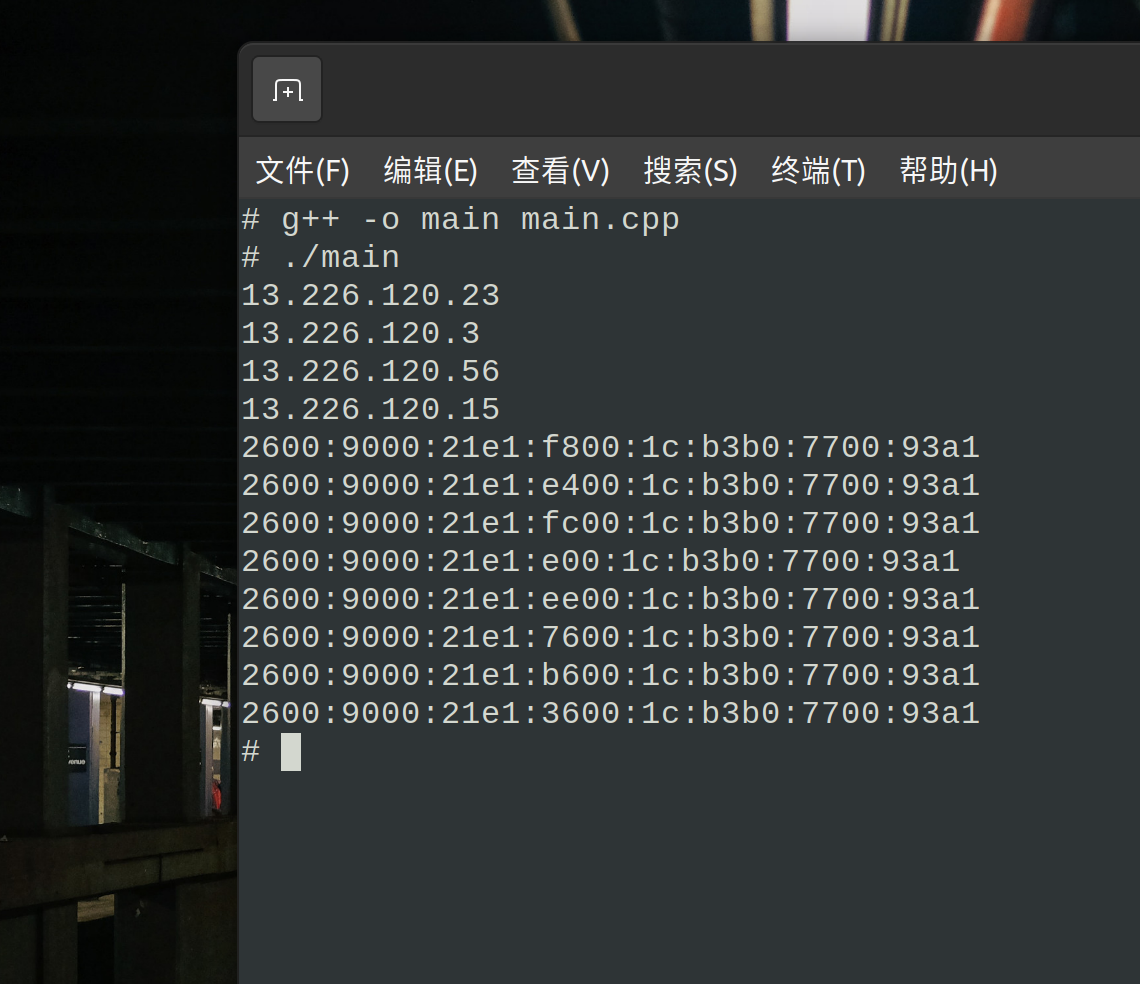
在Linux系统上用C++将主机名称转换为IPv4、IPv6地址
在Linux系统上用C将主机名称转换为IPv4、IPv6地址 功能 指定一个std::string类型的主机名称,函数解析主机名称为IP地址,含IPv4和IPv6,解析结果以std::vector<std::string>类型返回。解析出错或者解析失败抛出std::string类型的异常消…...

【硬件设计】硬件学习笔记二--电源电路设计
硬件学习笔记二--电源电路设计 一、LDO设计1.1 LDO原理1.2 LDO参数1.3 应用 二、DC-DC设计2.1 DC-DC原理2.2 DC-DC参数介绍2.4 DC-DC设计要点2.5 DC-DC设计注意事项 写在前面:本篇笔记来自王工的硬件工程师培训课程,想要学硬件的同学可以去腾讯课堂直接搜…...

day34 集合总结
集合总结 一、概述 作用:存储对象的容器,代替数组的,使用更加的便捷 所处的位置:java.util 体系结构 二、Collection 内部的每一个元素都得是引用数据类型 常用方法 add(Object o) 添加元素 addAll(Collection c) 将指定集…...
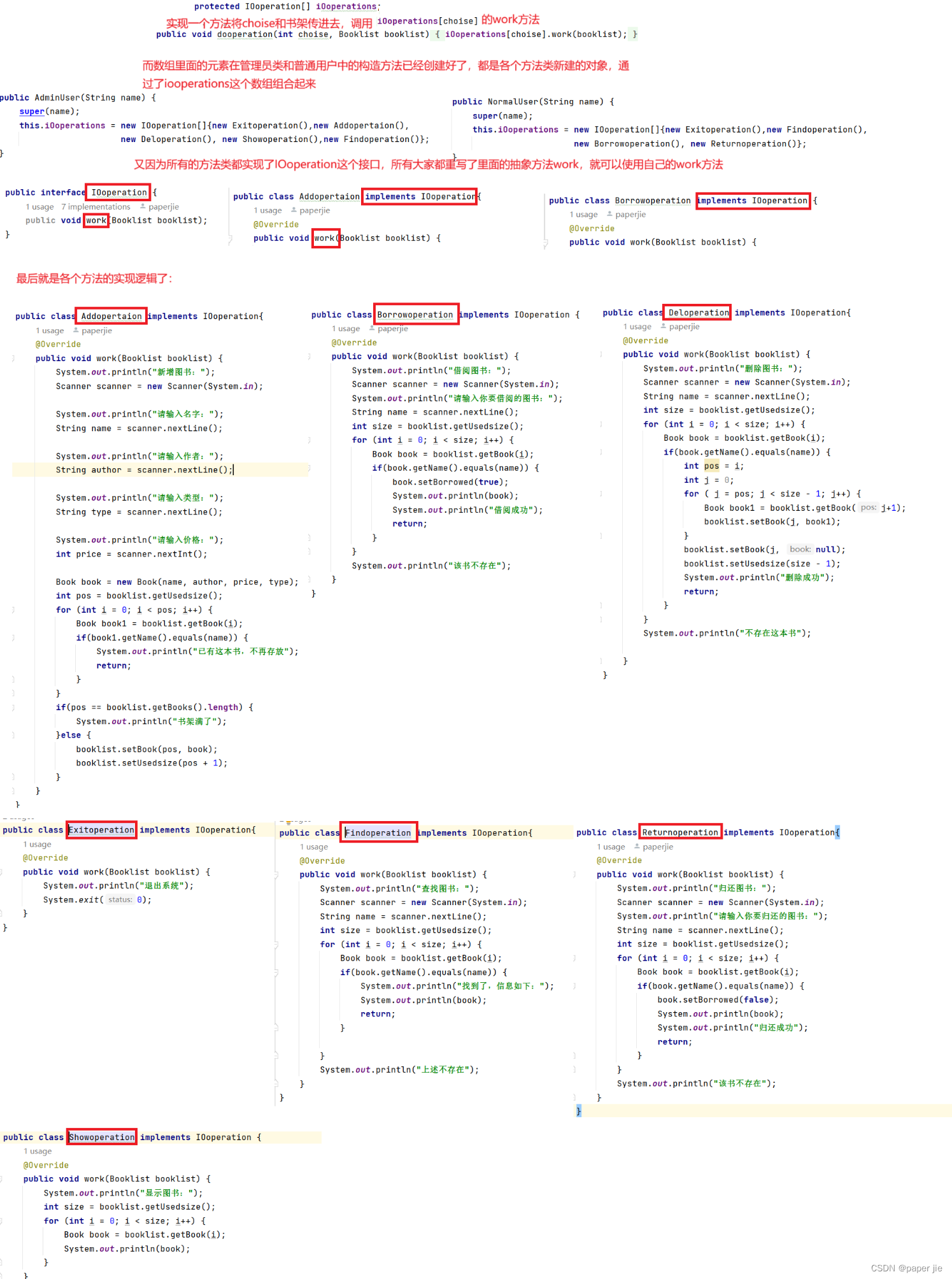
【JAVA】 图书管理系统(javaSE简易版 内含画图分析) | 期末大作业课程设计
作者主页:paper jie 的博客 本文作者:大家好,我是paper jie,感谢你阅读本文,欢迎一建三连哦。 本文录入于《JAVA》专栏,本专栏是针对于大学生,编程小白精心打造的。笔者用重金(时间和精力)打造&…...

区块链技术与应用 - 学习笔记3【比特币数据结构】
大家好,我是比特桃。本系列笔记只专注于探讨研究区块链技术原理,不做其他违反相关规定的讨论。 区块链技术已被纳入国家十四五规划,在“加快数字发展 建设数字中国”篇章中,区块链被列为“十四五”七大数字经济重点产业之一&#…...
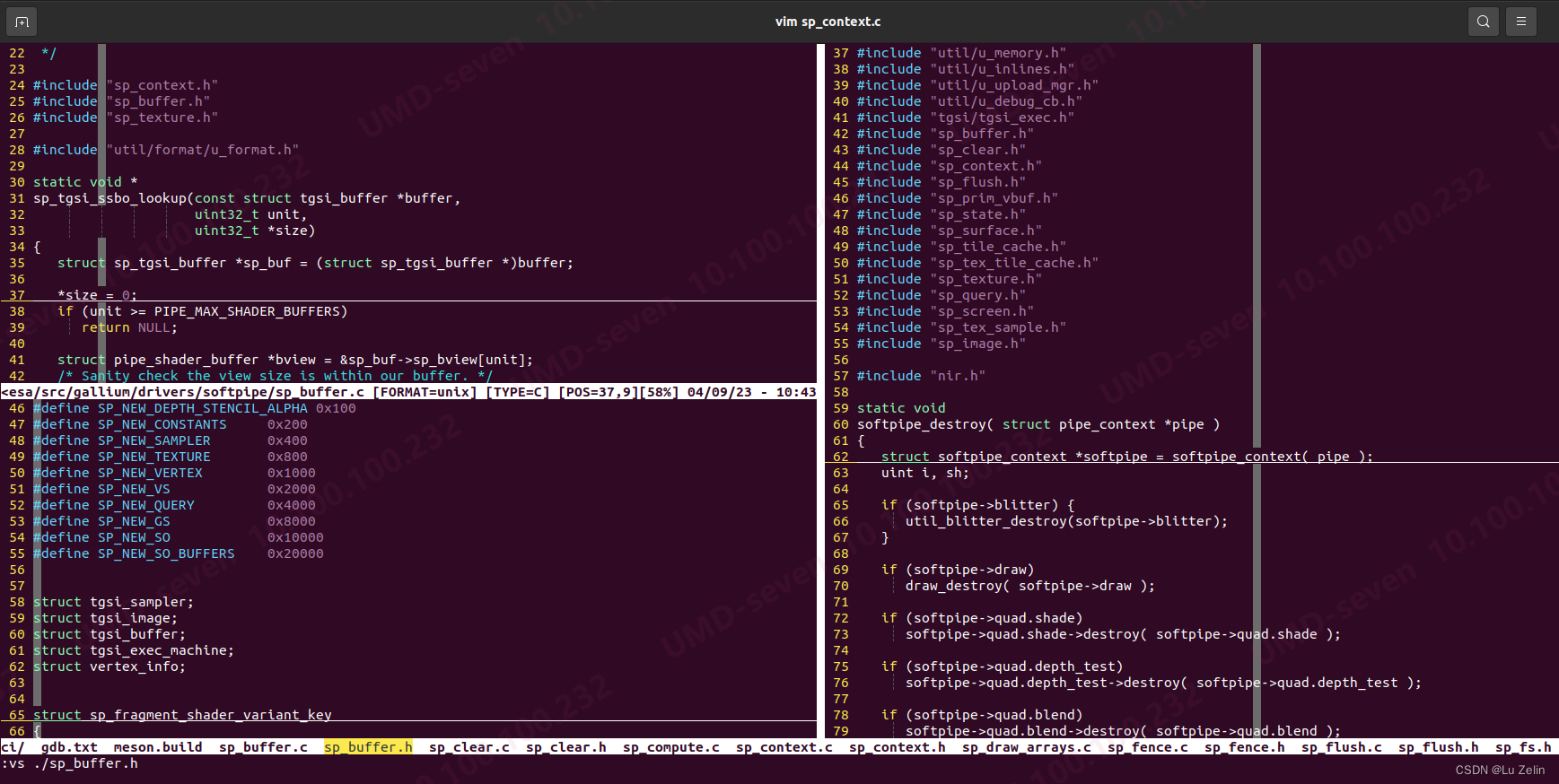
Ubuntu下高效Vim的搭建(离线版)
软件界面 可以看到界面下方有一些常用提示信息:文件路径、format、文件类型、光标所在的坐标(x,y)、进度条(百分比)、日期时间 会提示已定义的变量名词(快速补全) 搭建方法 下载资源文件 把Vim 和 .vimrc 拷贝到家目录下,并执行tar -xvf Vim 即可。 …...

阿里云和腾讯云2核2G服务器价格和性能对比
2核2G云服务器可以选择阿里云服务器或腾讯云服务器,腾讯云轻量2核2G3M带宽服务器95元一年,阿里云轻量2核2G3M带宽优惠价108元一年,不只是轻量应用服务器,阿里云还可以选择ECS云服务器u1,腾讯云也可以选择CVM标准型S5云…...
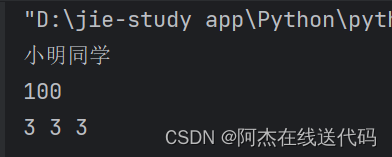
PYTHON(一)——认识python、基础知识
一、为什么要学习python? Python 被认为是人工智能、机器学习的首选语言,可以说是全世界最流行通用范围最广的语言,几乎可以完成所有的任务,像设计游戏、建网站、造机器人甚至人工智能等都广泛使用Python。 二、输出(…...
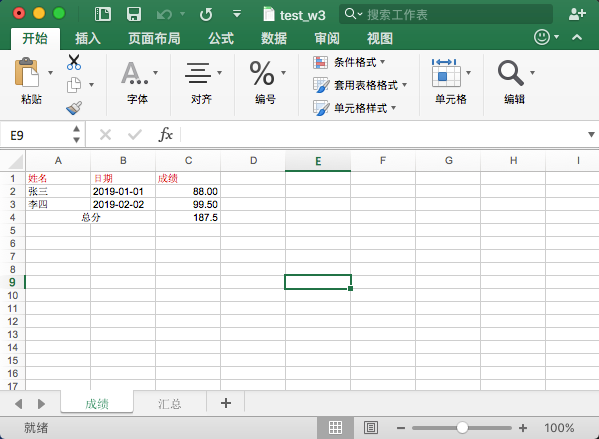
Python 操作 Excel
之前看过一篇文章,说一个工作多年的老员工,处理数据时只会用复制粘贴到 Excel ,天天加班工作还完不成,后来公司就招了一个会 Python 的新人,结果分分钟就处理完成。所以工作中大家经常会使用 Excel 去处理以及展示数据…...
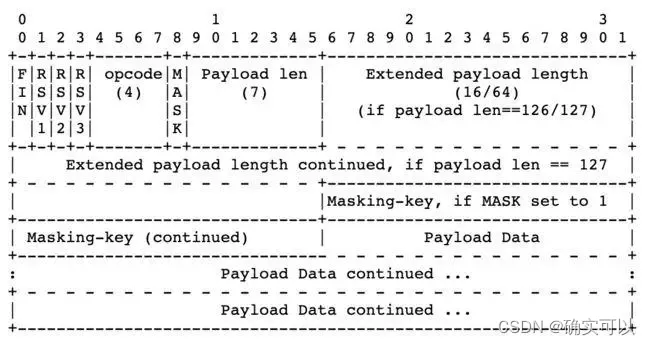
21.添加websocket模块
这里默认读者了解websocket协议,若是还不了解可以看下这篇文章wesocket协议。 websocket主要有三个步骤,1通过HTTP进行握手连接,2进行双向通信,3.协商断开连接 第一步的握手连接需要HTTP,所以还需要使用到上一节讲解…...
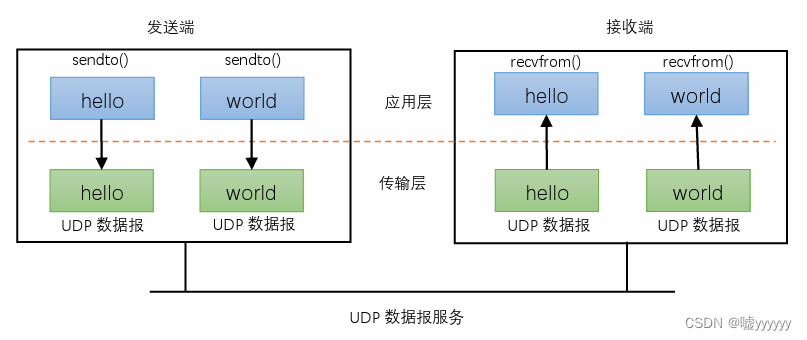
Linux UDP编程流程
文章目录 UDP编程流程UDP协议无连接的特点UDP协议数据报的特点 UDP编程流程 UDP 提供的是无连接、不可靠的、数据报服务。服务器端和客户端没有什么本质上的区别。编程流程如下: socket()用来创建套接字,使用 udp 协议时,选择数据报服务 SOC…...

【opencv】多版本安装
安装opencv3.2.0以及对应的付费模块 一、安装多版本OpenCV如何切换 按照如下步骤安装的OpenCV,在CMakeLists.txt文件中,直接指定opencv的版本就可以找到相应版本的OpenCV,为了验证可以在CMakeLists.txt文件中使用如下指令输出版本验证&…...
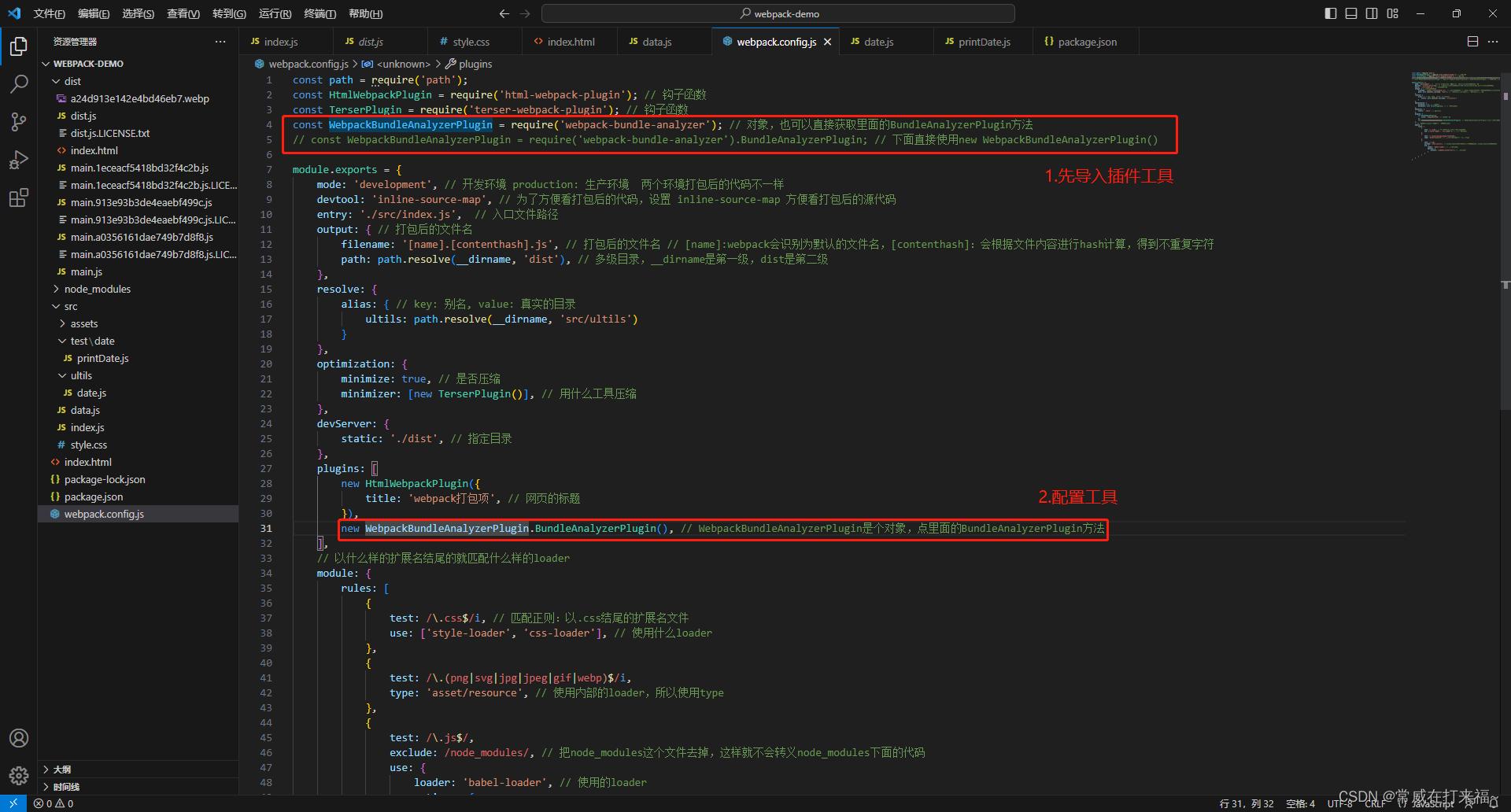
webpack打包常用配置项
webpack打包配置项 参考链接 文件结构:最基础版 先安装 npm i webpack webpack-cli --dev 运行命令:npx webpack 进行打包 1. 配置webpack.config.js文件: const path require(path); module.exports {mode: development, // 开发环境 …...
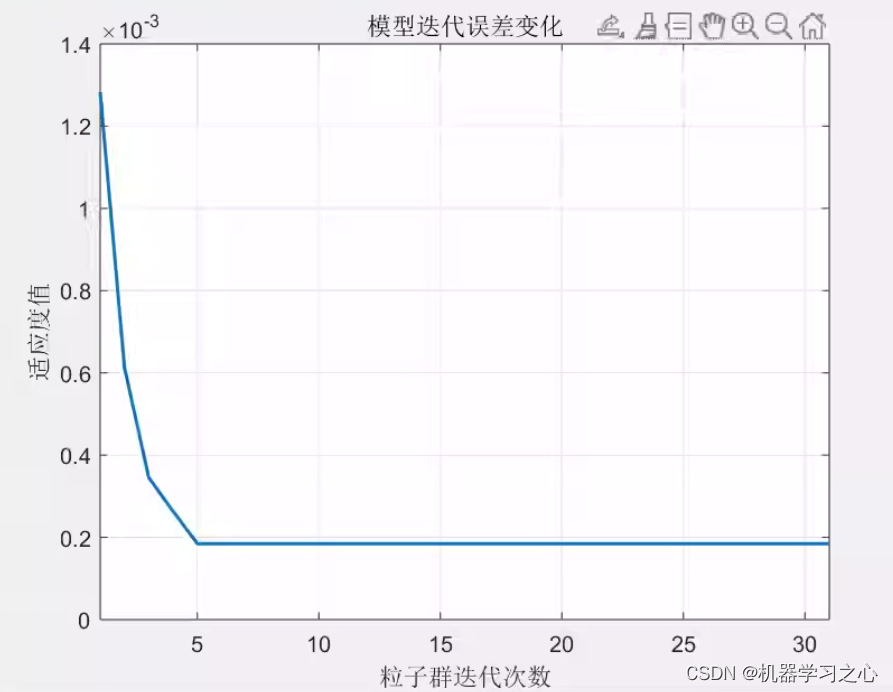
回归预测 | MATLAB实现MPA-BiGRU海洋捕食者算法优化双向门控循环单元多输入单输出回归预测(多指标,多图)
回归预测 | MATLAB实现MPA-BiGRU海洋捕食者算法优化双向门控循环单元多输入单输出回归预测(多指标,多图) 目录 回归预测 | MATLAB实现MPA-BiGRU海洋捕食者算法优化双向门控循环单元多输入单输出回归预测(多指标,多图&a…...

selenium_webdriver自动化测试指南
目录 1 引言 4 1.1 目的.. 4 1.2 背景.. 4 1.3 参考资料.. 4 2 安装并引用Selenium2. 5...
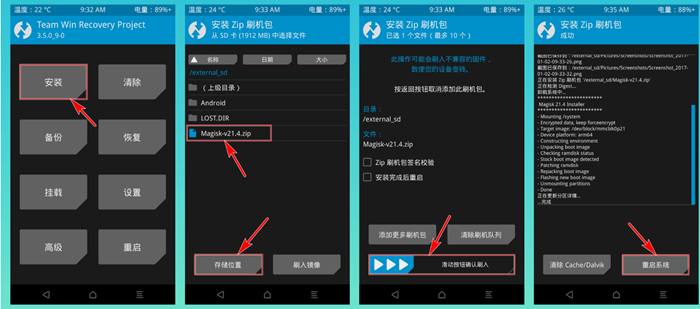
红米Note12Turbo解锁BL刷入PixelExperience原生ROM系统详细教程
红米Note12Turbo的兄弟是国外POCO F5 机型,并且该机性价比非常高,国内外销量也还可以,自然不缺第三方ROM适配。目前大家心心念念的原生PixelExperience已成功发布,并且相对来说,适配程度较高,已经达到日用的…...

NoSQL之Redis配置与优化(一)
关系数据库与非关系型数据库 : ●关系型数据库: 关系型数据库是一个结构化的数据库,创建在关系模型(二维表格模型)基础上,一般面向于记录。 SQL 语句(标准数据查询语言)就是一种基于…...
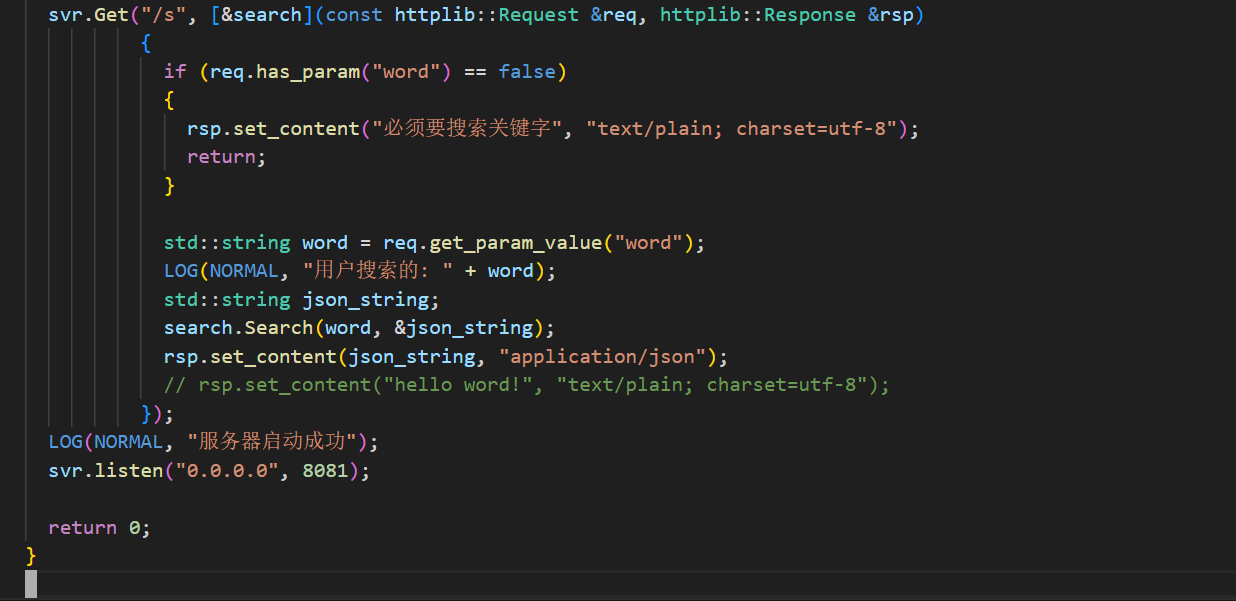
Boost搜索引擎
项目背景 先说一下什么是搜索引擎,很简单,就是我们平常使用的百度,我们把自己想要所有的内容输入进去,百度给我们返回相关的内容.百度一般给我们返回哪些内容呢?这里很简单,我们先来看一下. 搜索引擎基本原理 这里我们简单的说一下我们的搜索引擎的基本原理. 我们给服务器发…...

侧边栏的文章分类、热门文章和热门文章的展示(Go 搭建 qiucode.cn 之九)
早就有言,秋码记录 虽早已不是原来的面貌,但这终究是不防碍我们使用golang来搭建它。 而又为什么是使用golang呢?并非是其他编程语言呢?想必 时候回答【我为什么要学习 Go 语言(golang)】这个问题了 已经给出了答案! 当然,当初学习golang时,不单单是为了搭建一个博客应…...

LeetCode——贪心篇(二)
刷题顺序及思路来源于代码随想录,网站地址:https://programmercarl.com 134. 加油站 在一条环路上有 n 个加油站,其中第 i 个加油站有汽油 gas[i] 升。 你有一辆油箱容量无限的的汽车,从第 i 个加油站开往第 i1 个加油站需要消耗…...

Linux find
1.find介绍 linux查找命令find是linux运维中很重要、很常用的命令之一,find用于根据指定条件的匹配参数来搜索和查找文件和目录列表,我们可以通过权限、用户、用户组、文件类型、日期、大小等条件来查找文件。 2.find语法 find语法 find [查找路径] …...

UE4实现断线重连功能
断线重连的整体逻辑是 设备离线后,根据需要决定是否保留pawn,还是设备重连后再重新生成一个,然后是断线重连时的验证方式,最后是playerstate重连后的属性保留 重载Playercontroller的PawnLeavingGame,这里是设备断线后࿰…...

nginx笔记
1. nginx 简介 nginx性能比apache强,体现 在io模型方面 76 Pv: UV : 不同浏览器是不同的UV GET 获取 POST 上传 HEAT 只看头 访问网站的流程 1.dns解析 2.cdn 3.tcp 4.web服务器 处理 建立连接 接收请求 处理请求 GET POST等 获取资源 构…...

动态库的制作和使用
动态库和静态库的工作原理 配置环境变量 方式1: 坏处:环境变量是临时的 方式2: 1 用户级别的配置: 进入到/home,找到.bashrc,进入 先去找到库的路径 然后再到.bashrc最后一行输入路径 使其生效 2 系统…...

AWS Glue Pyspark+Athena基础学习汇总
Pyspark 基础学习汇总篇🍎 一、AWS 架构 ① AWS Glue:工作平台,包括脚本的编写以及管理脚本的运行状态以及调度等(主要:数据库配置、ETL和数据转换脚本编写、调度) ② Amazon S3 数据湖(数仓):数据的存储 ③ Athena:(雅典娜)SQL直接编写查询工作台(会产生费用) ④ Q…...

智能合约安全新范式,超越 `require`和`assert`
智能合约安全新范式,超越 require_assert 摘要 不要只为特定的函数写 require 语句;为你的协议写 require 语句。函数遵循检查(requirements)-生效(Effects)-交互(INteractions)协议不变性(Invariants)或 FREI-PI 模式可以帮助你的合约更加安全&#x…...
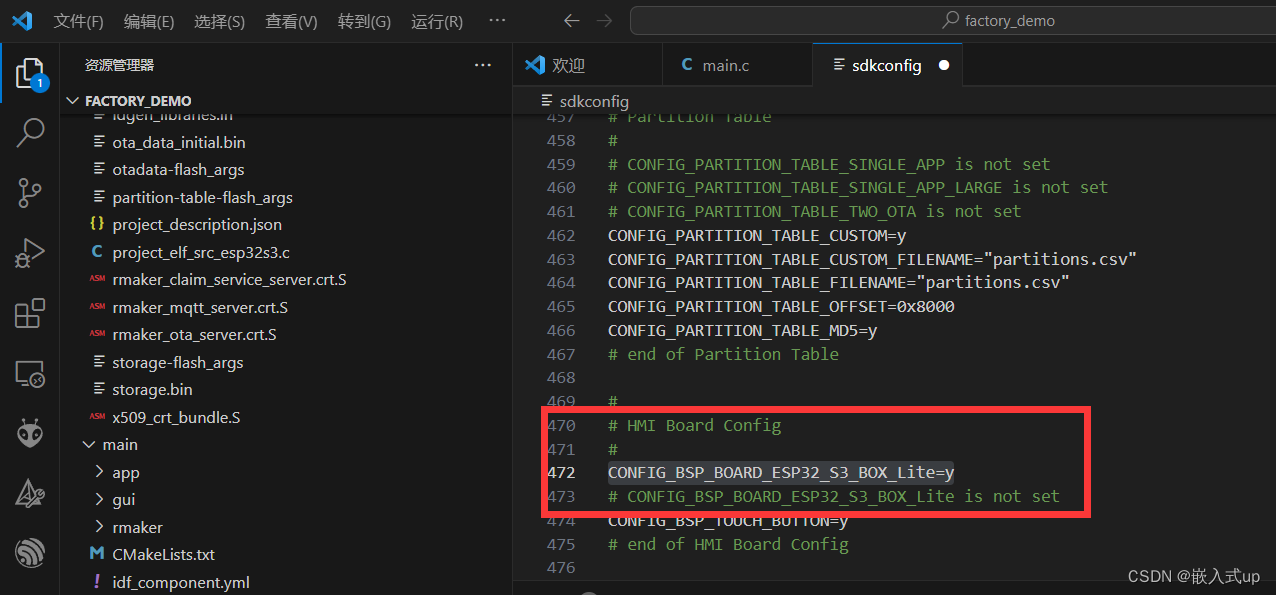
【ESP-S3-BOX-Lite花屏问题】:Github下载源码(出厂源码factory_demo)编译调试到ESP-S3-BOX-Lite中出现花屏现象
项目场景: 最近拿到了一块乐鑫的 ESP-S3-BOX-Lite (esp-box: ESP-BOX 是乐鑫信息科技) 详细资料(esp32_s3_box_lite) 版本信息 ESP-BOX依赖的 ESP-IDF分支信息支持状态master> release/v5.1 commit id: 22cfbf3…...
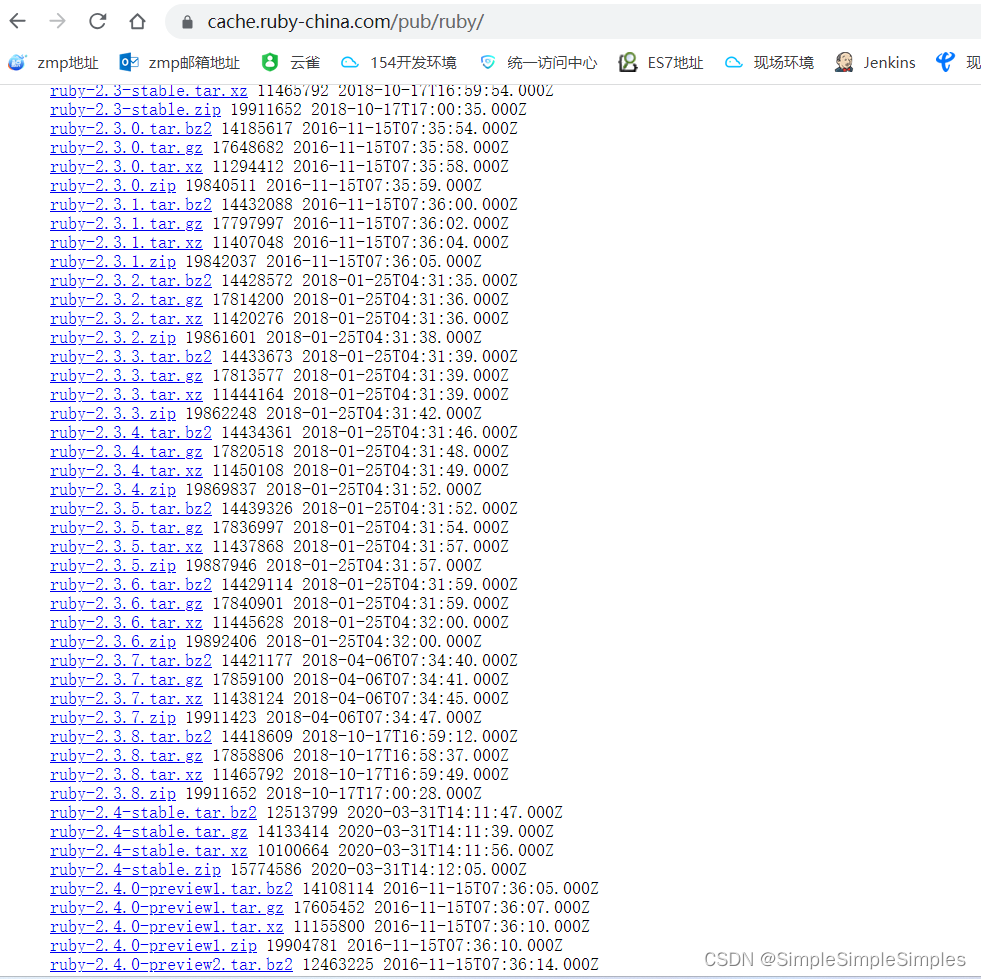
Redis集群3.2.11离线安装详细版本(使用Ruby)
1.安装软件准备 1.Redis版本下载 Index of /releases/http://download.redis.io/releases/ 1.2gcc环境准备 GCC(GNU Compiler Collection,GNU编译器套件)是一套用于编译程序代码的开源编译器工具集。它的主要用途是将高级编程语言(如C、C++、Fortran等)编写的源代码转换…...
